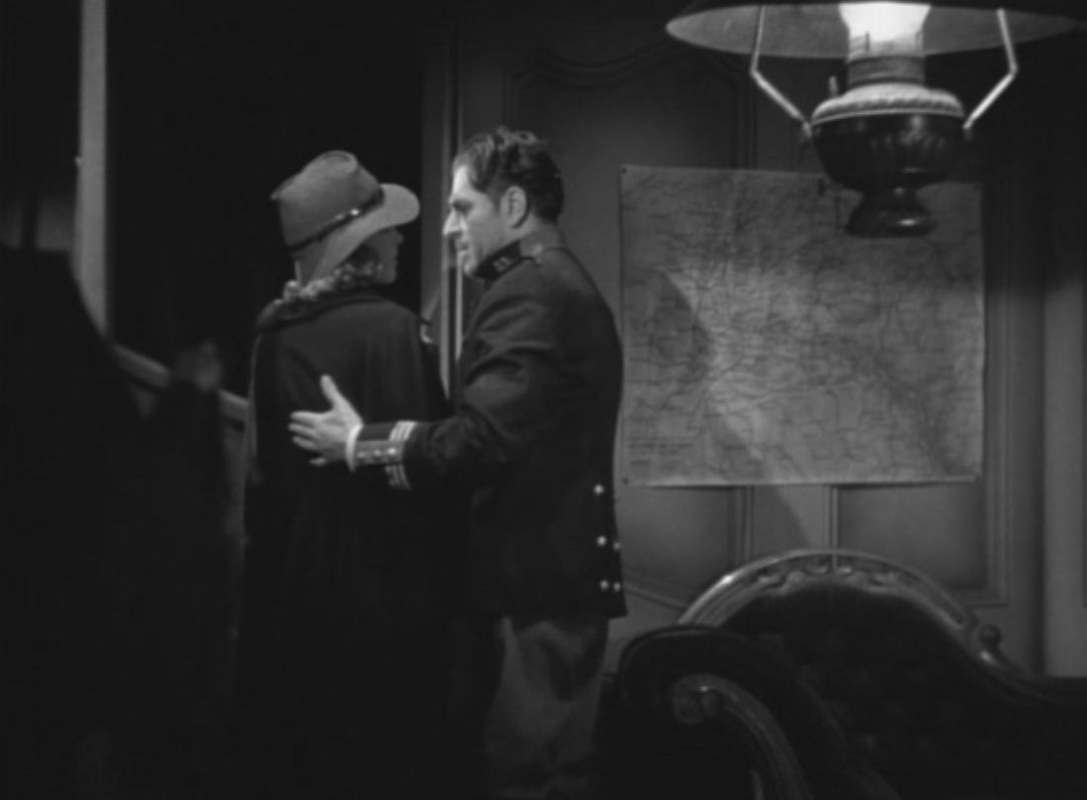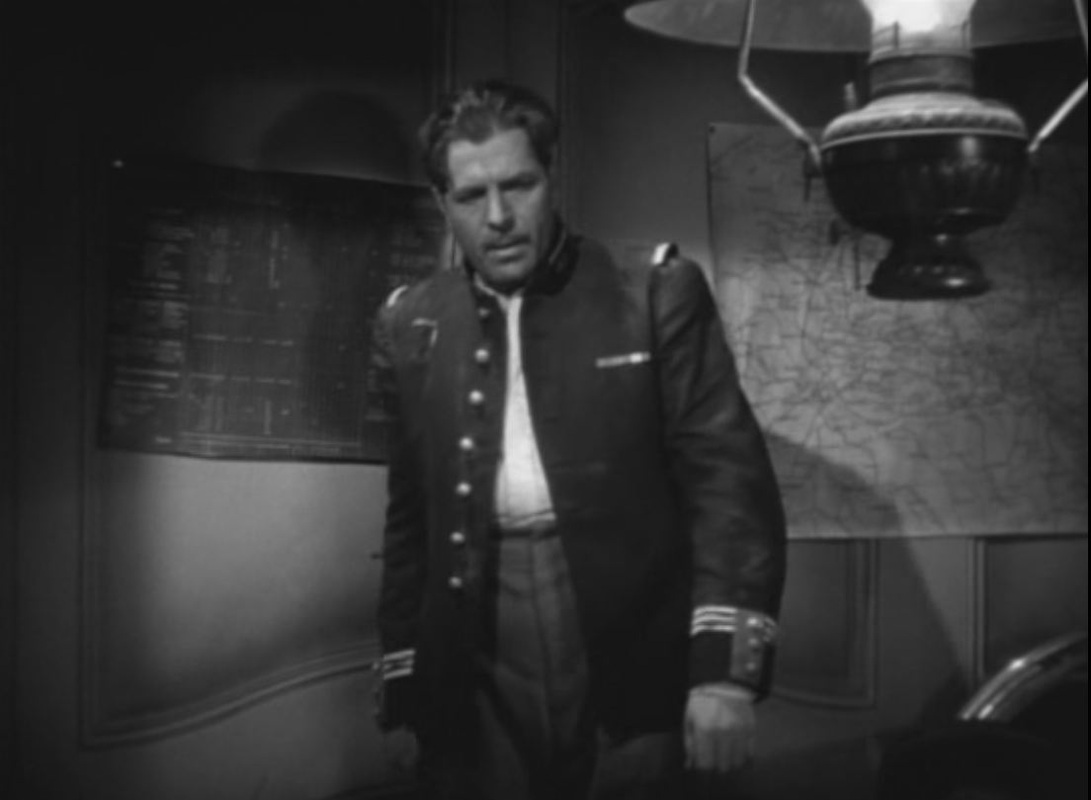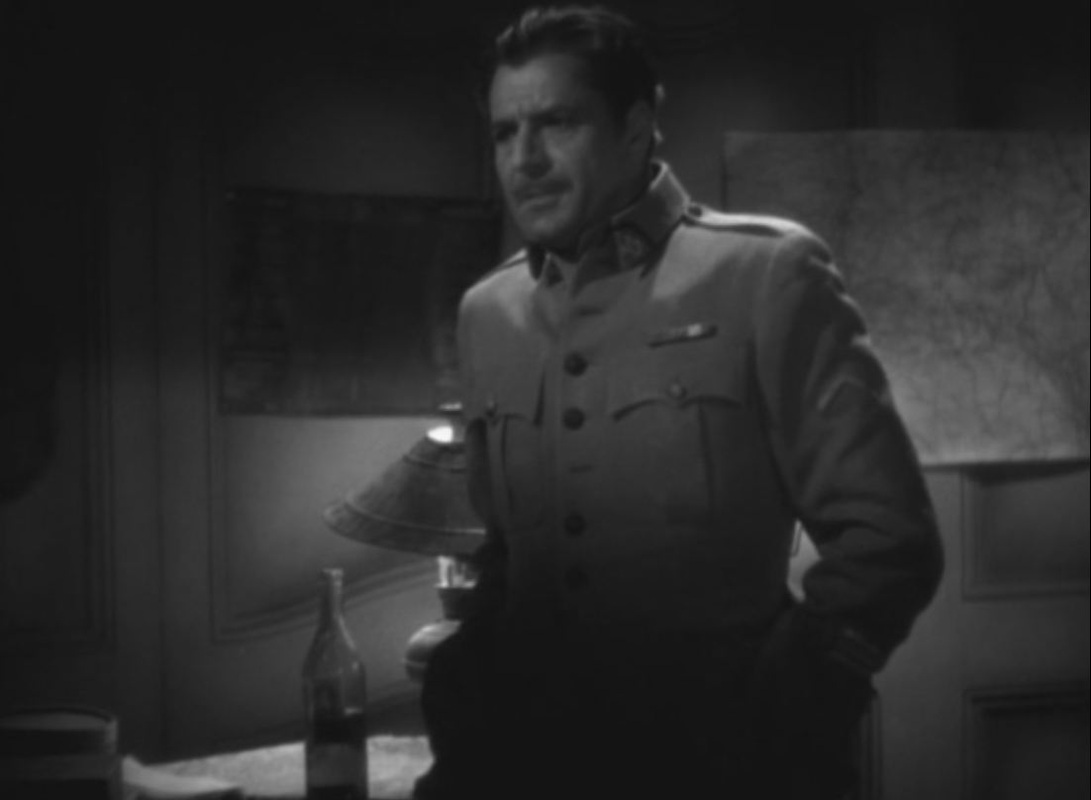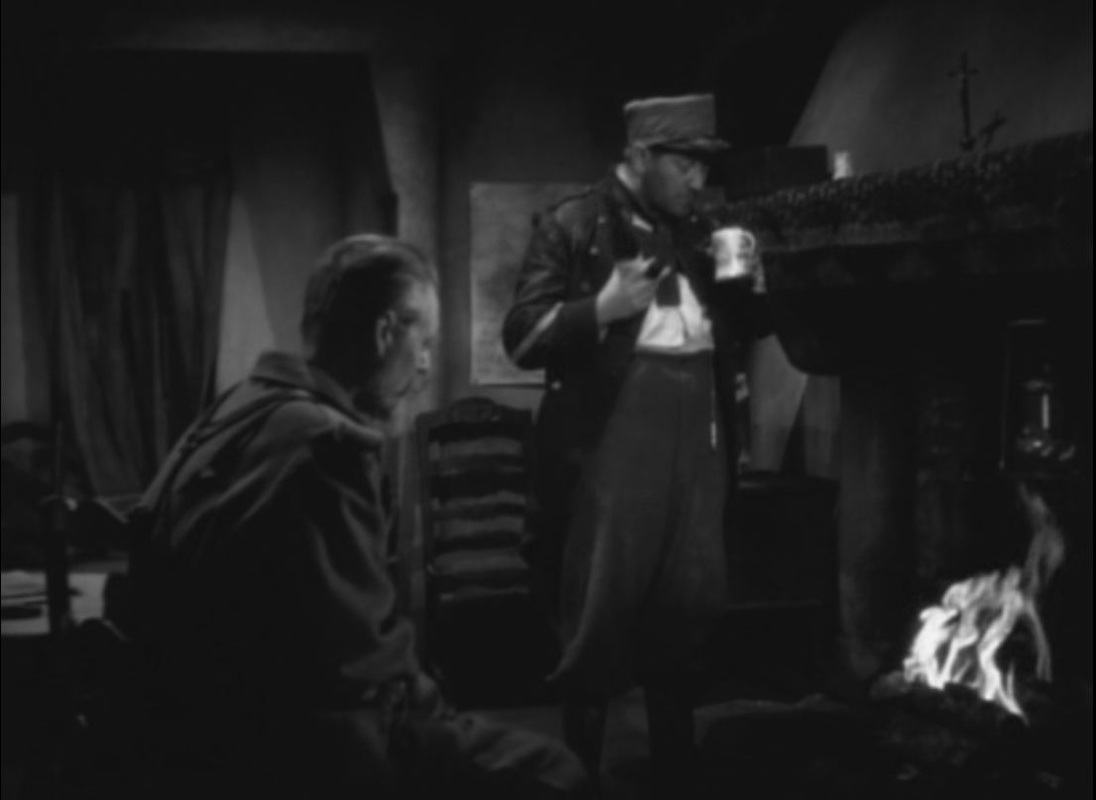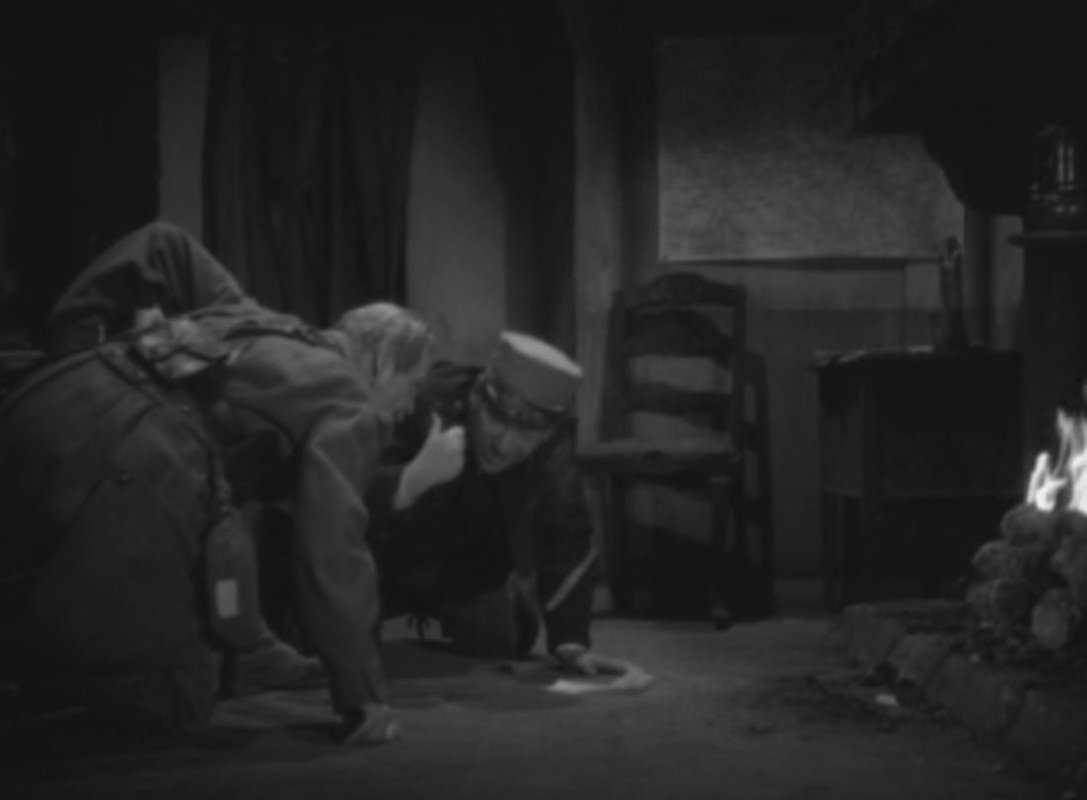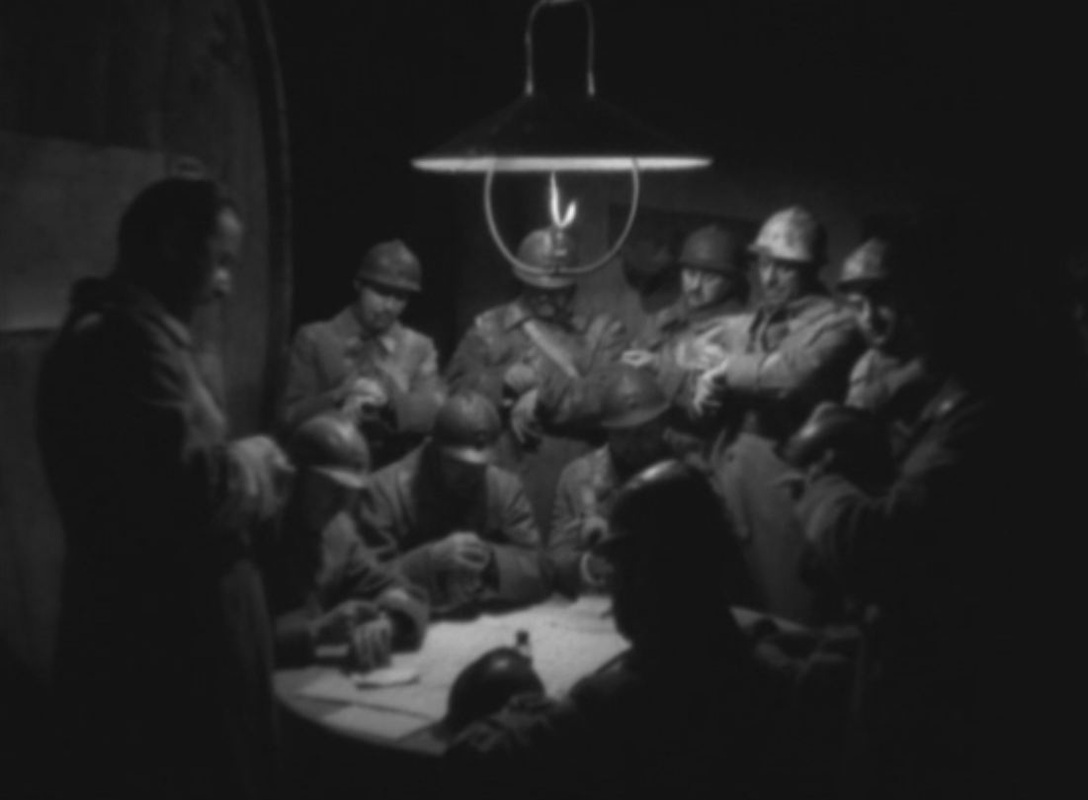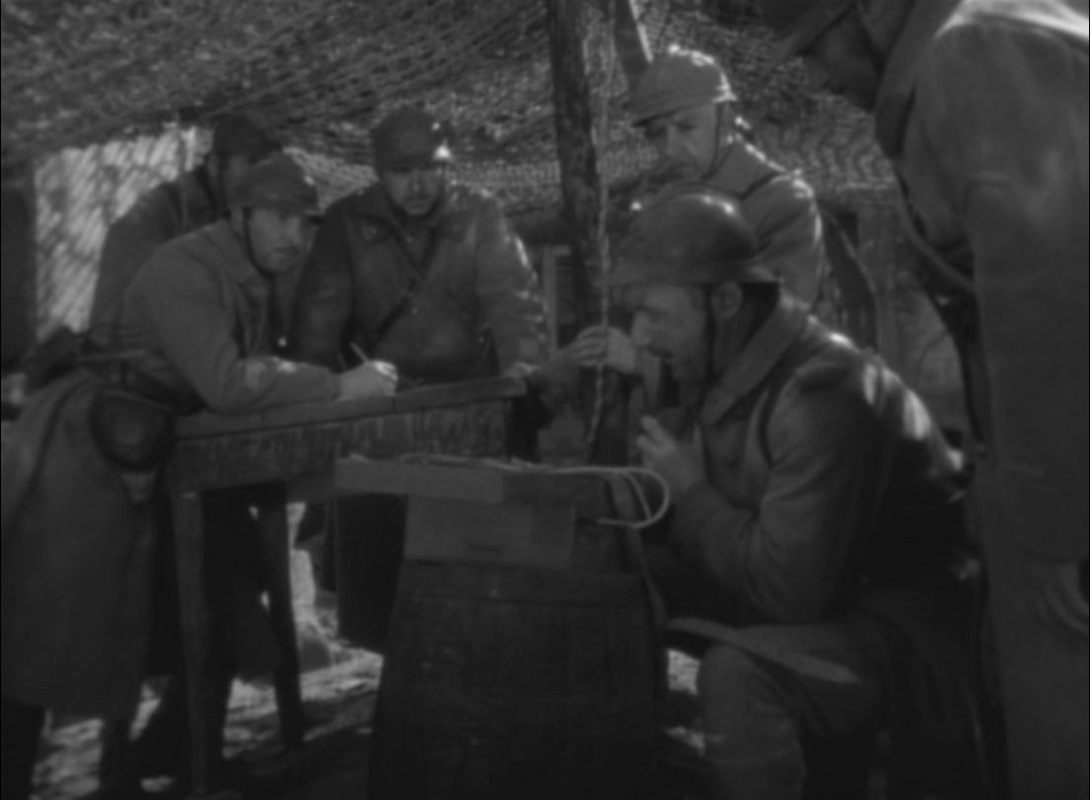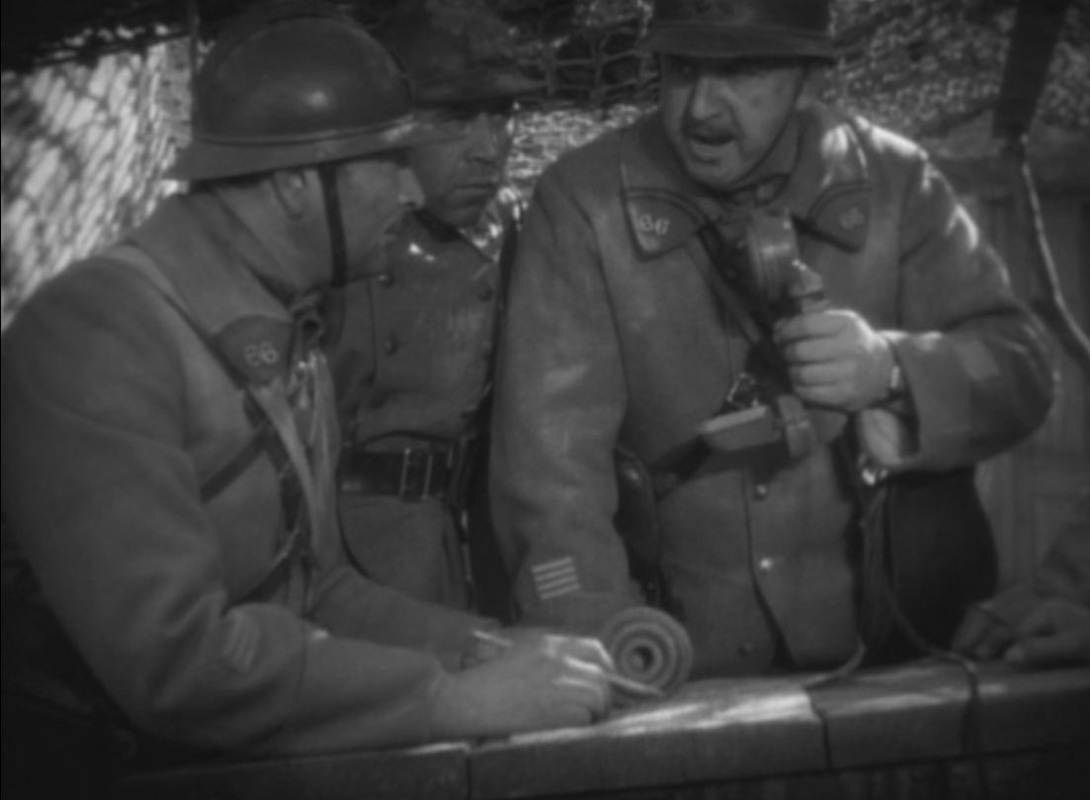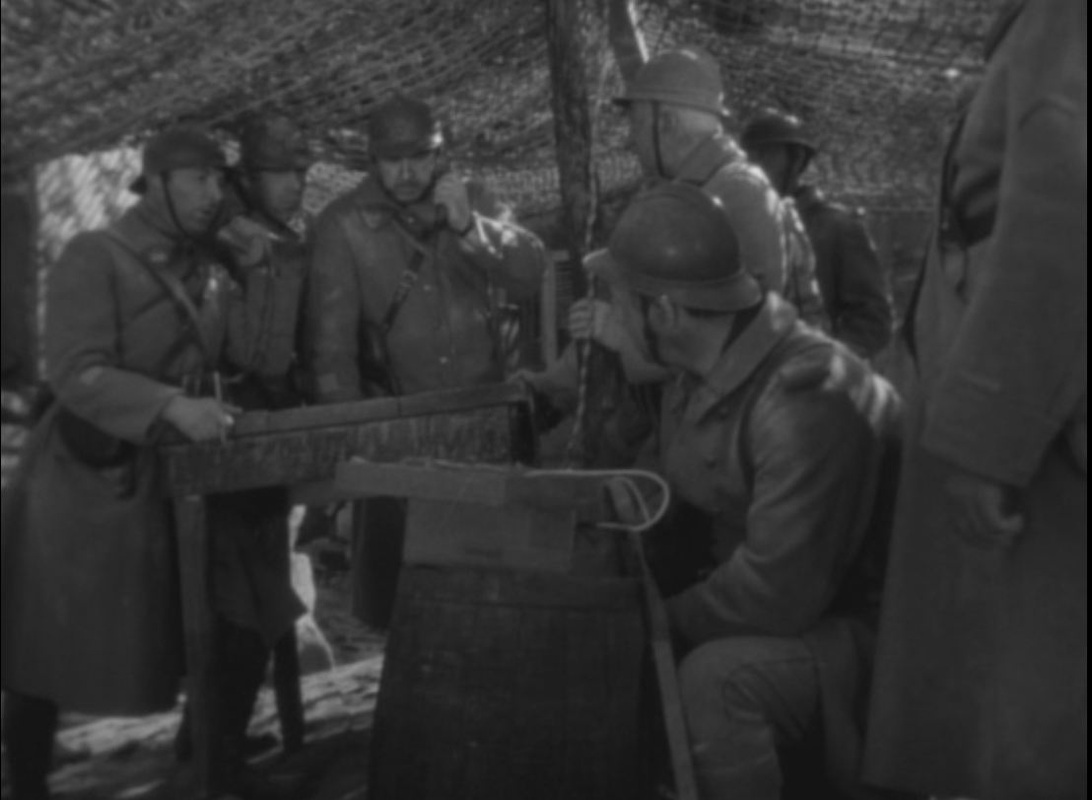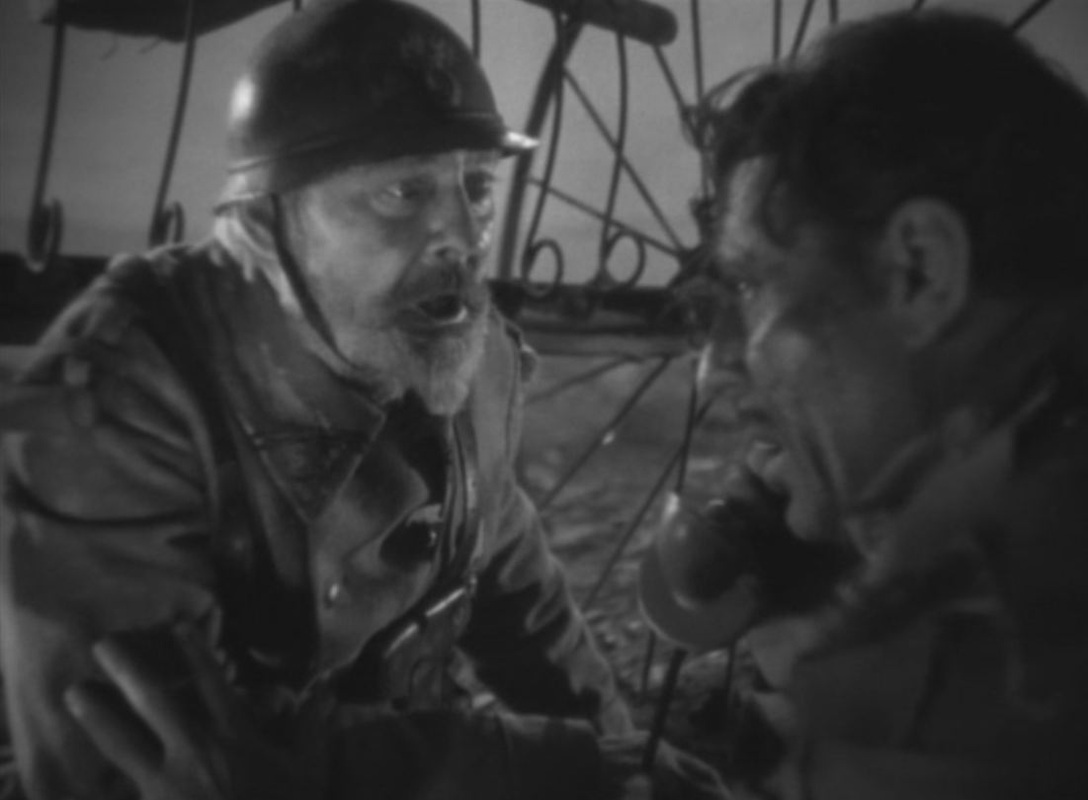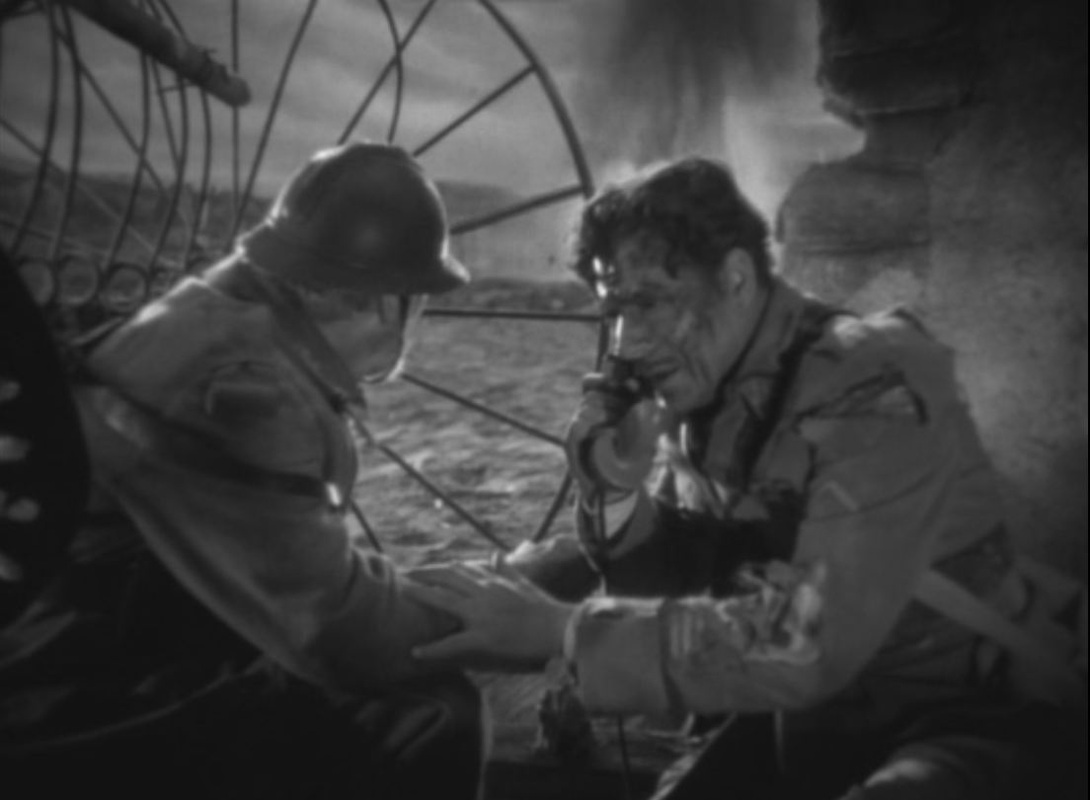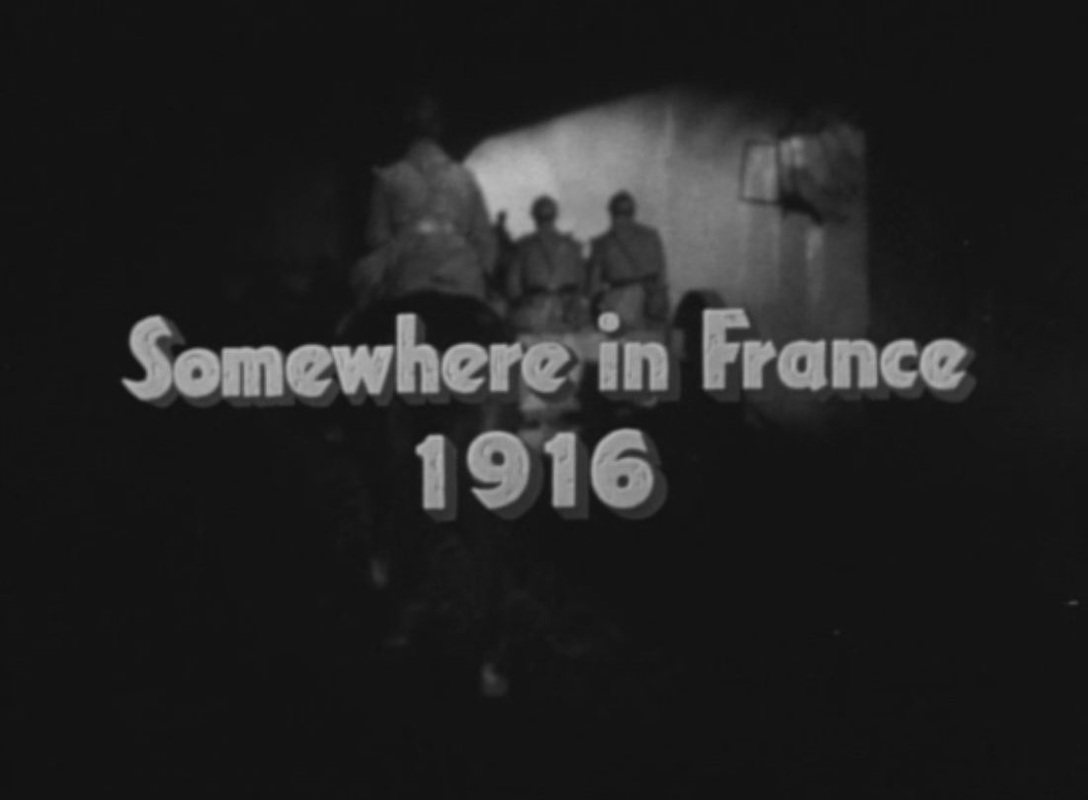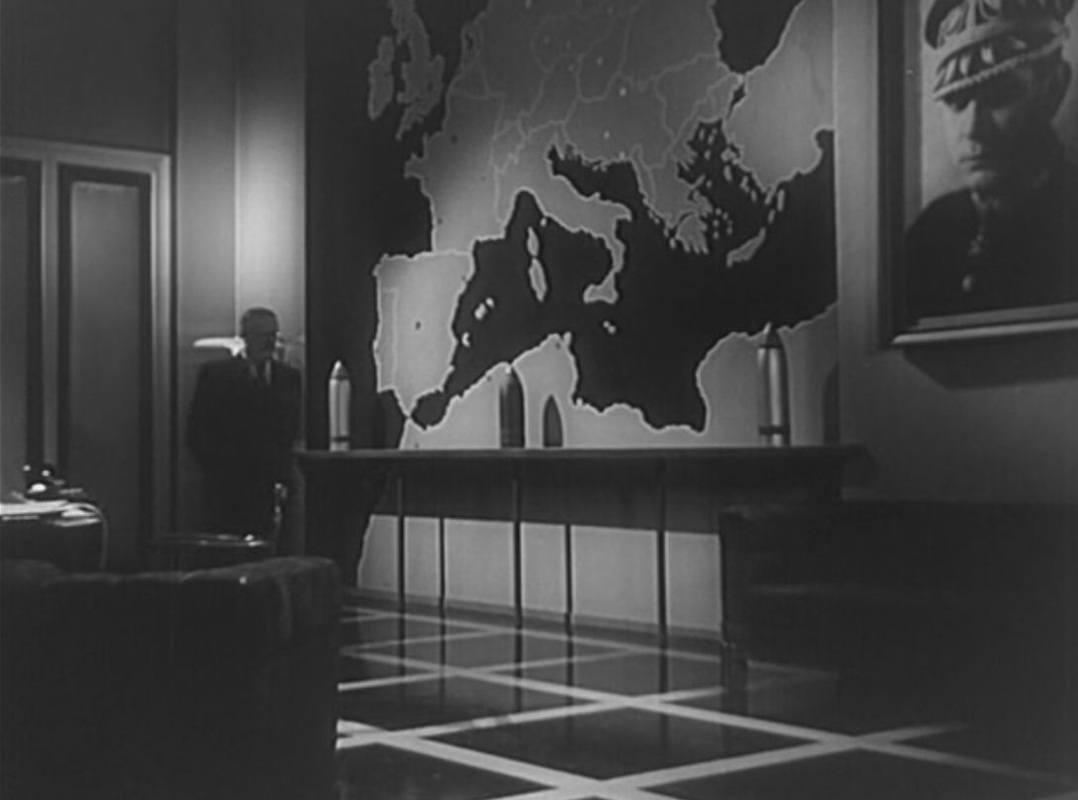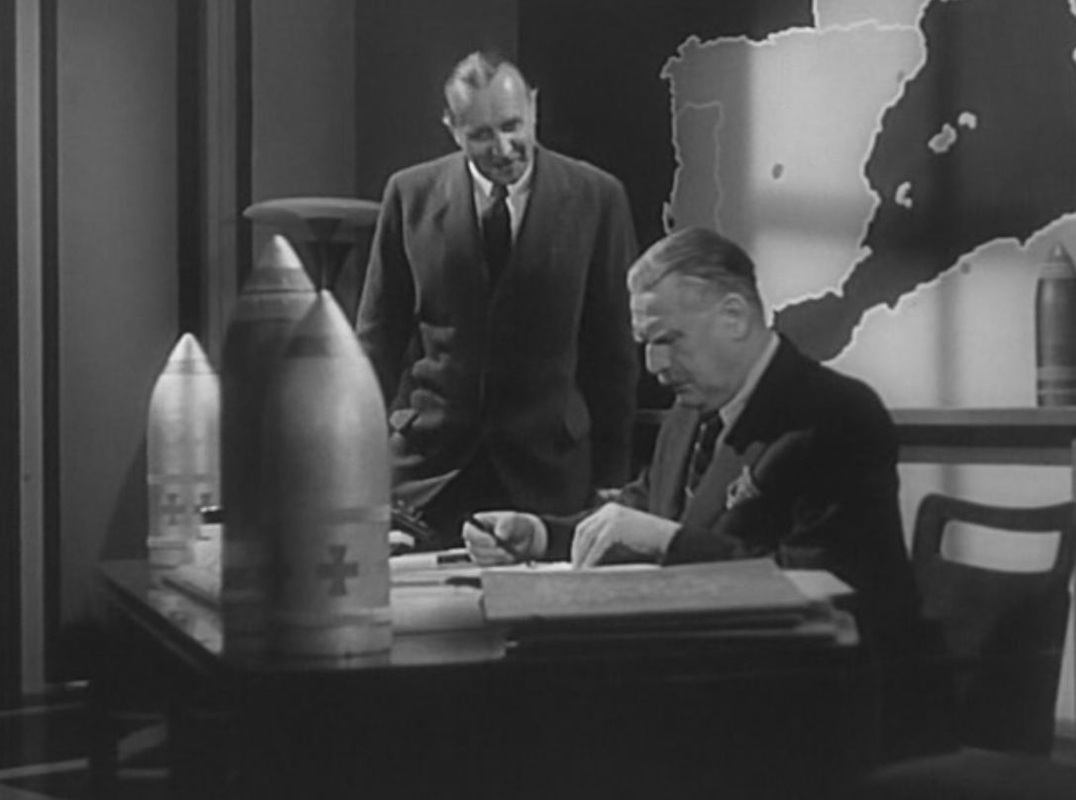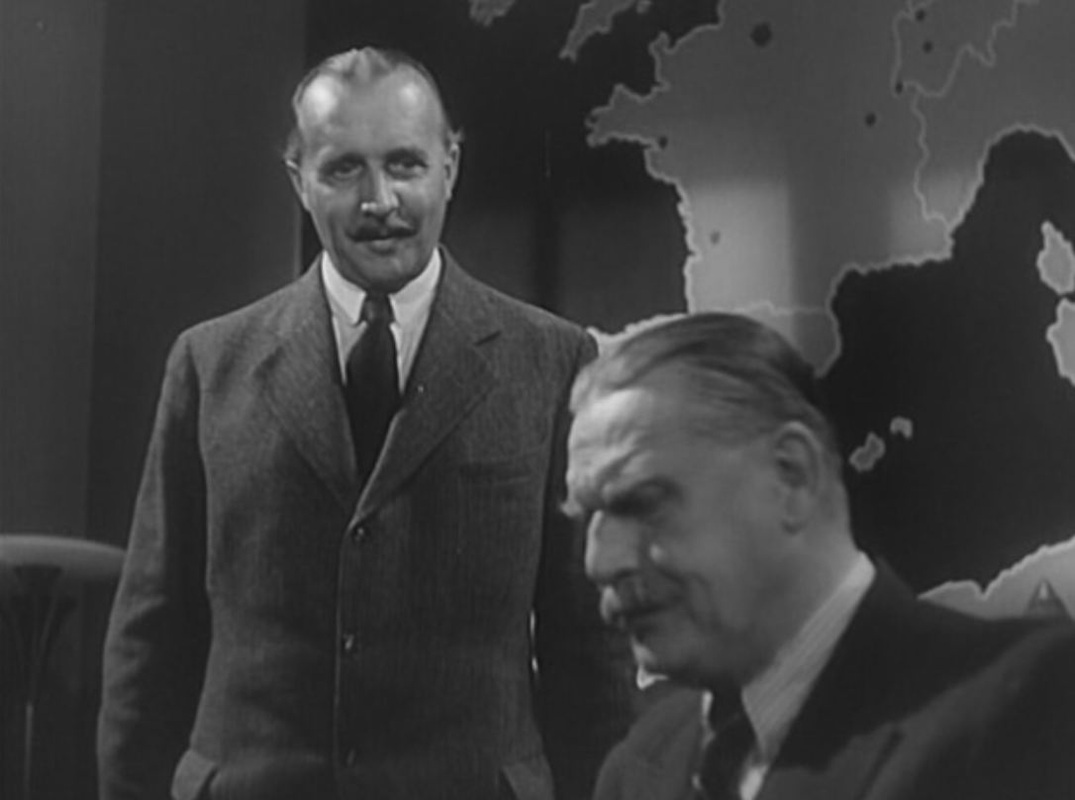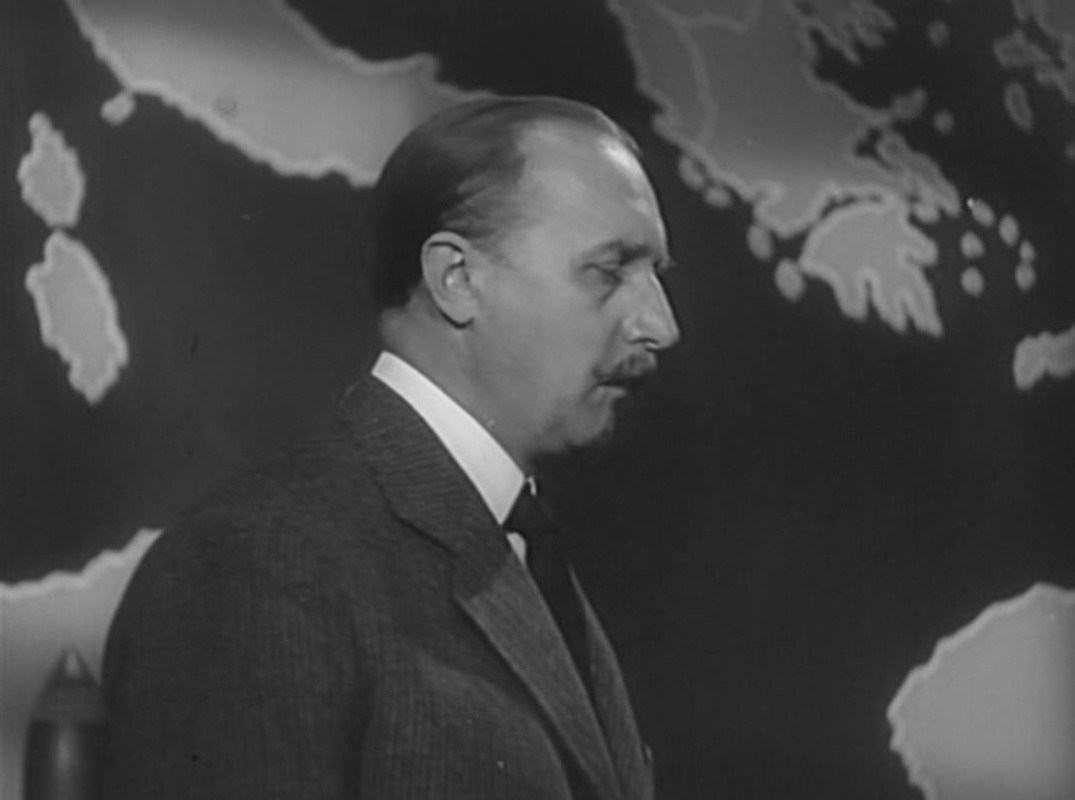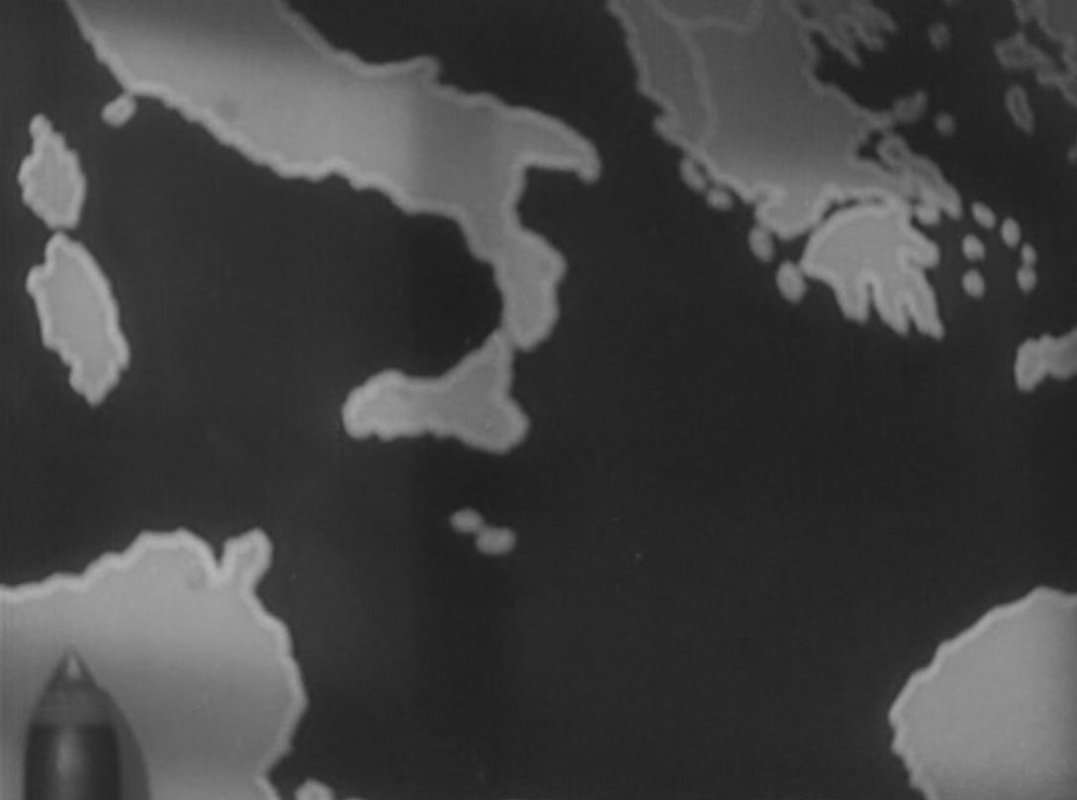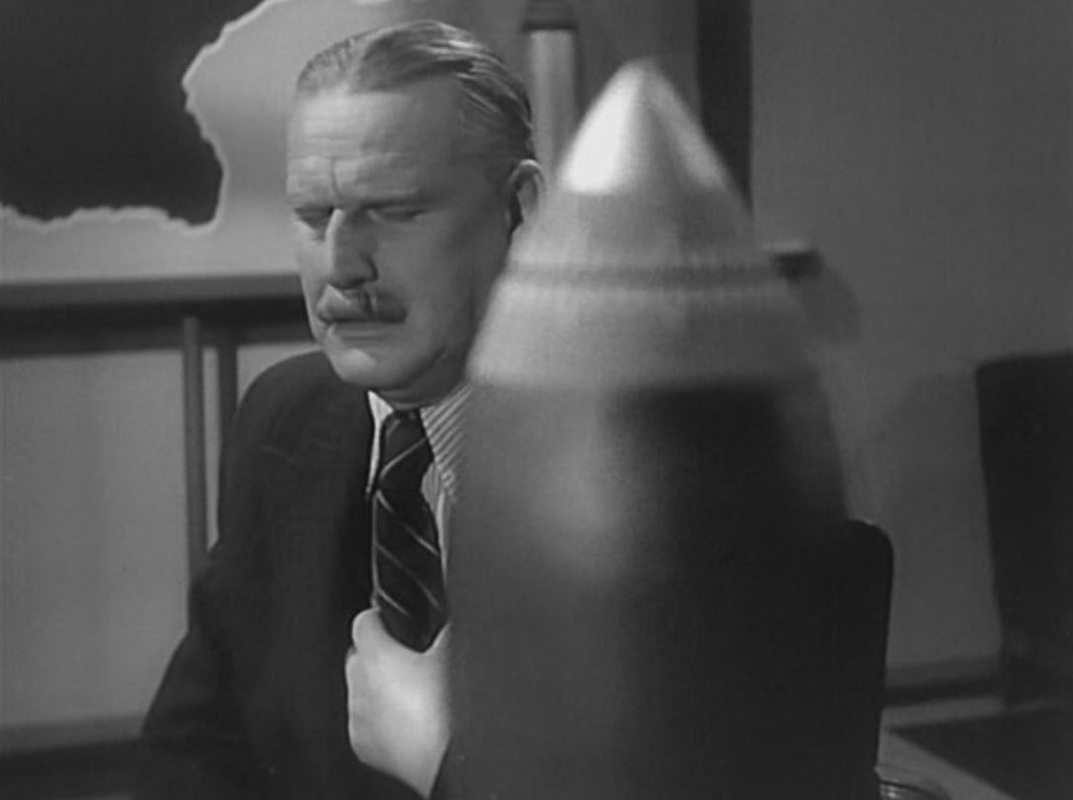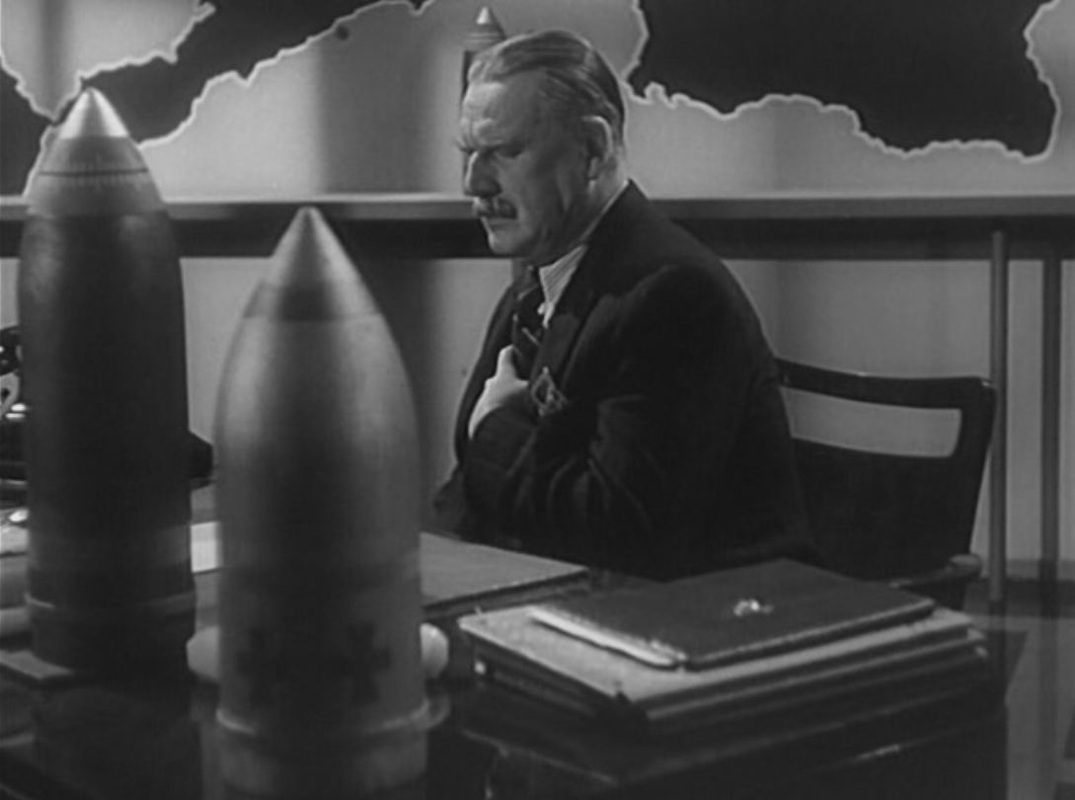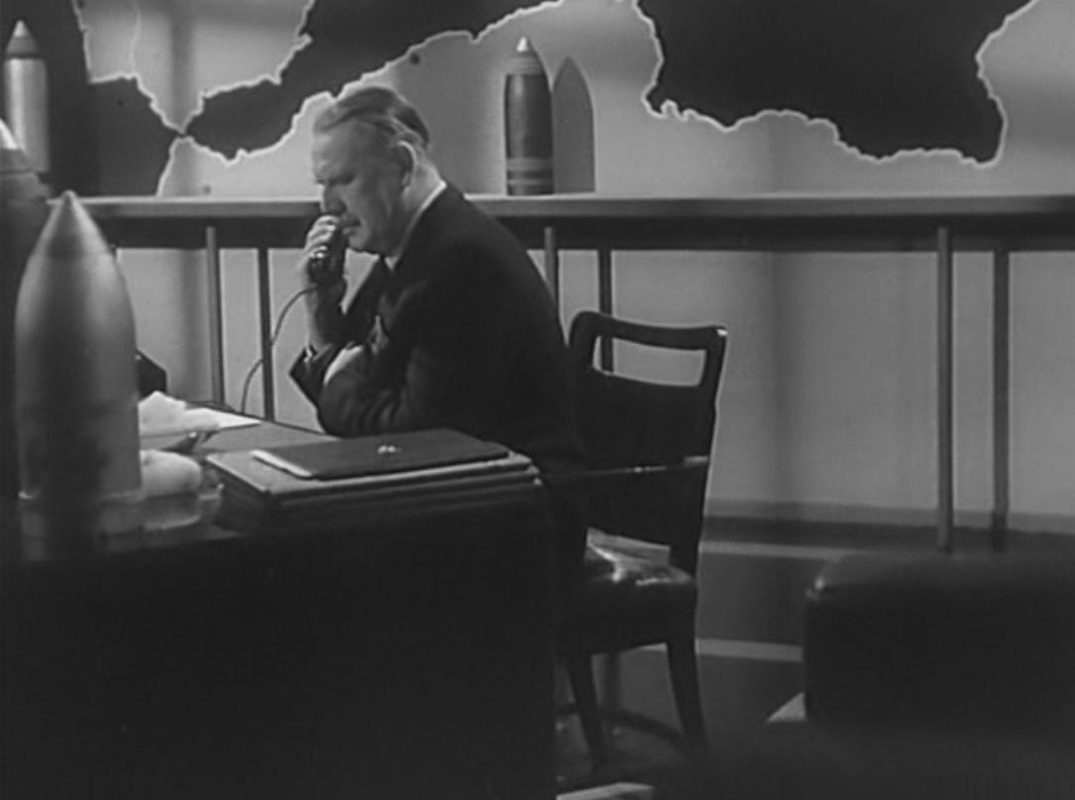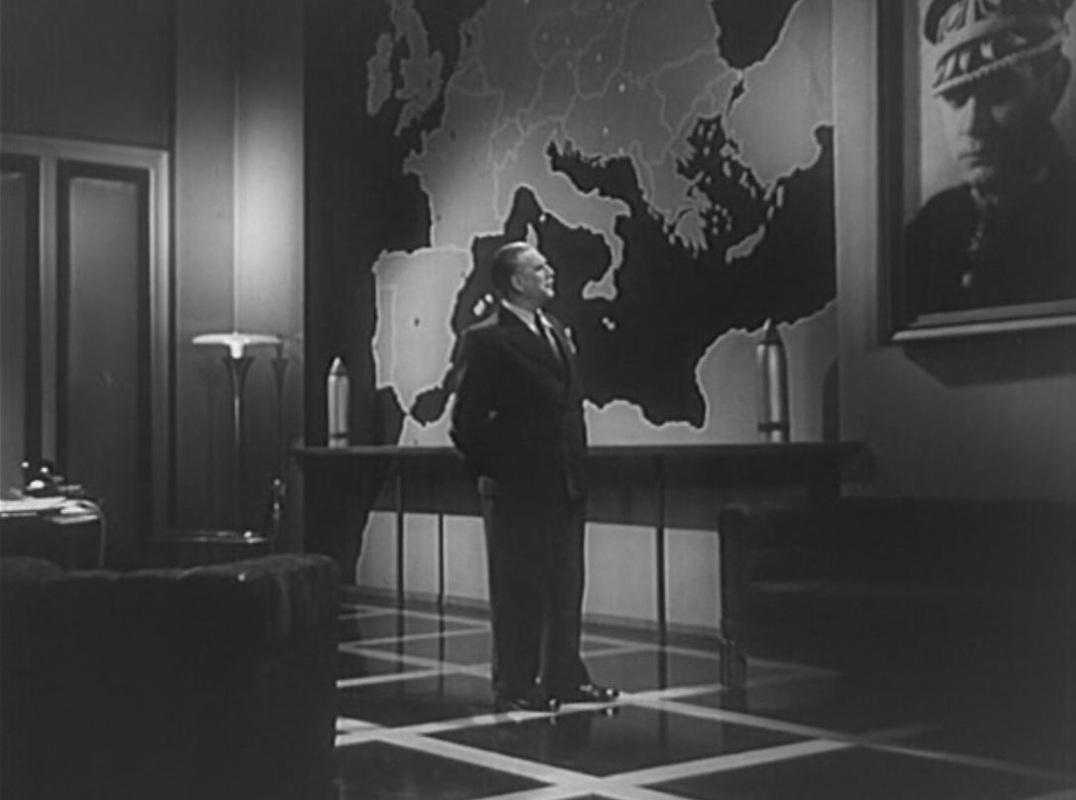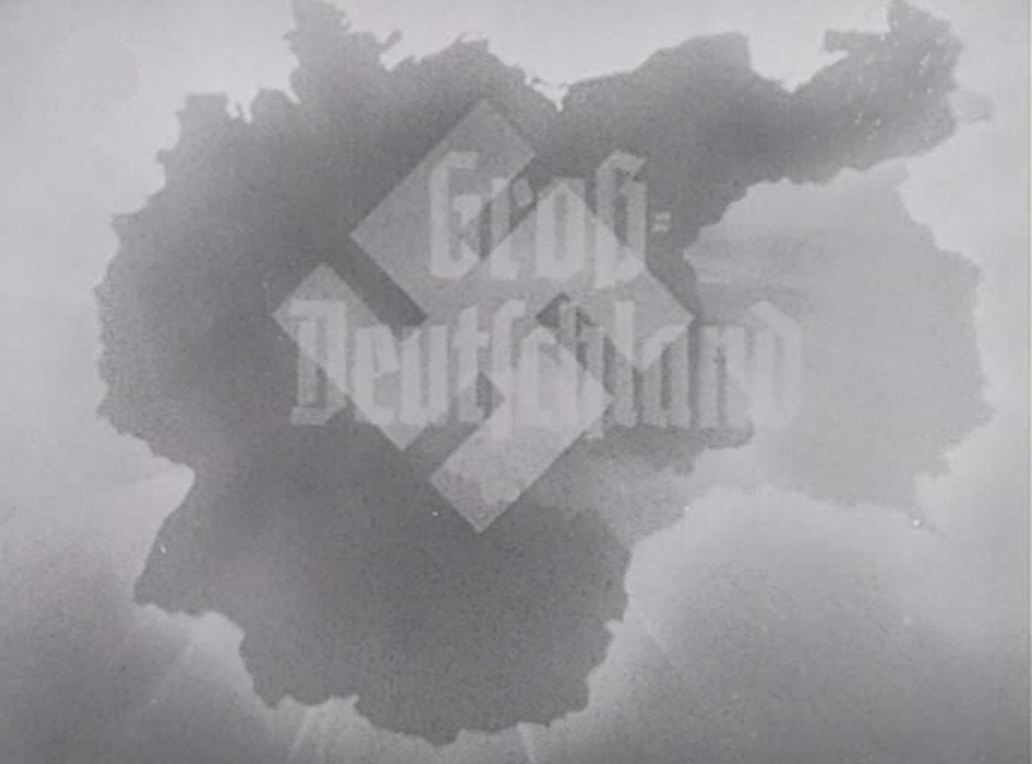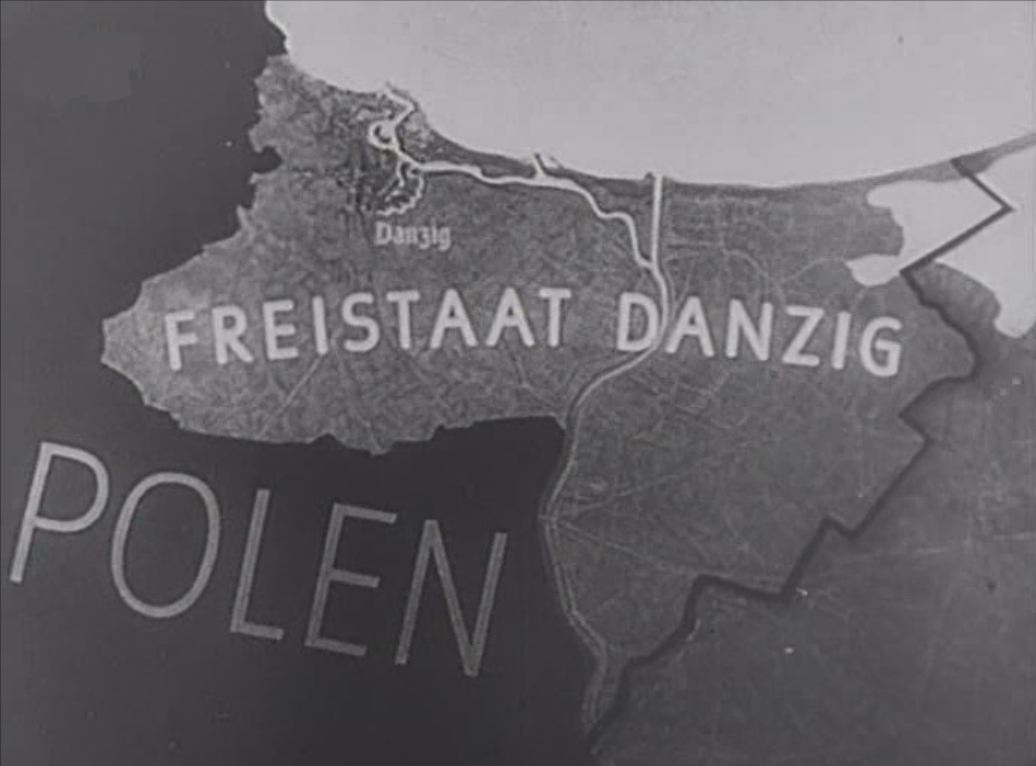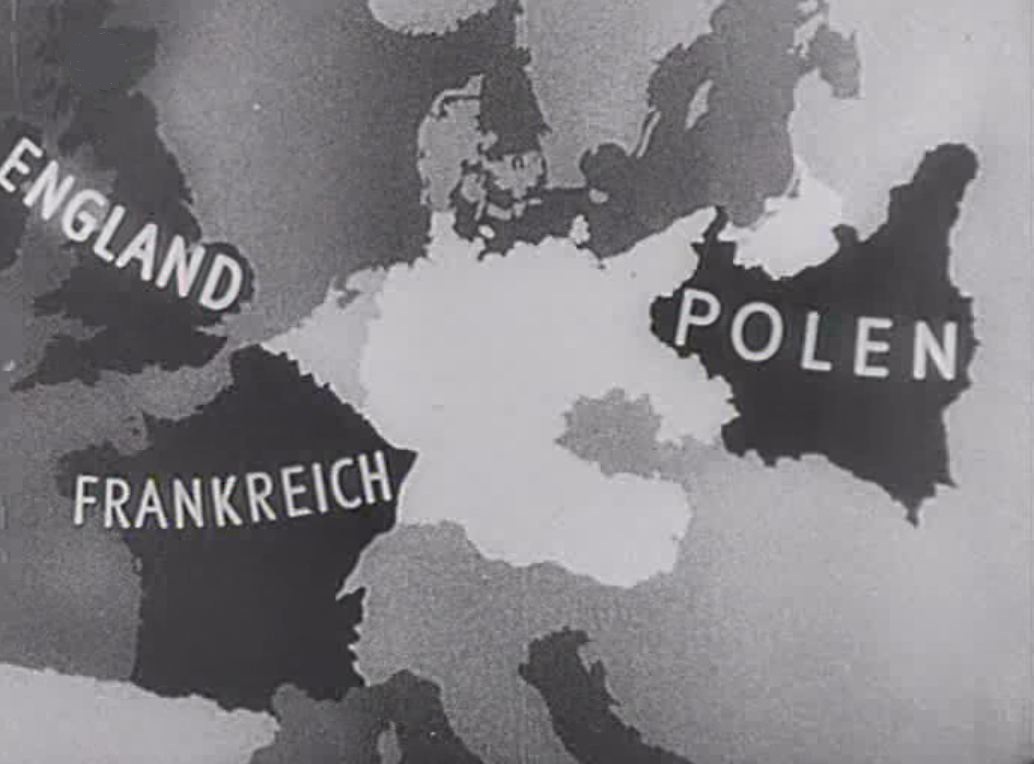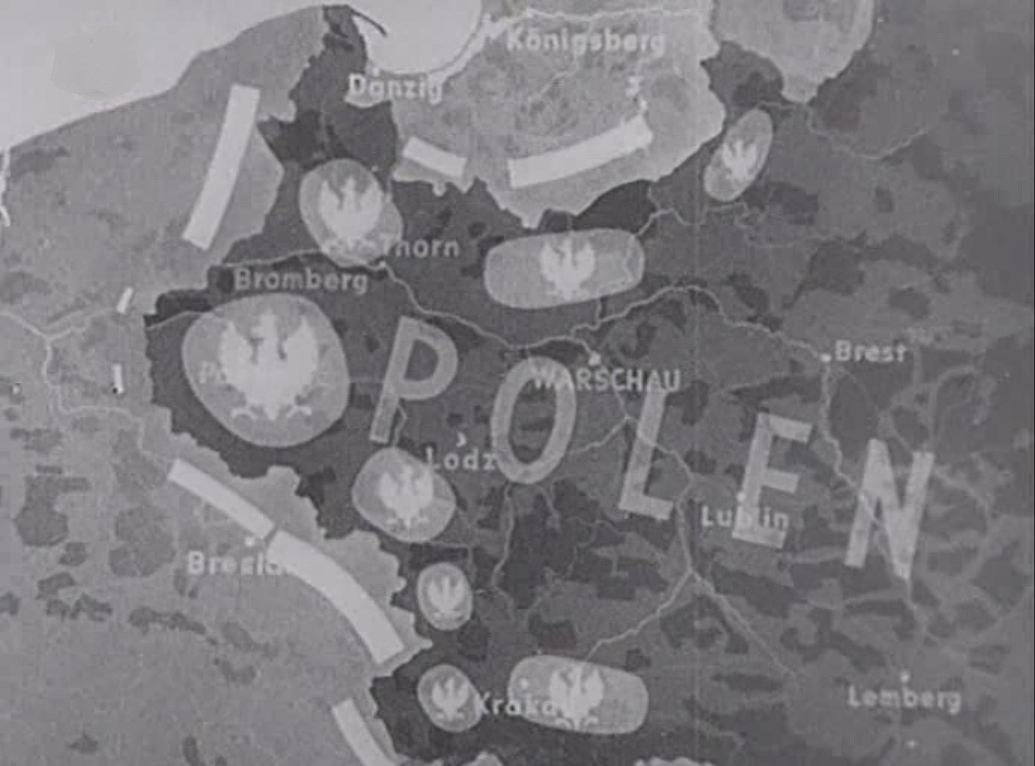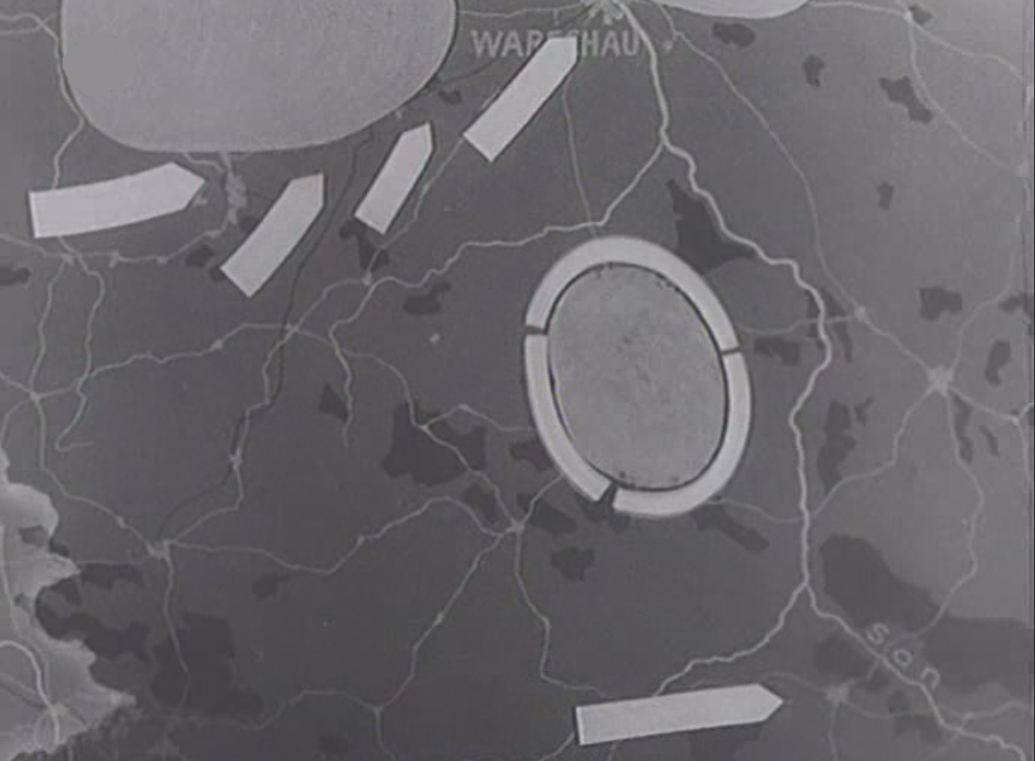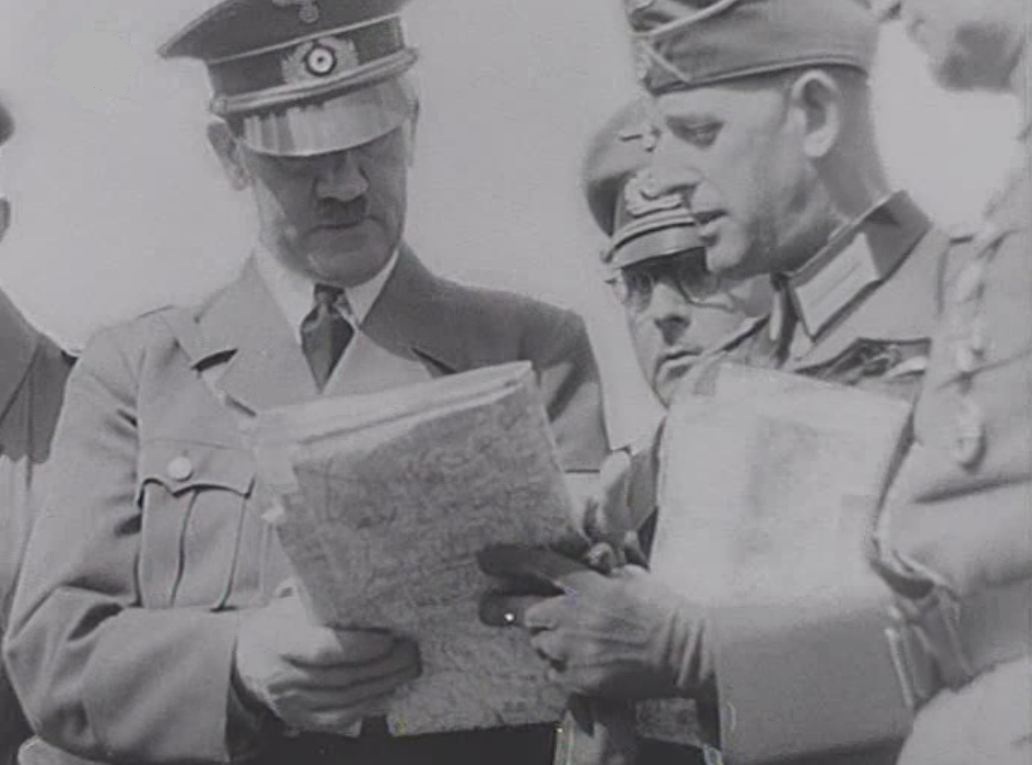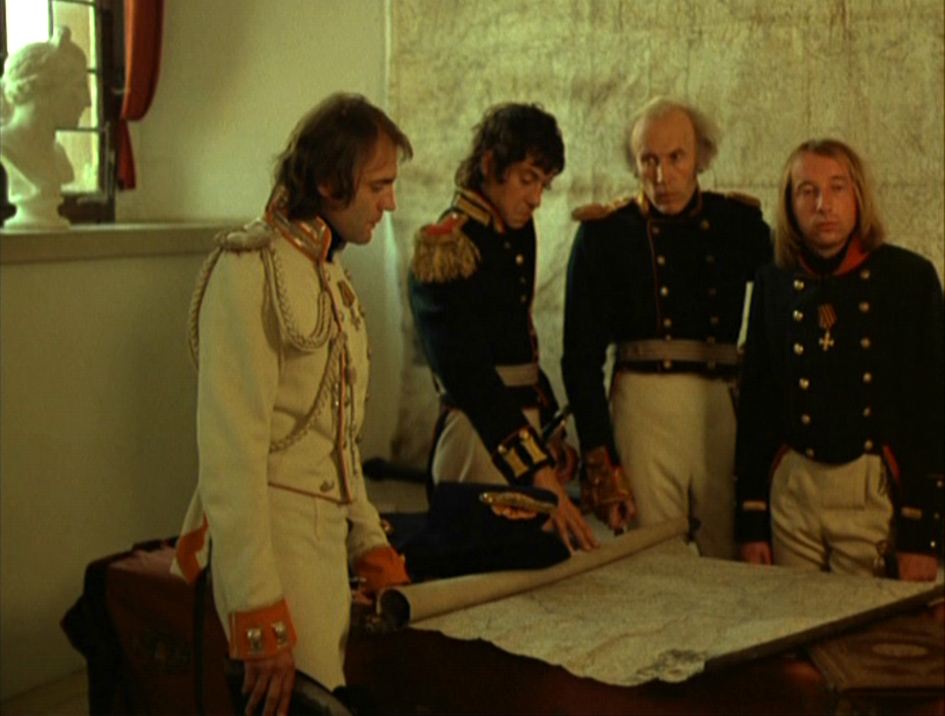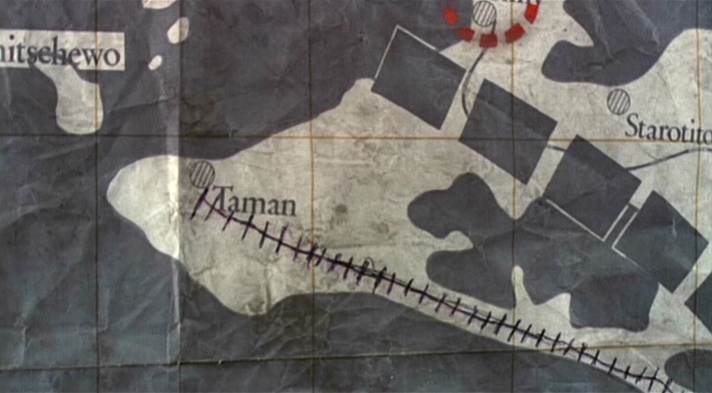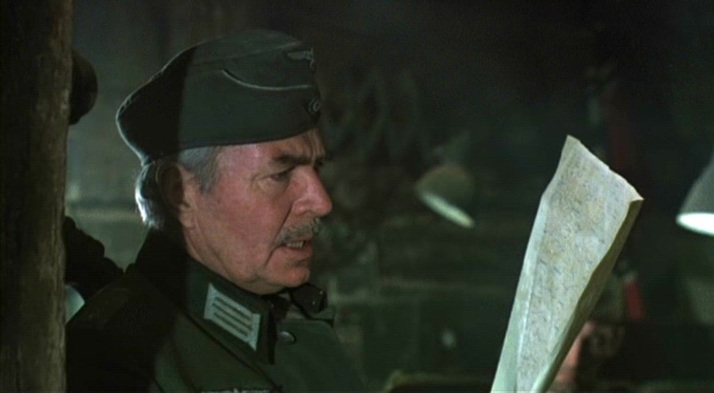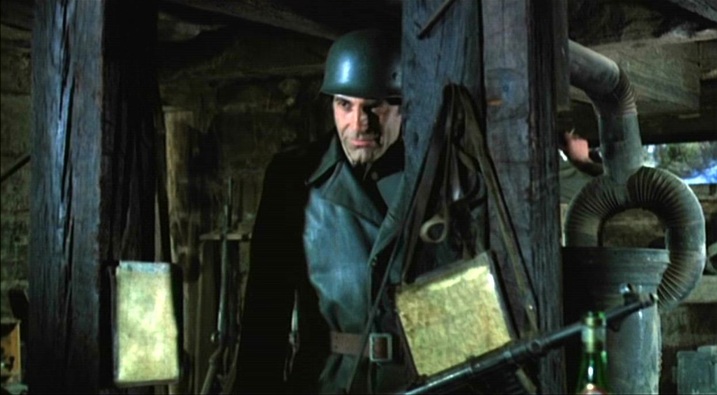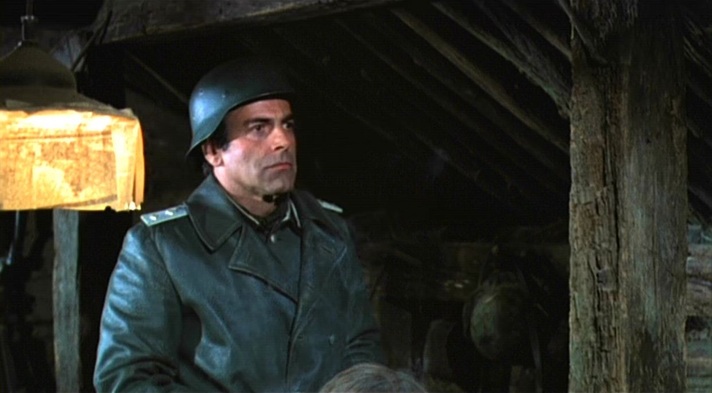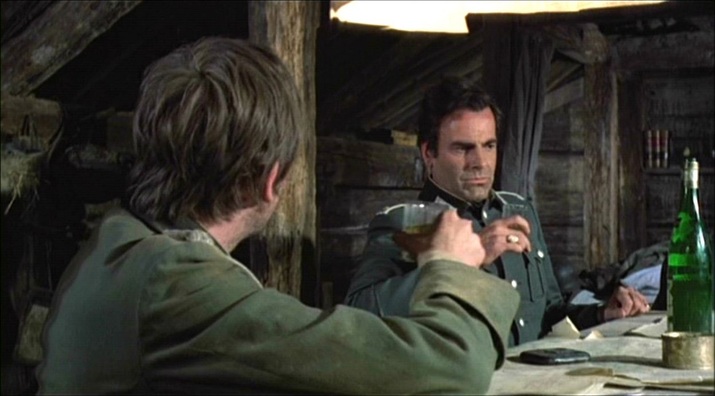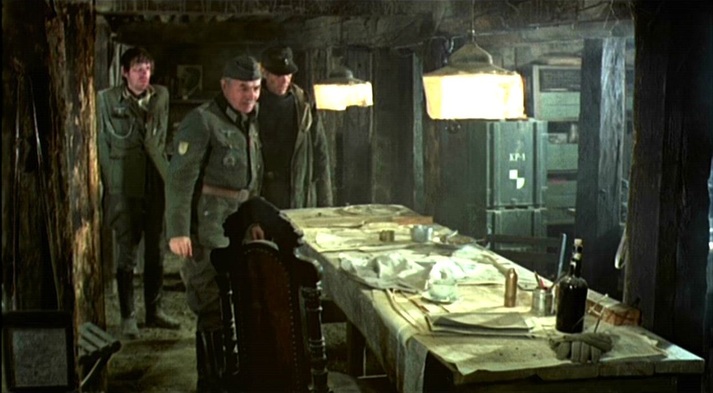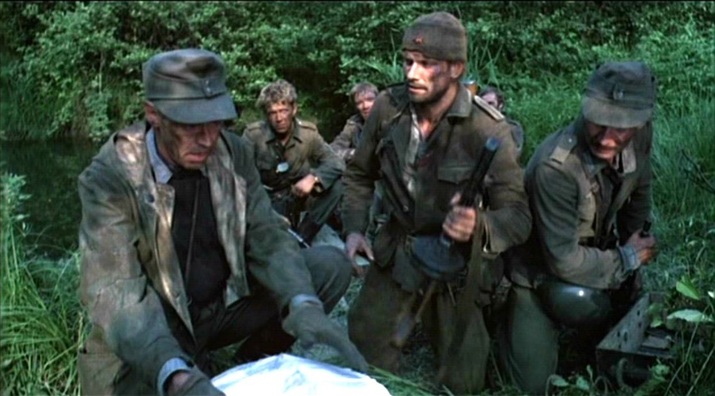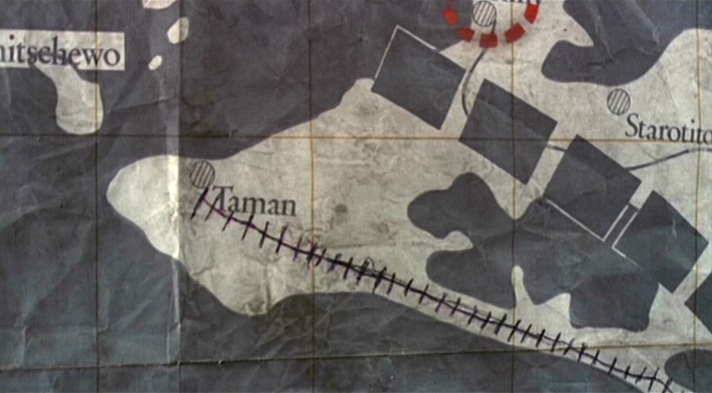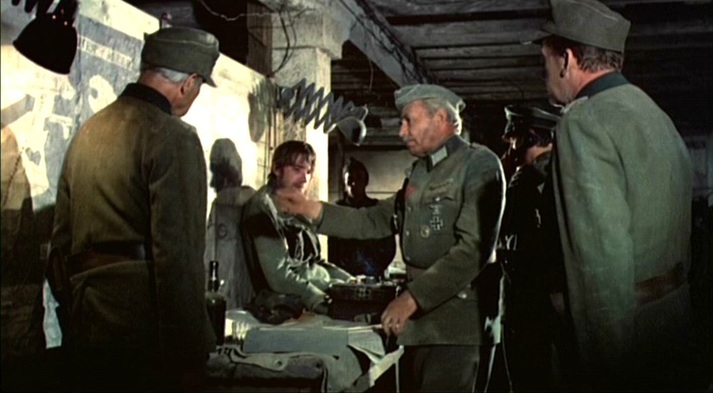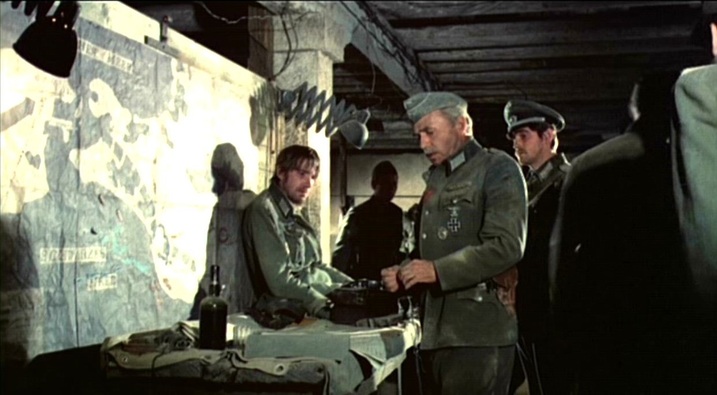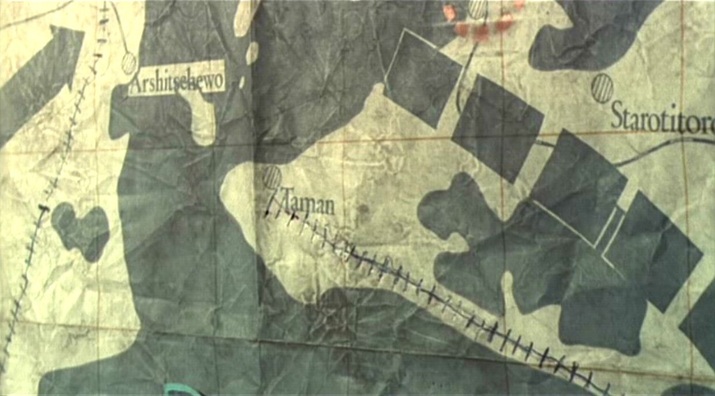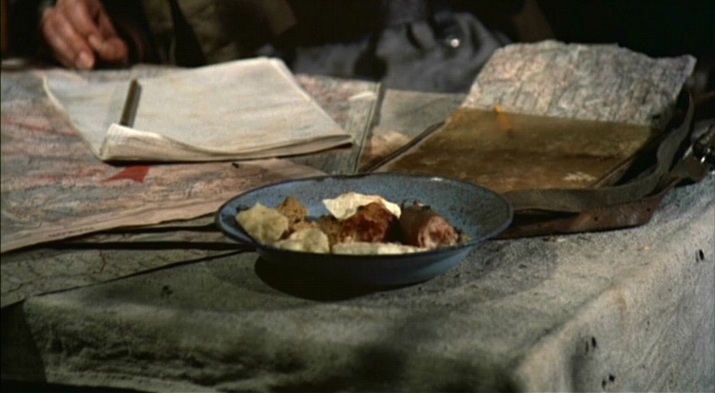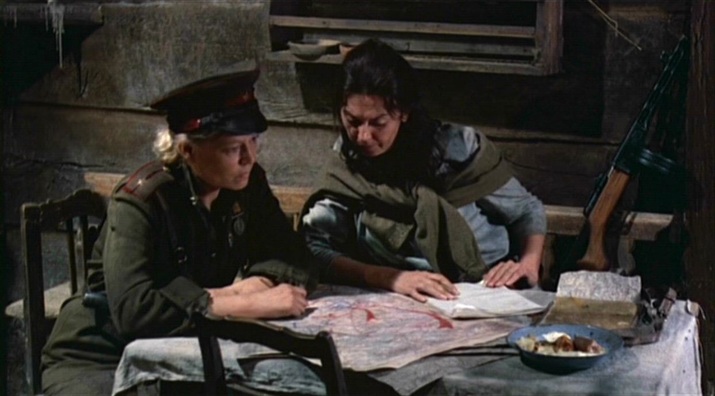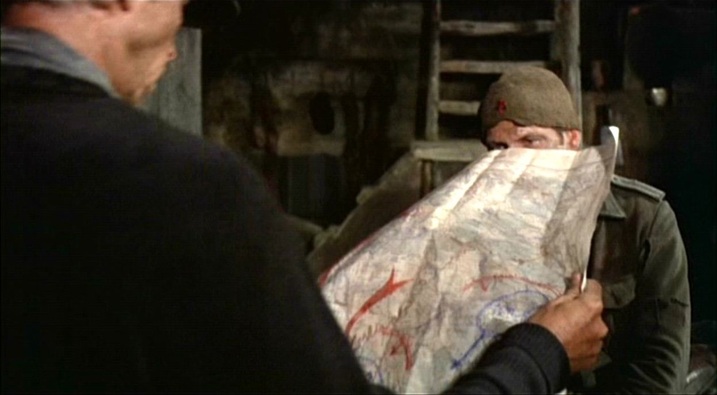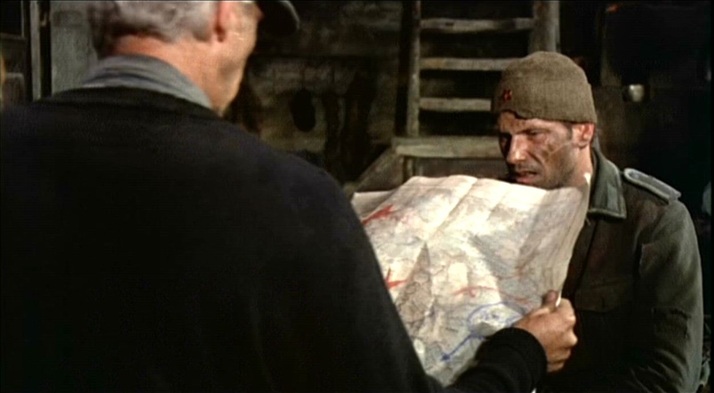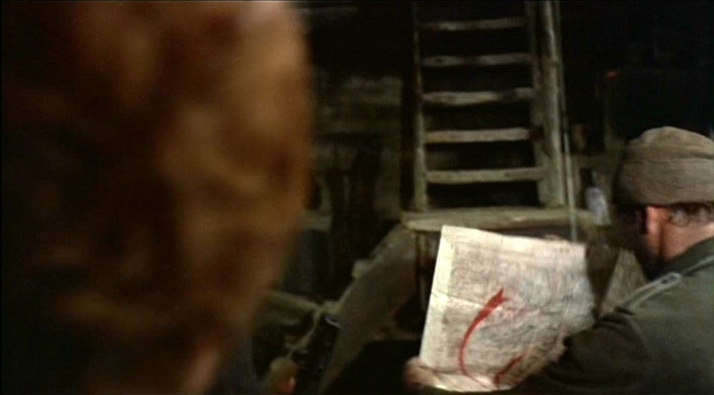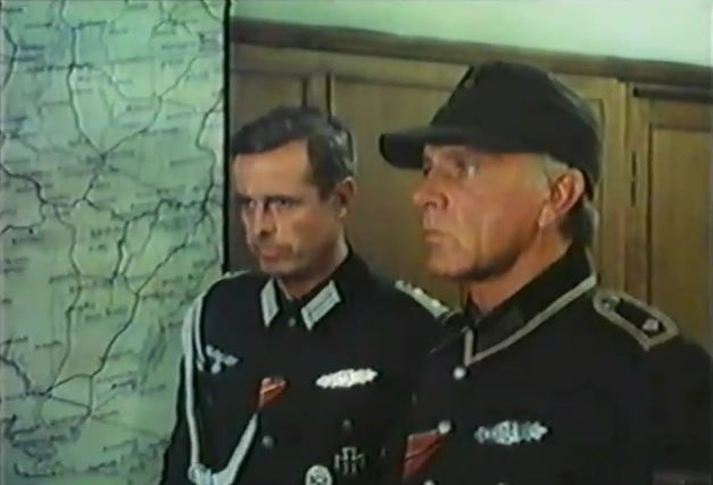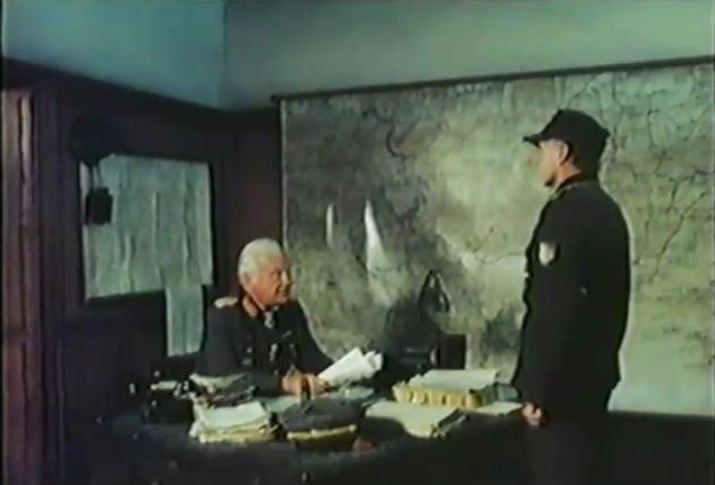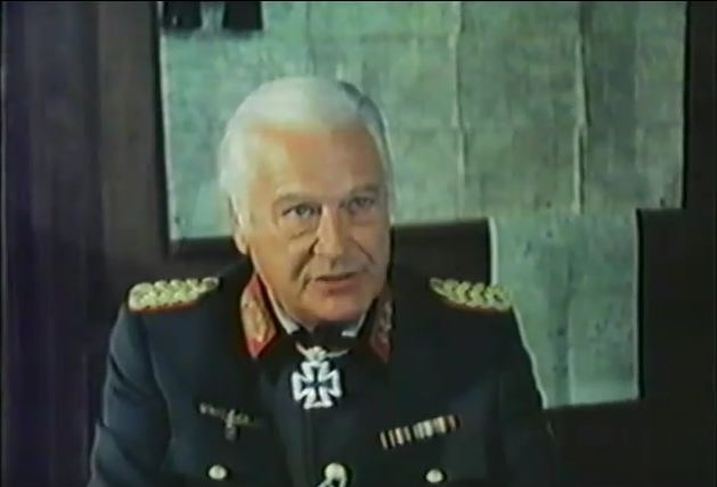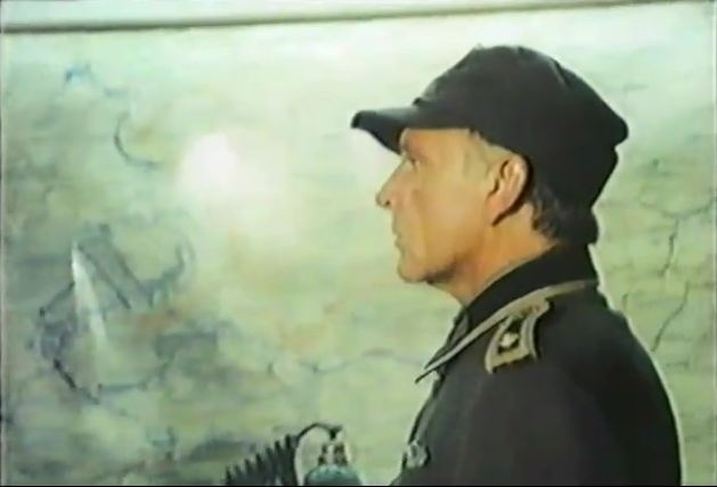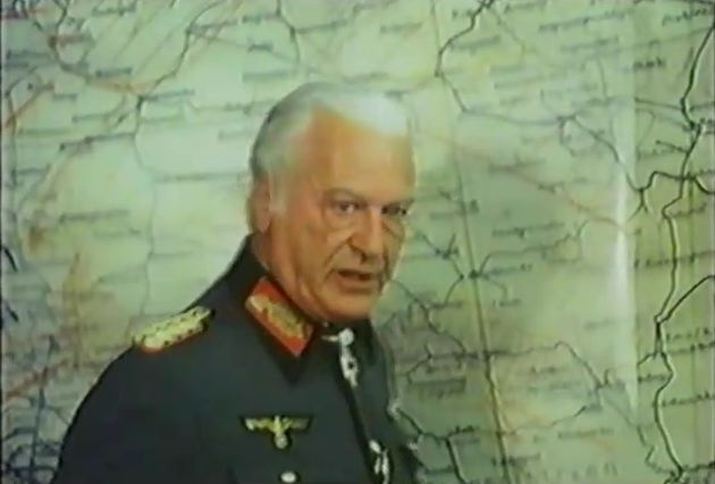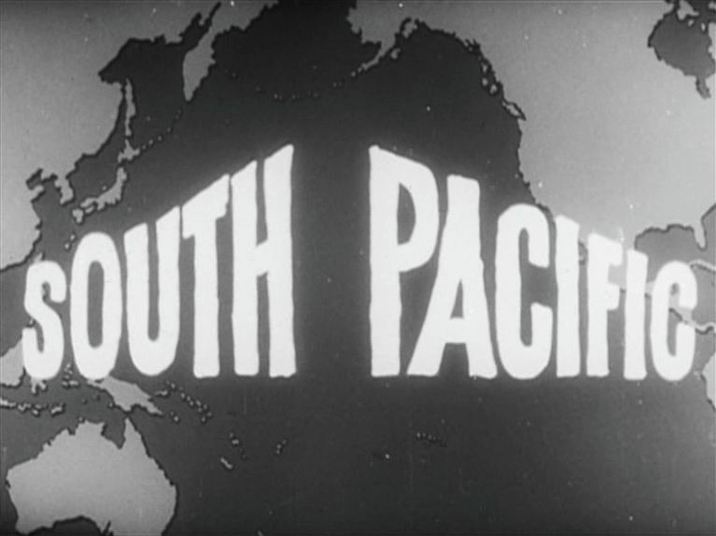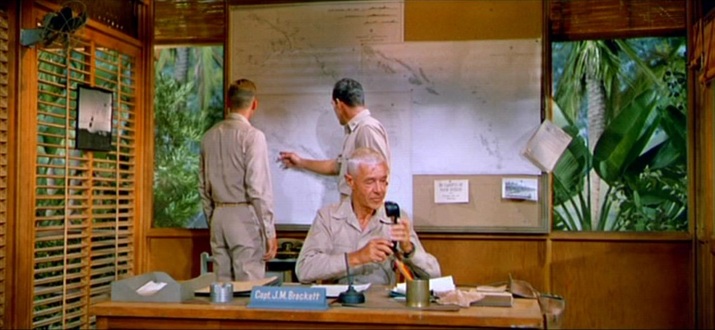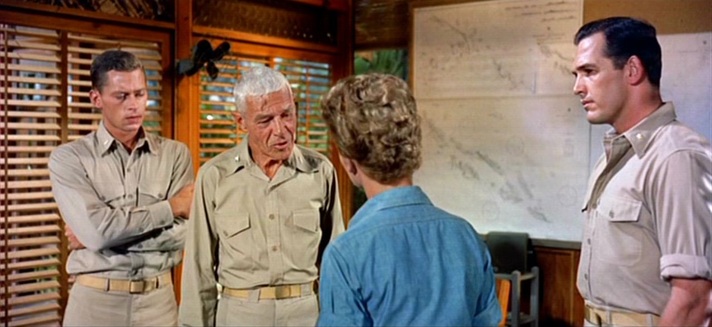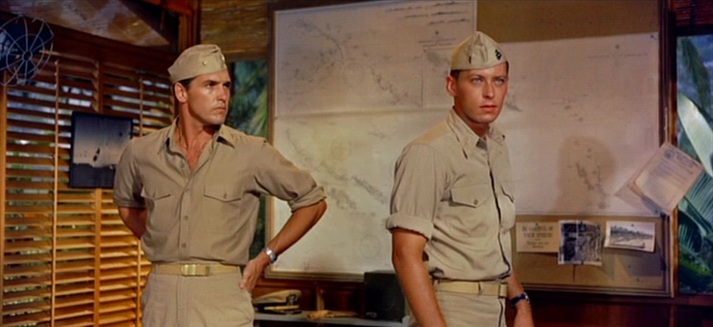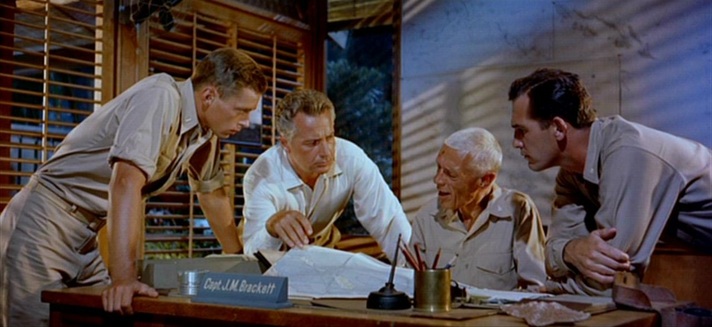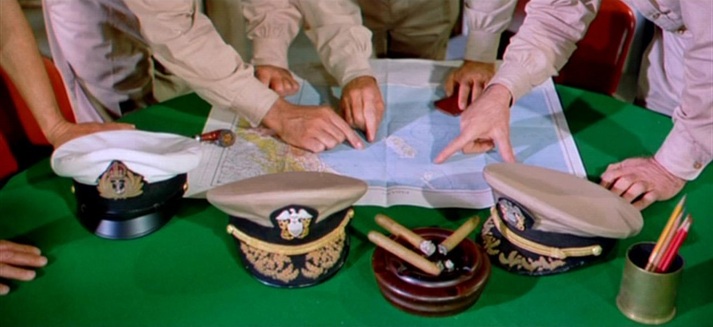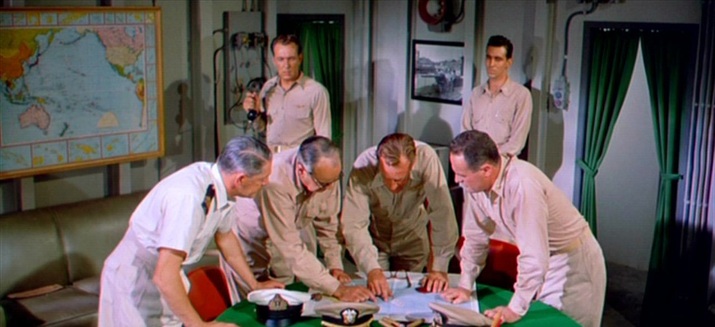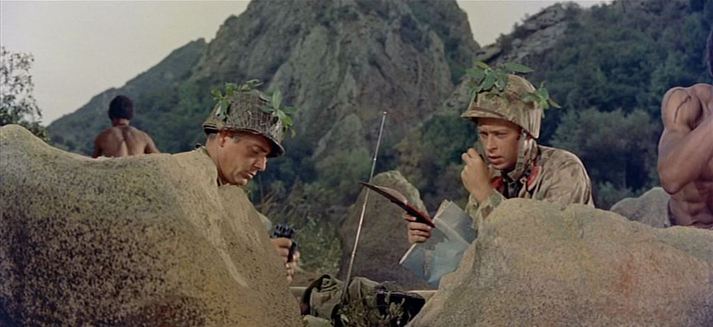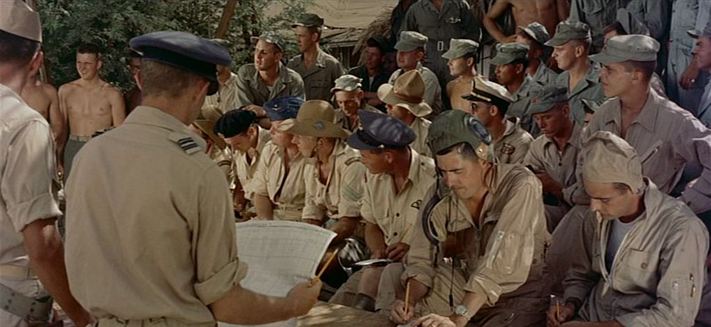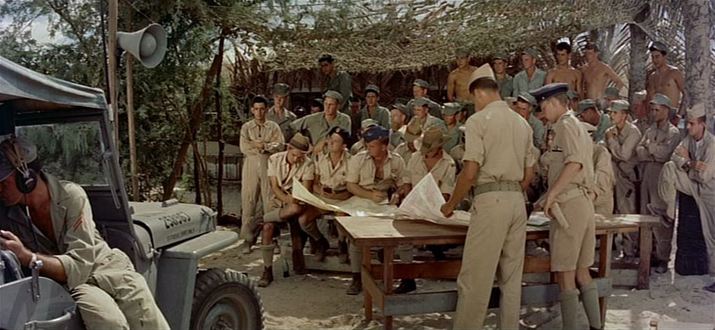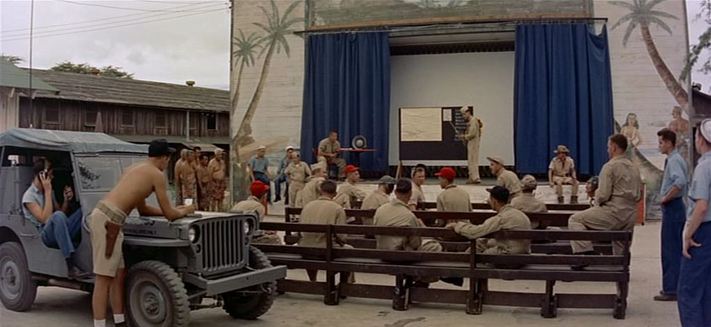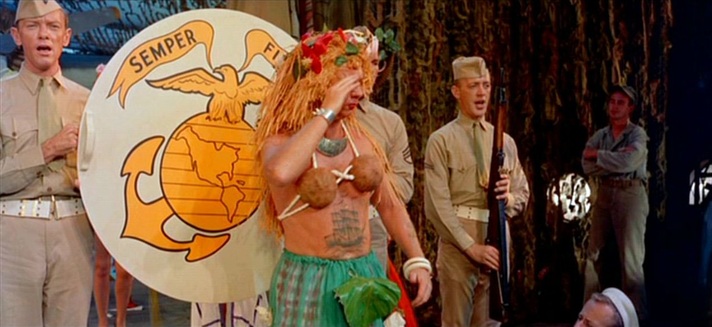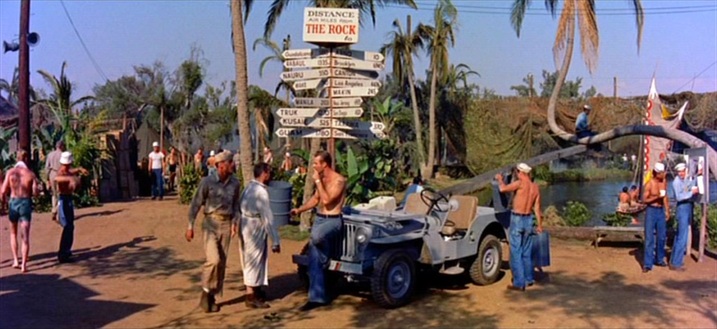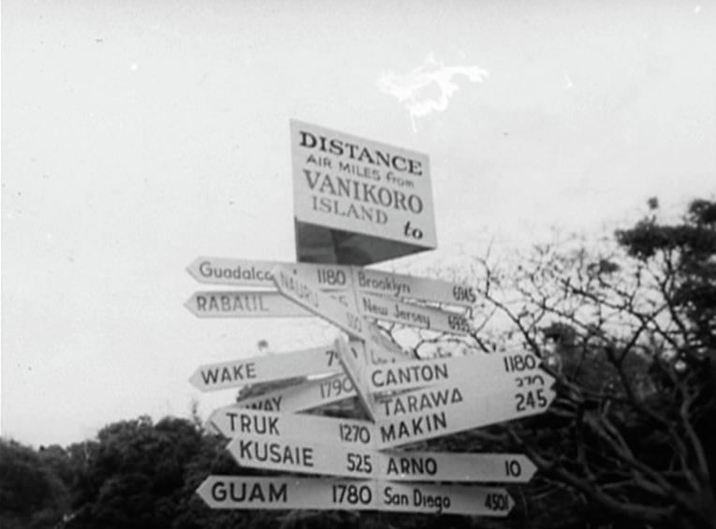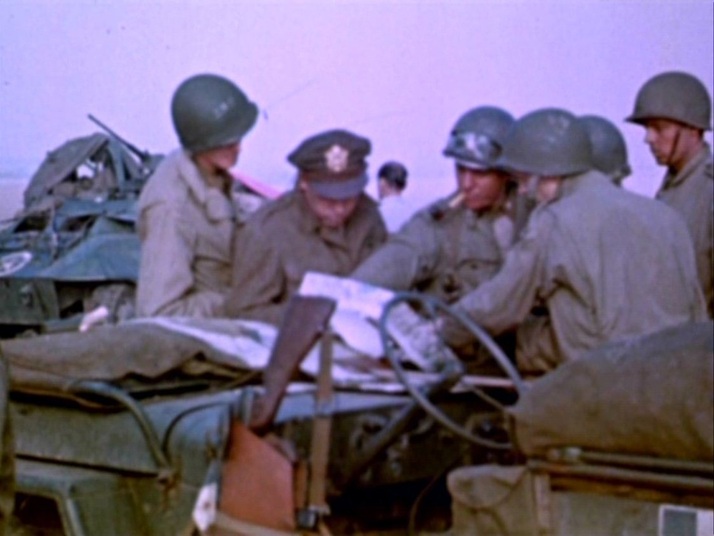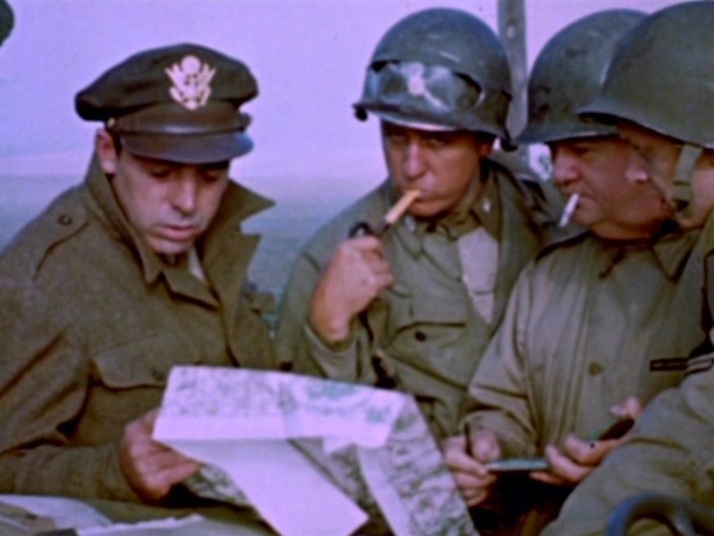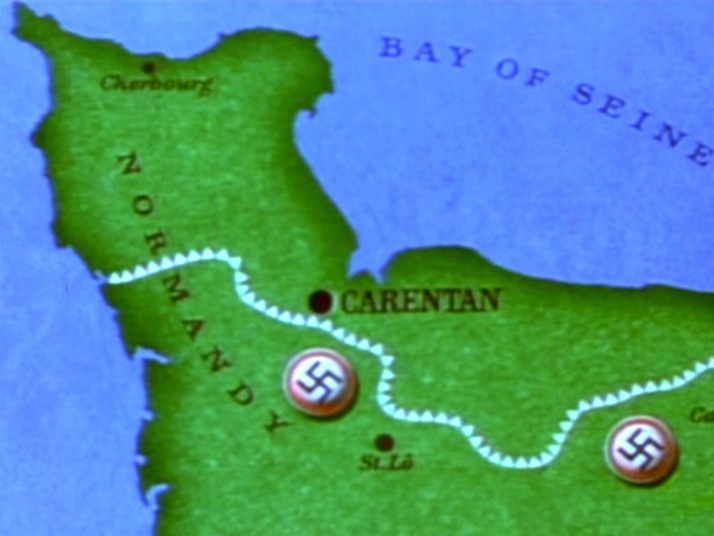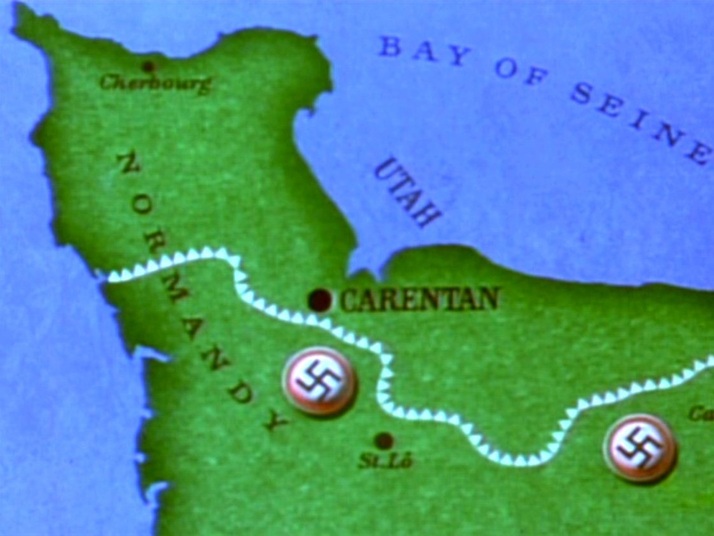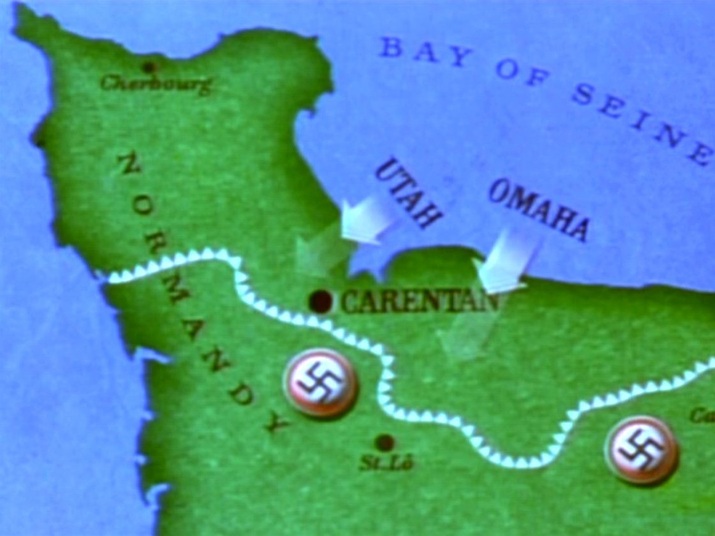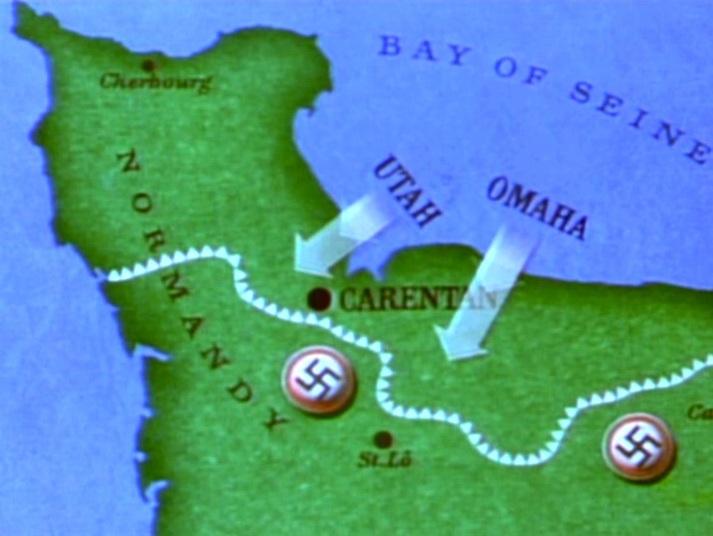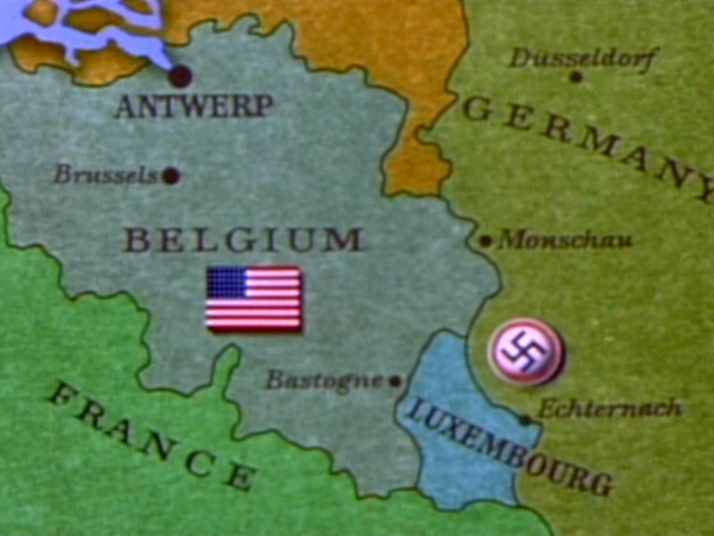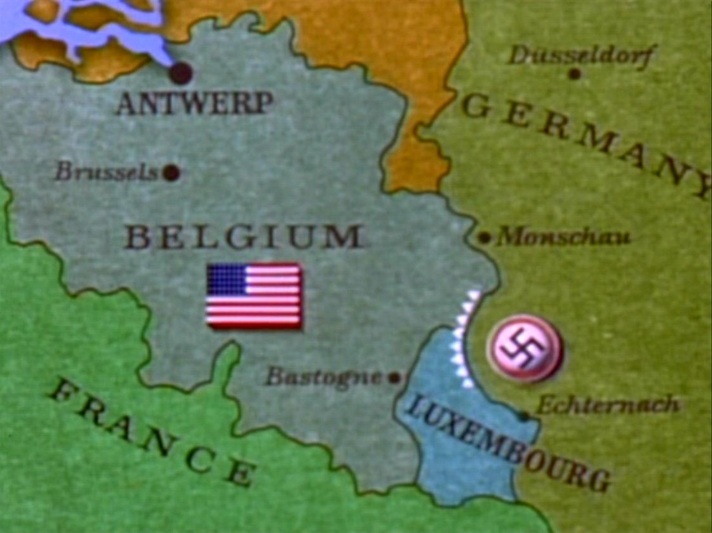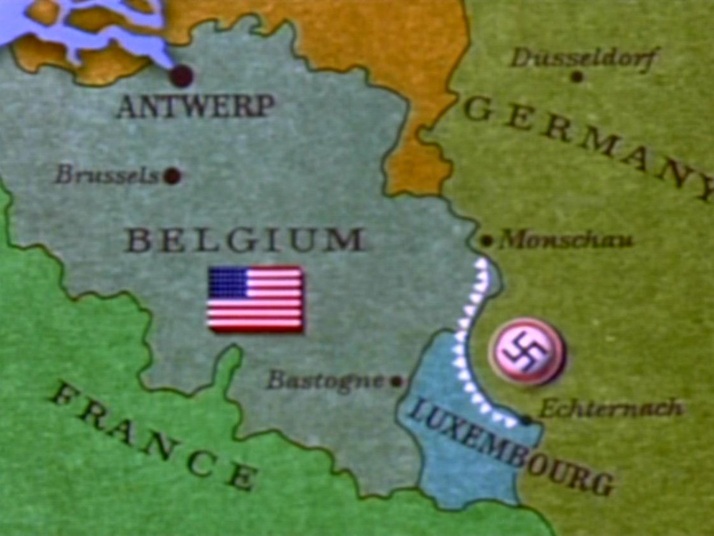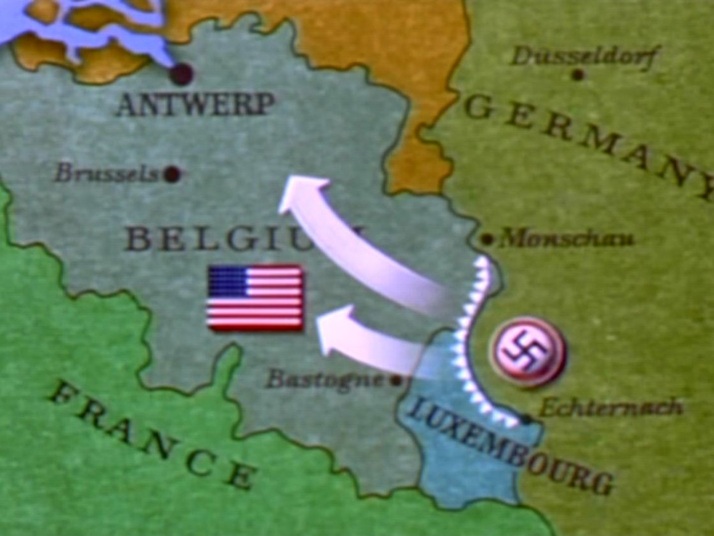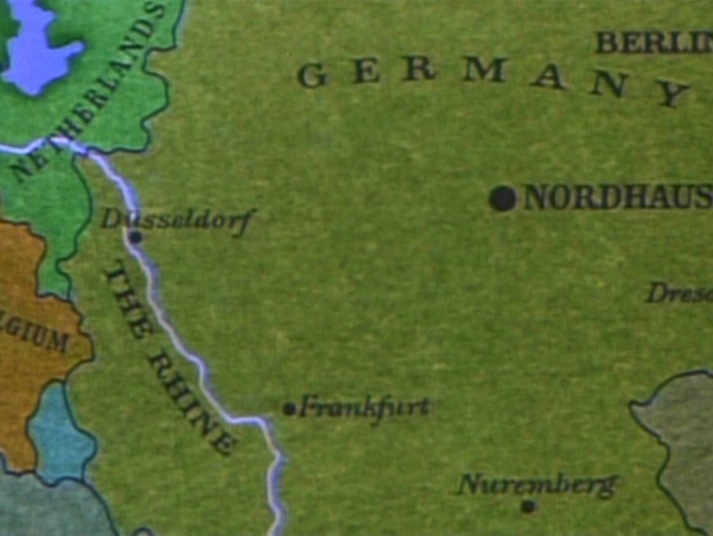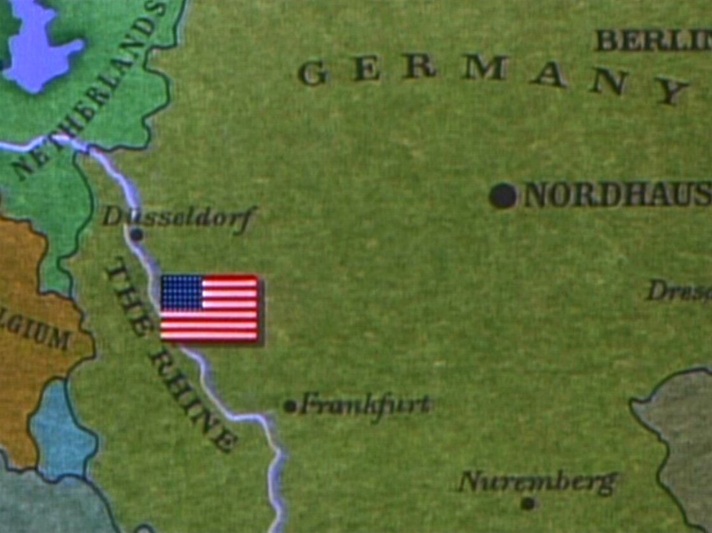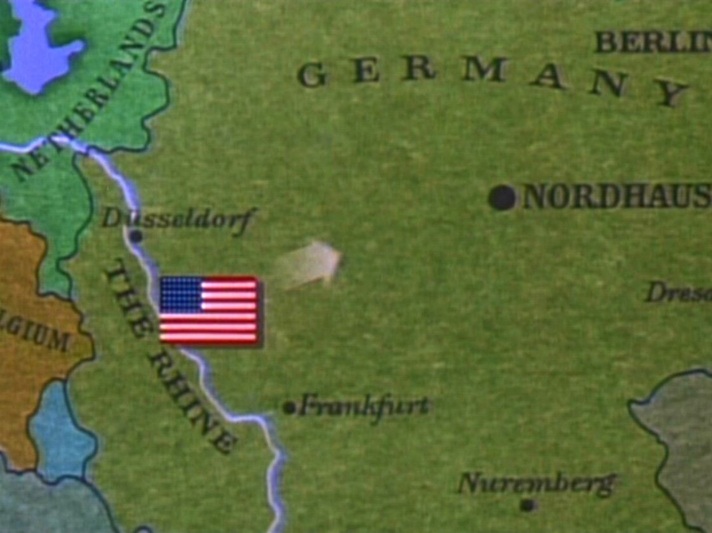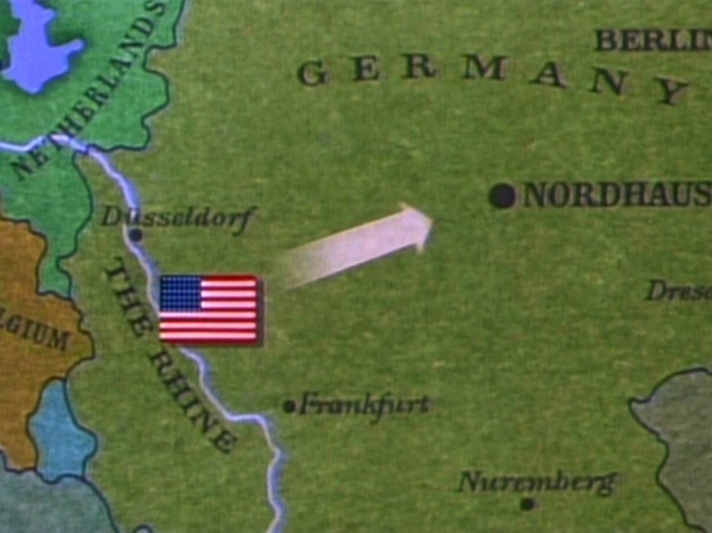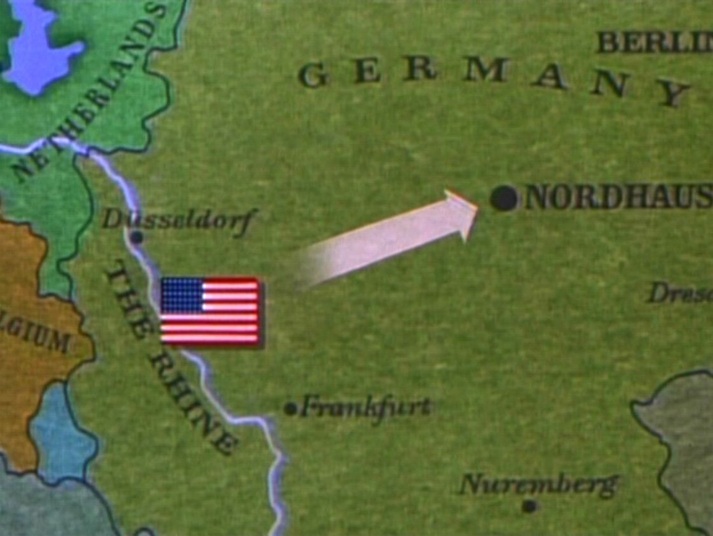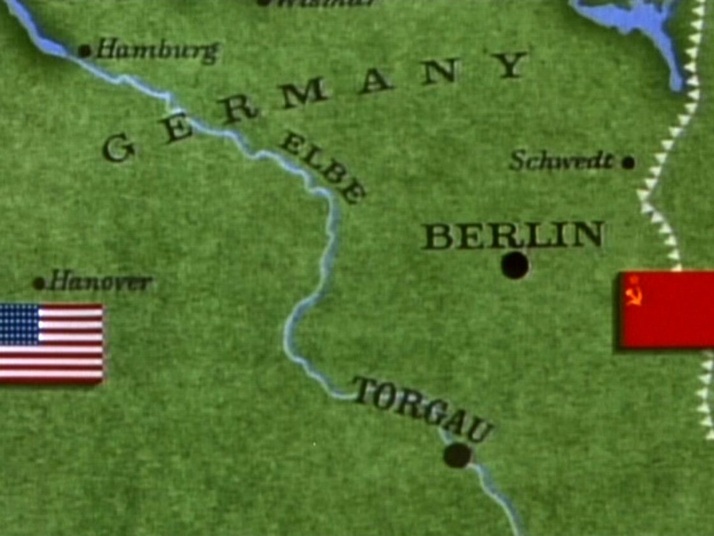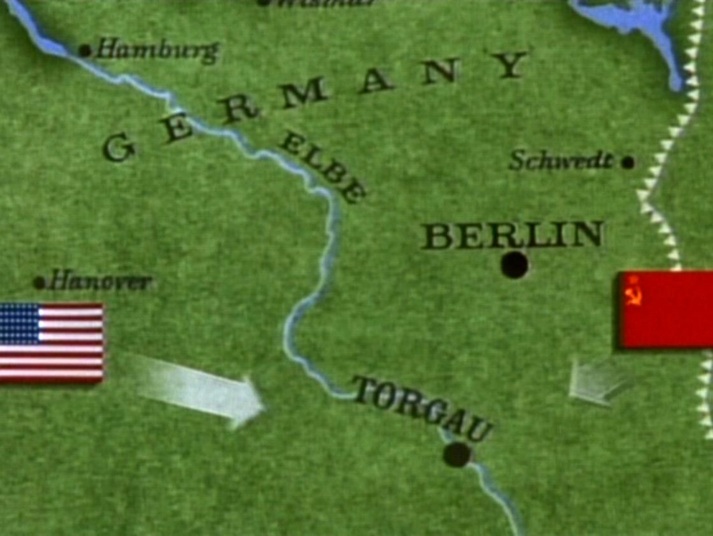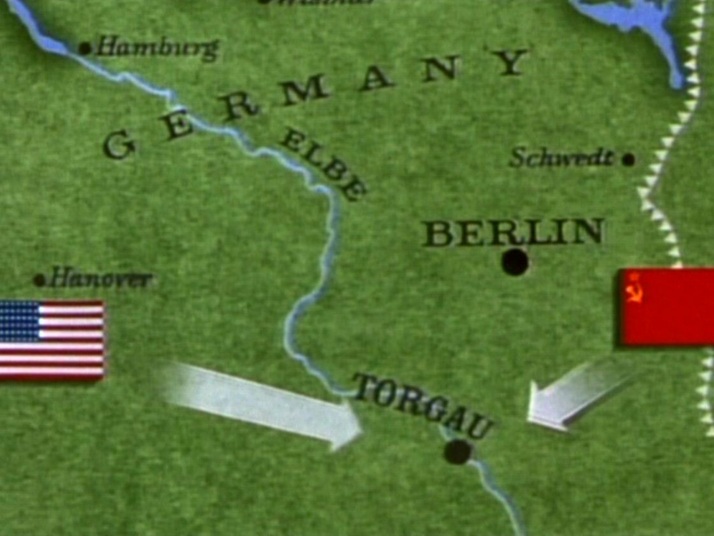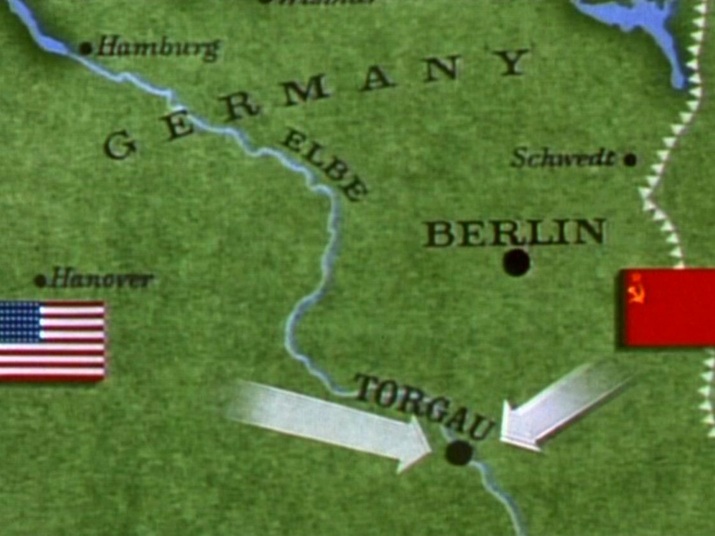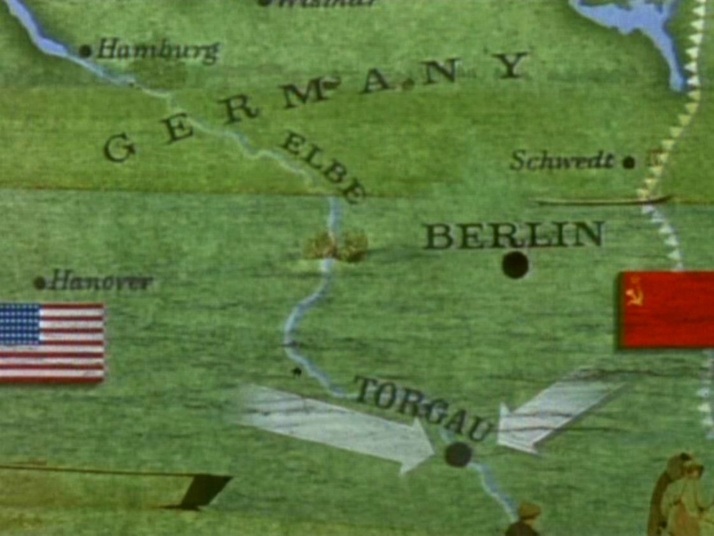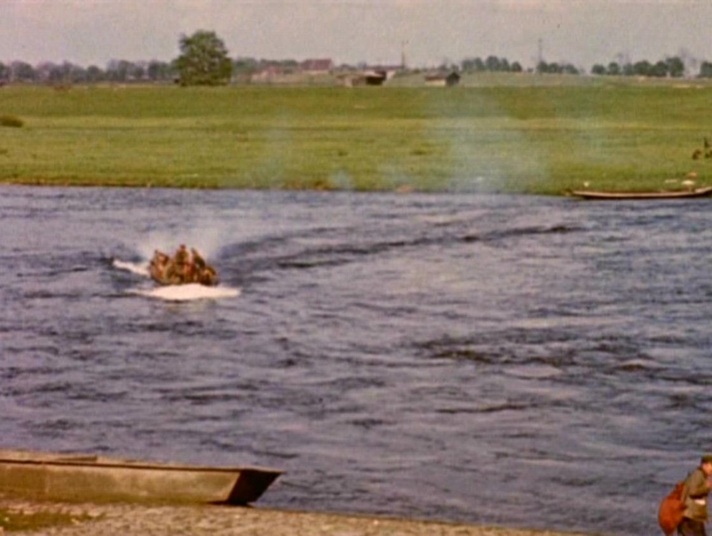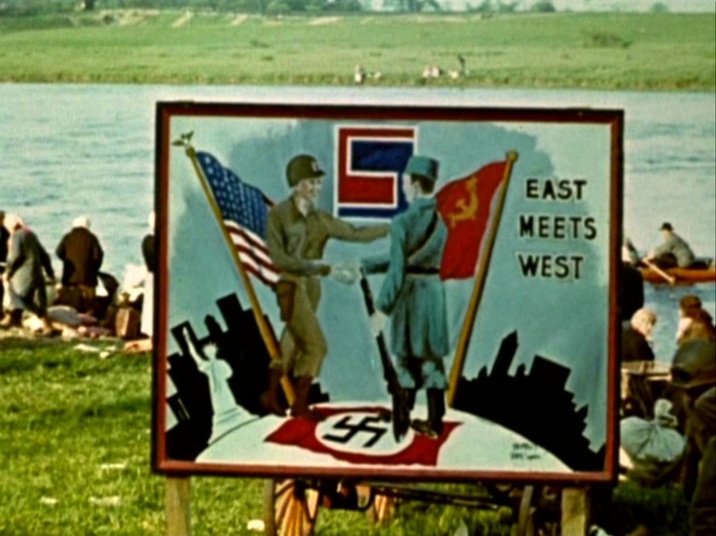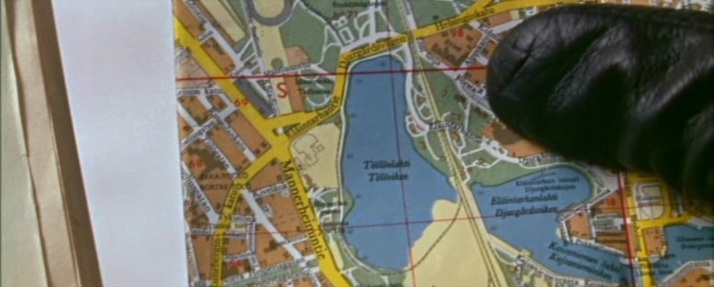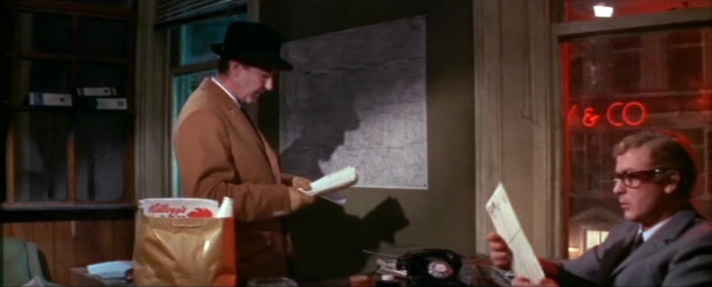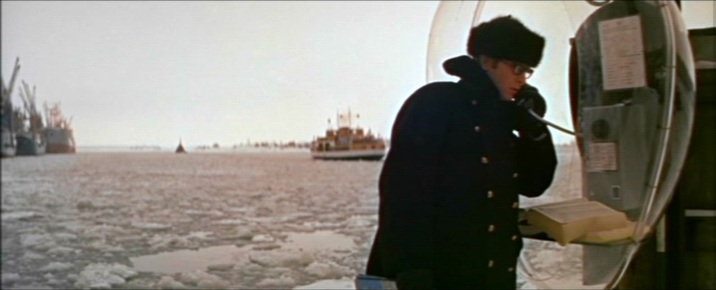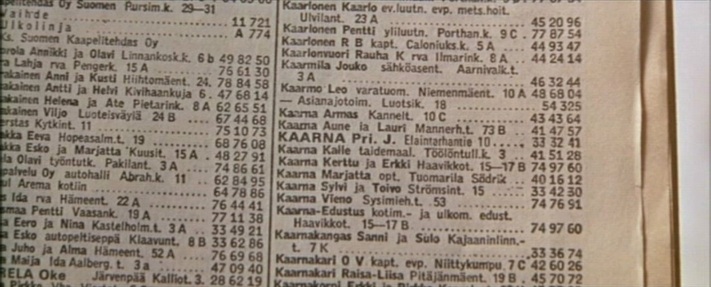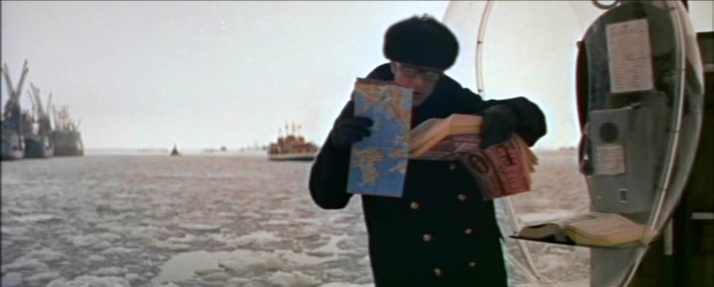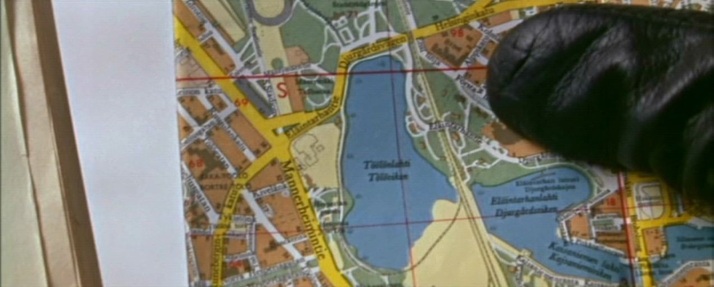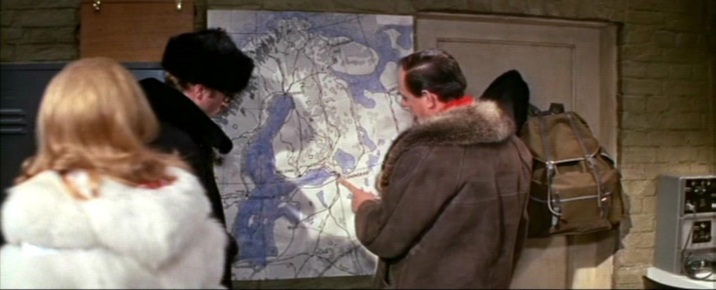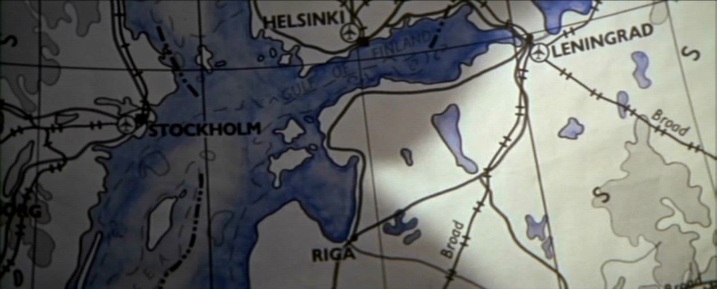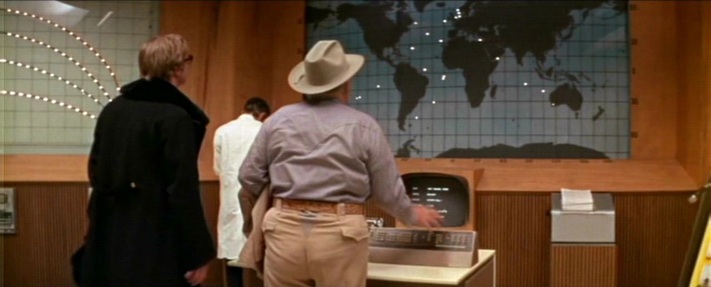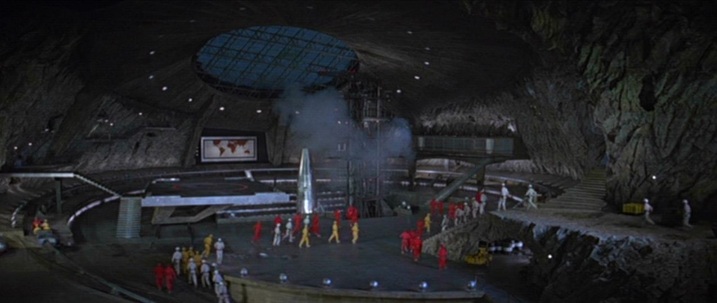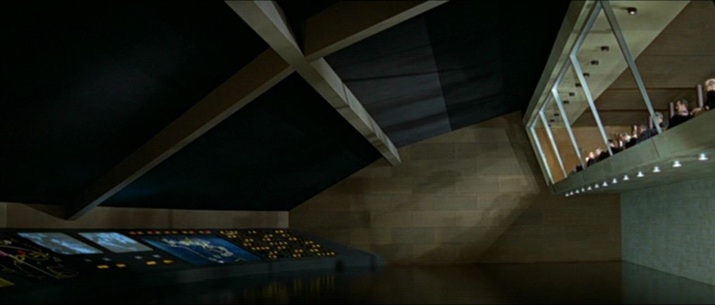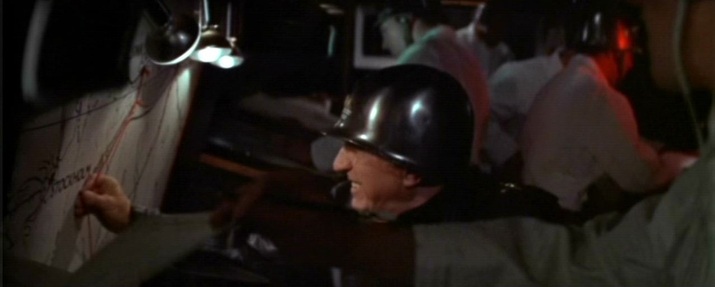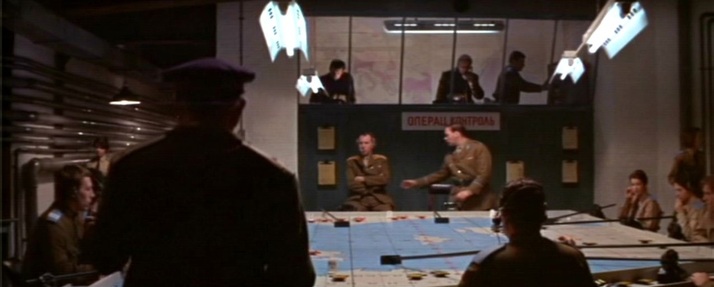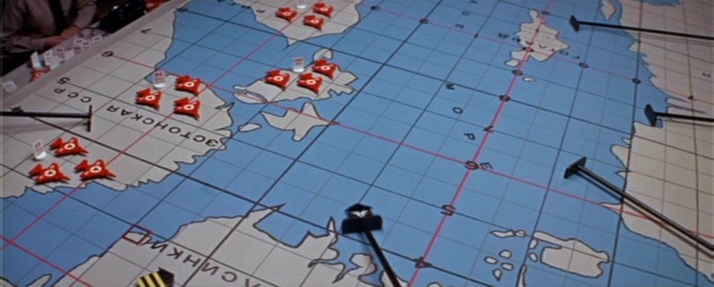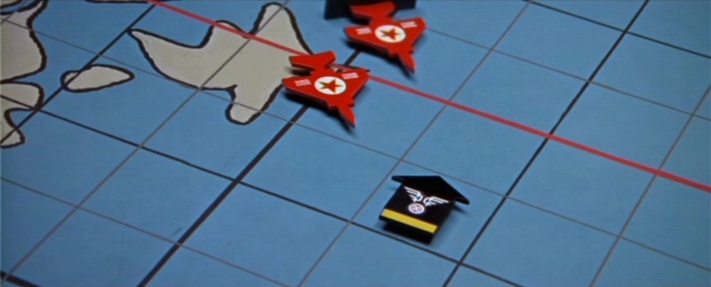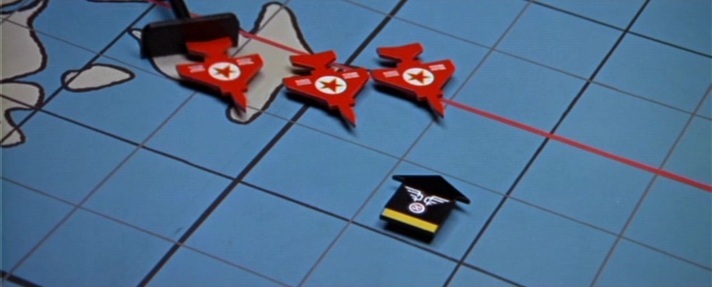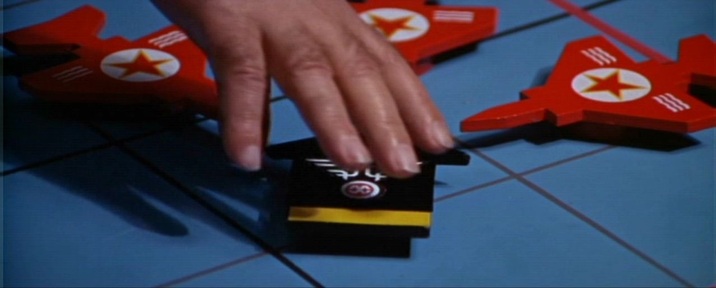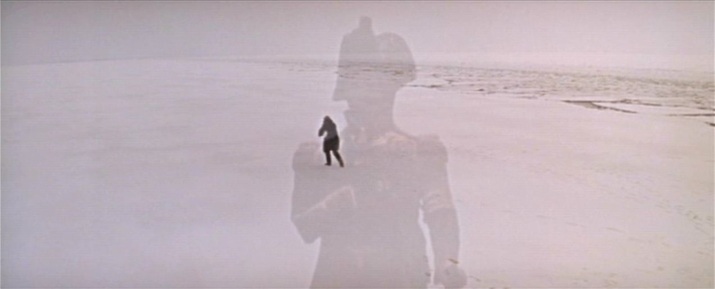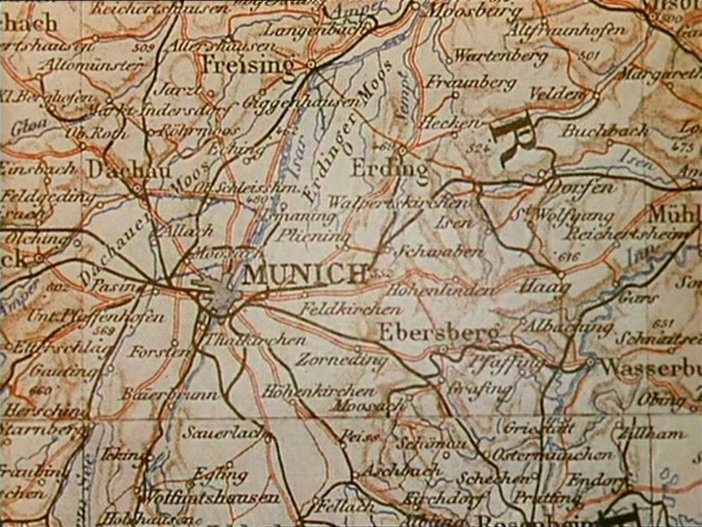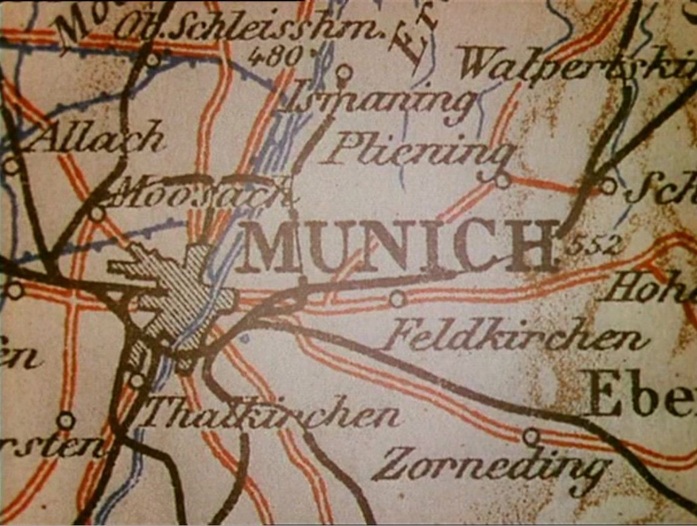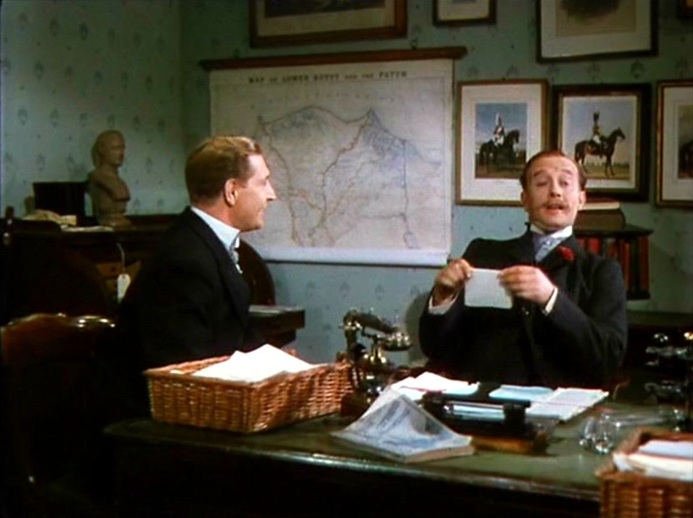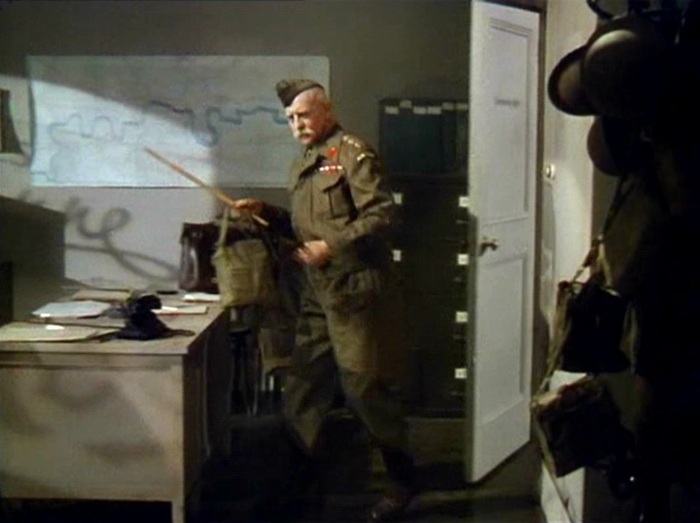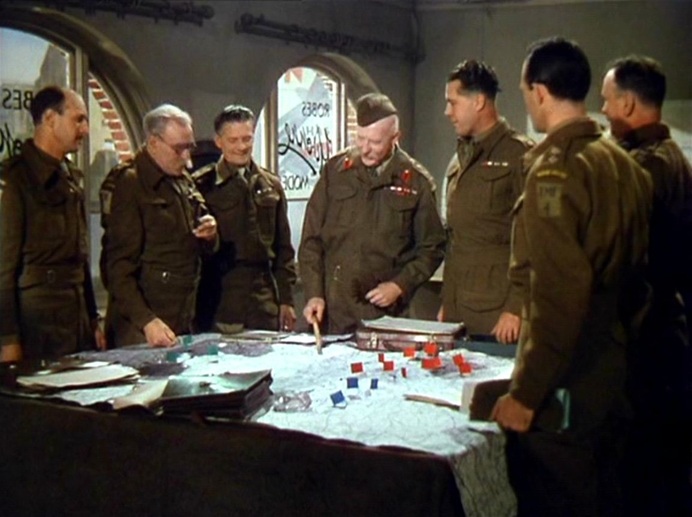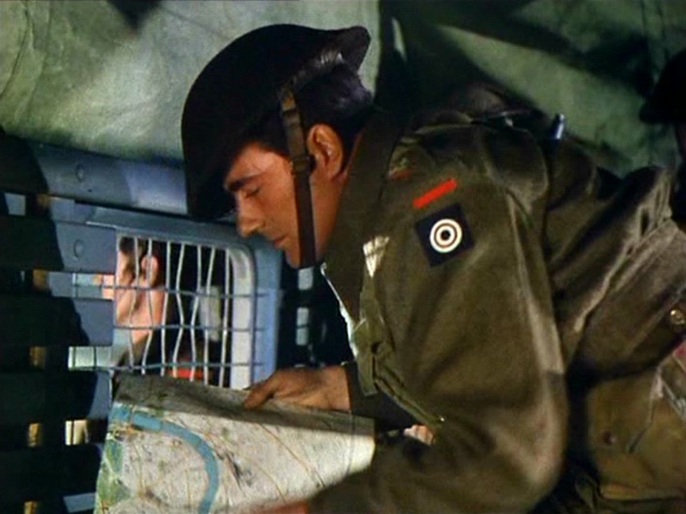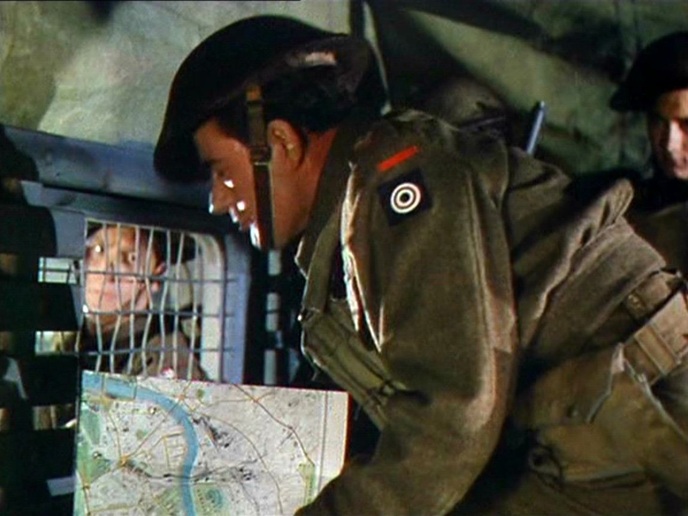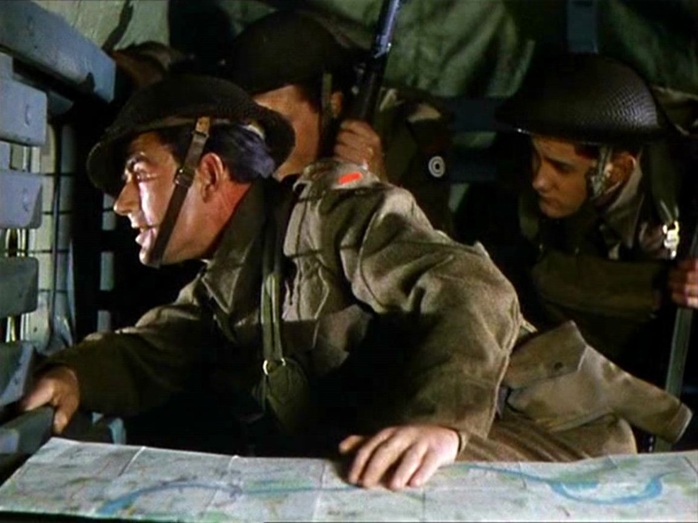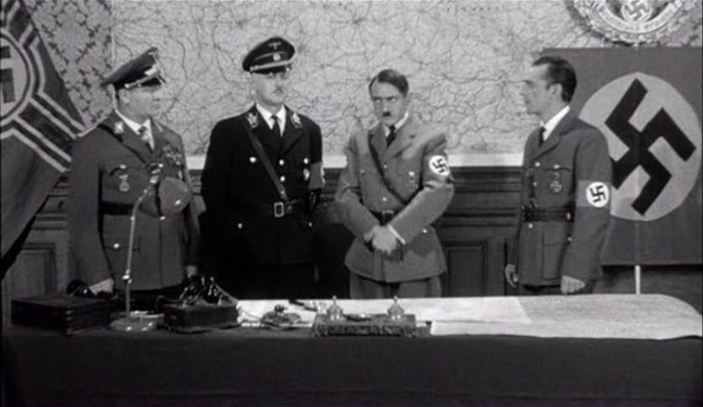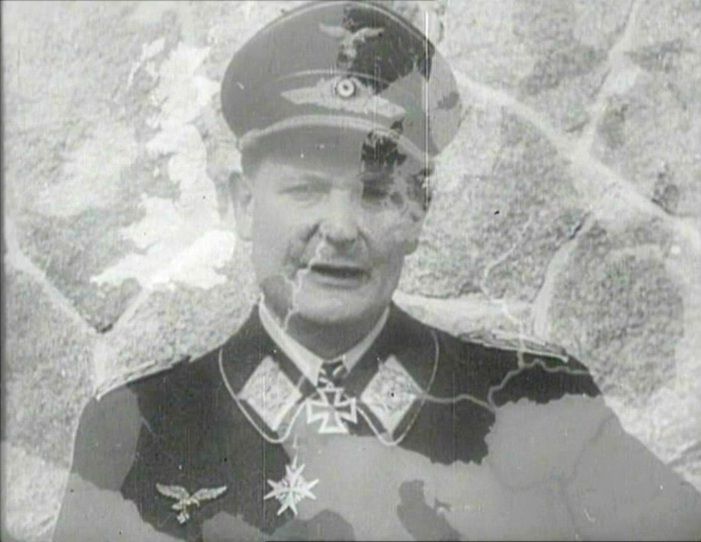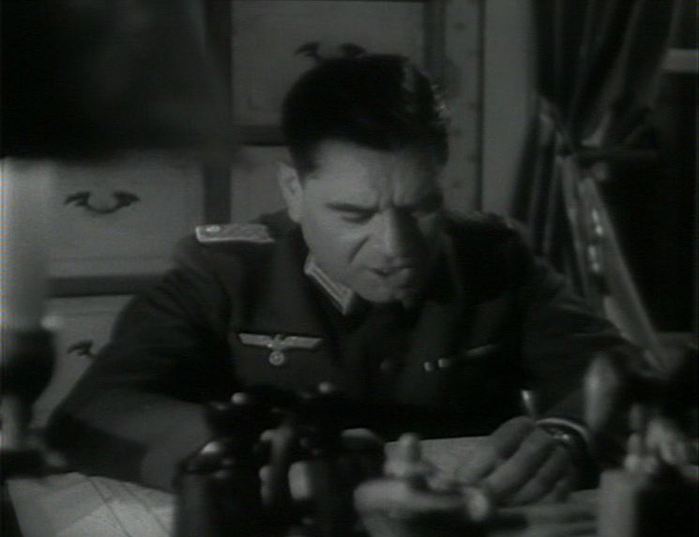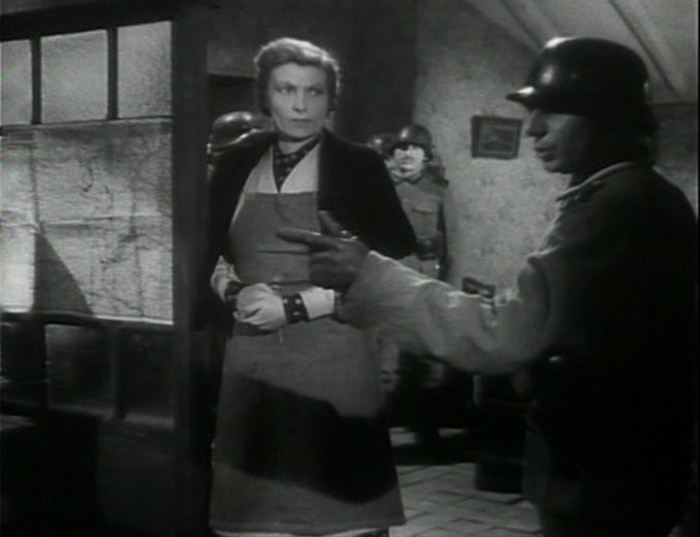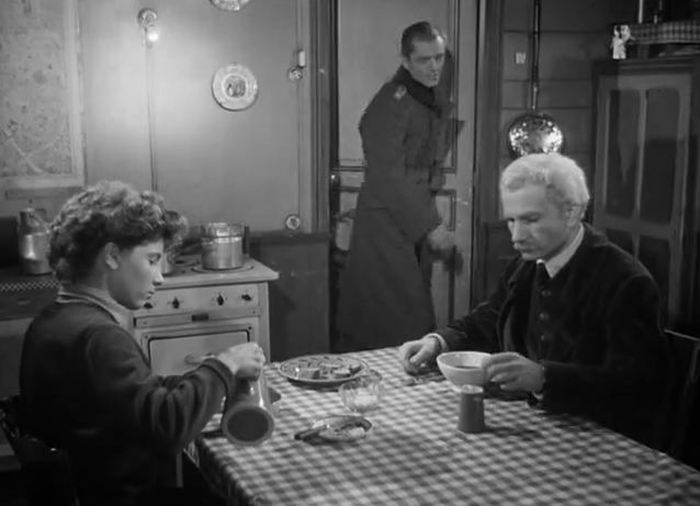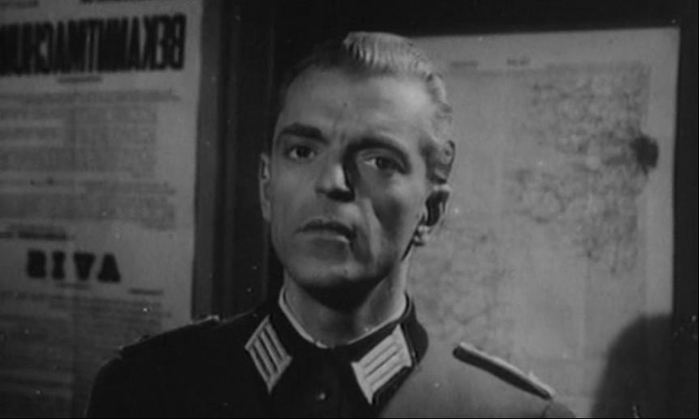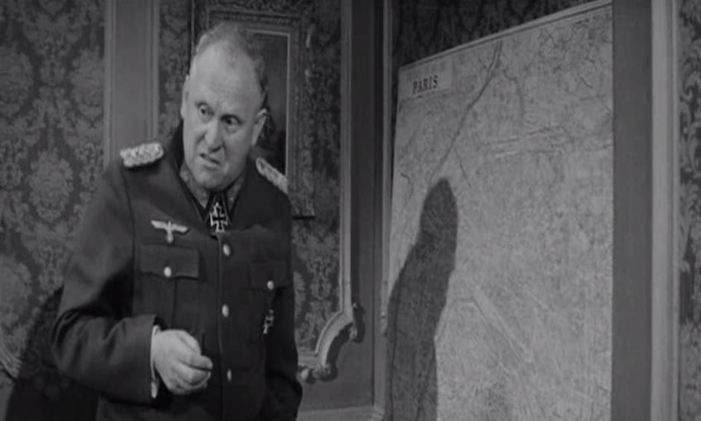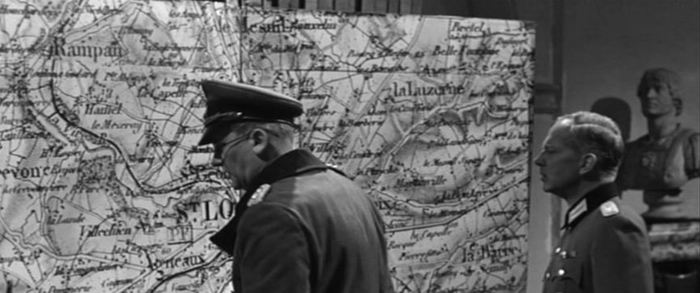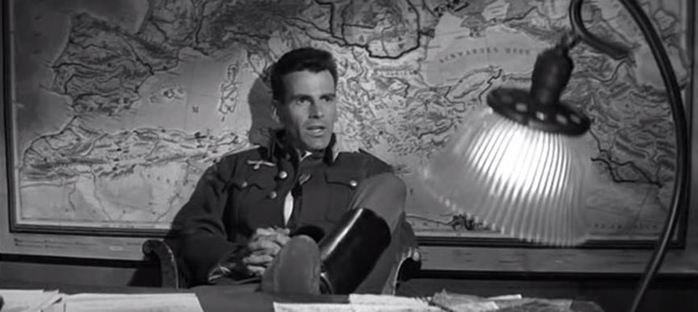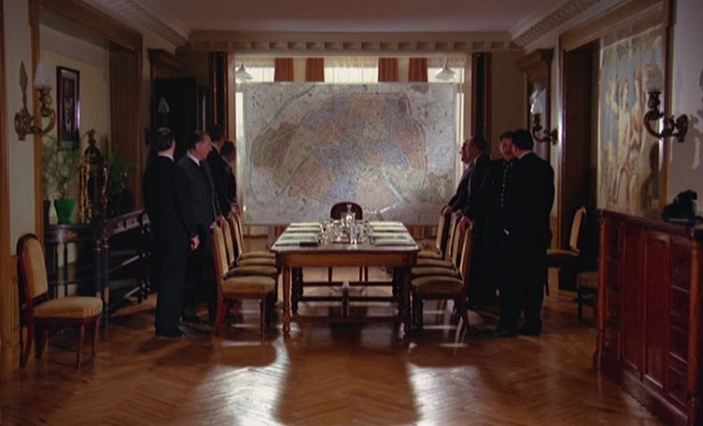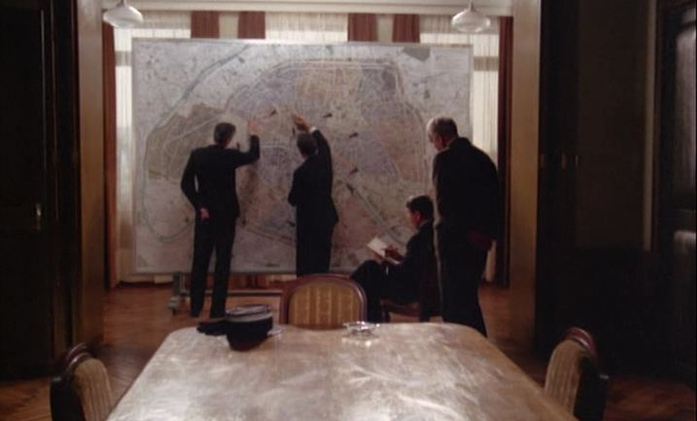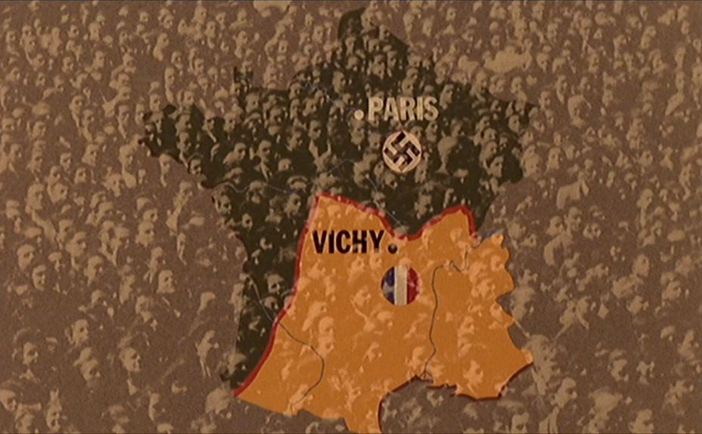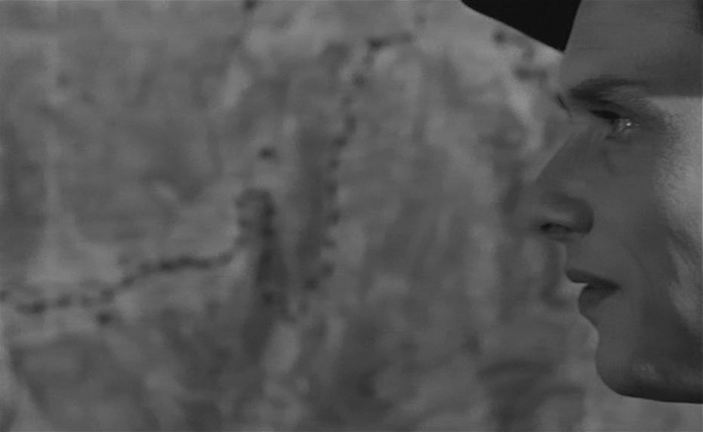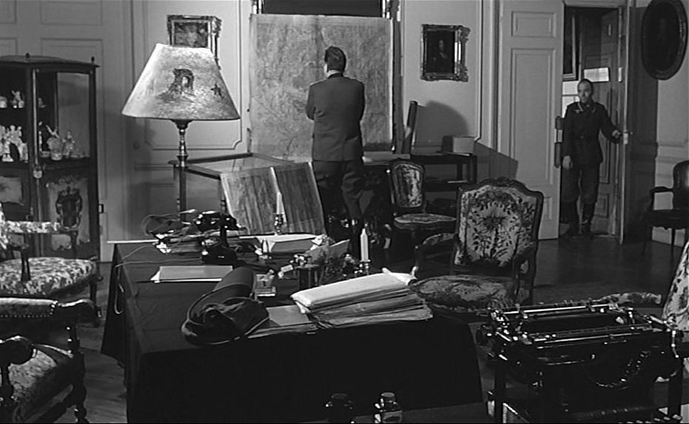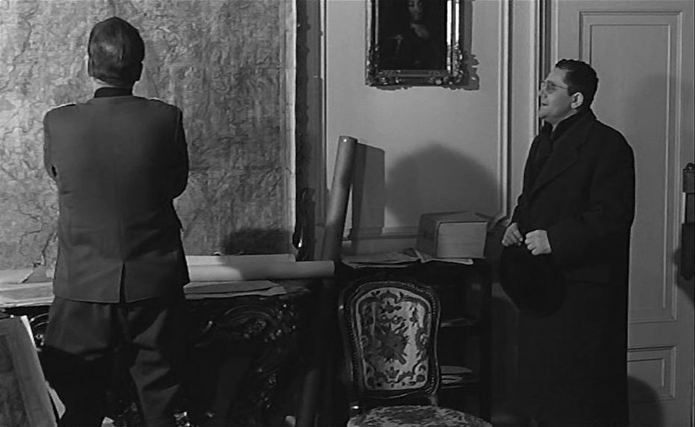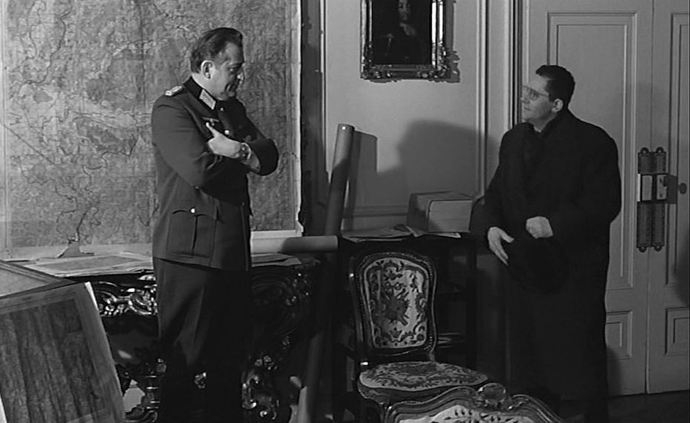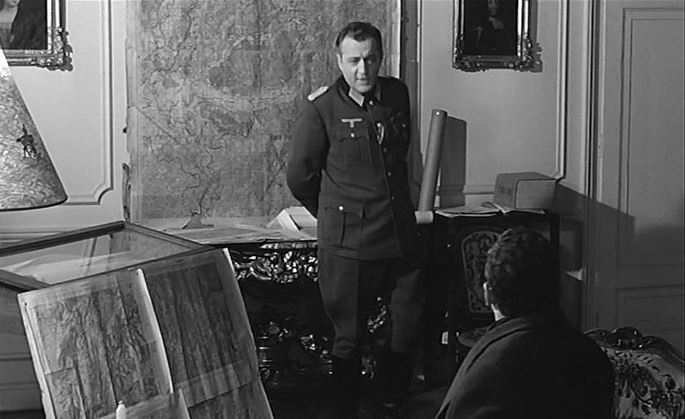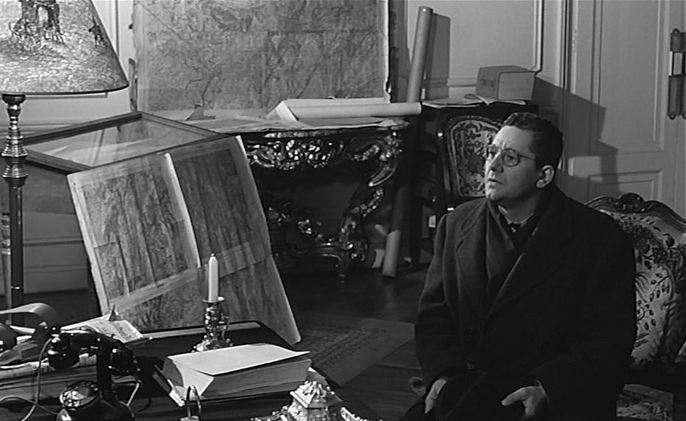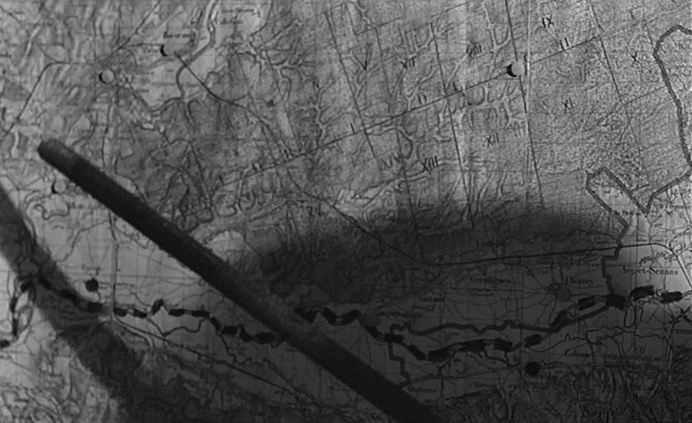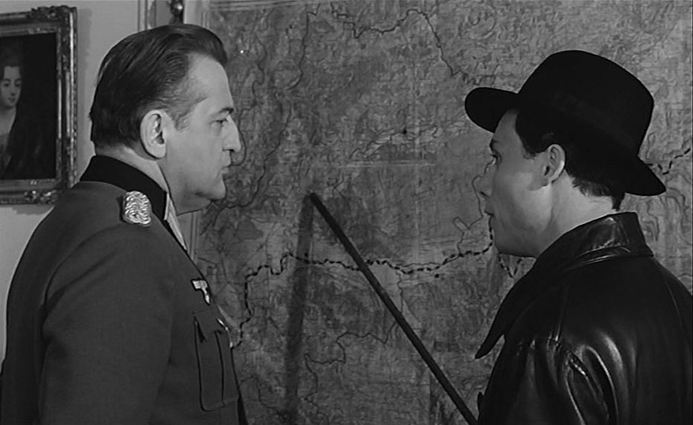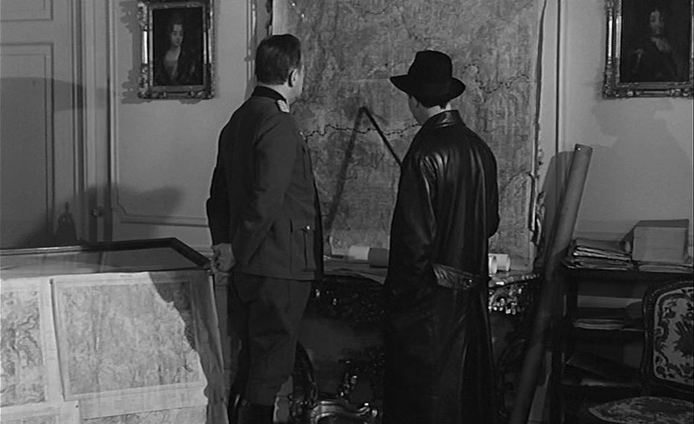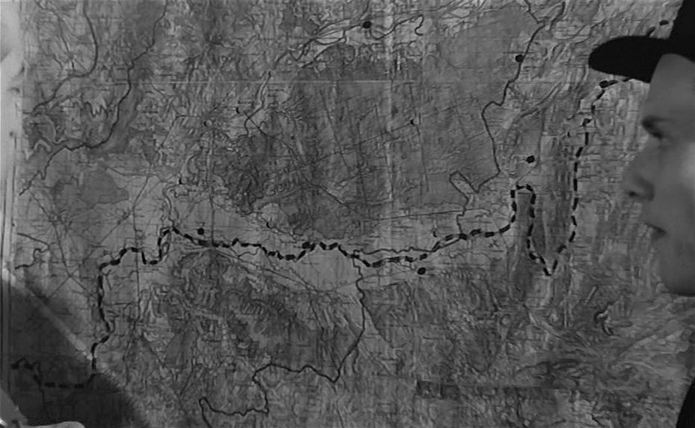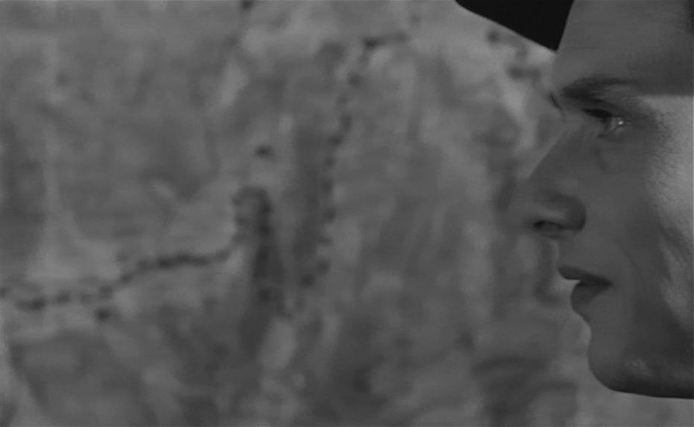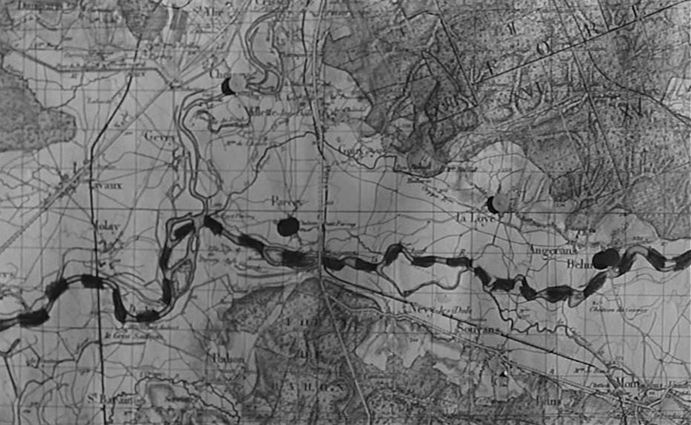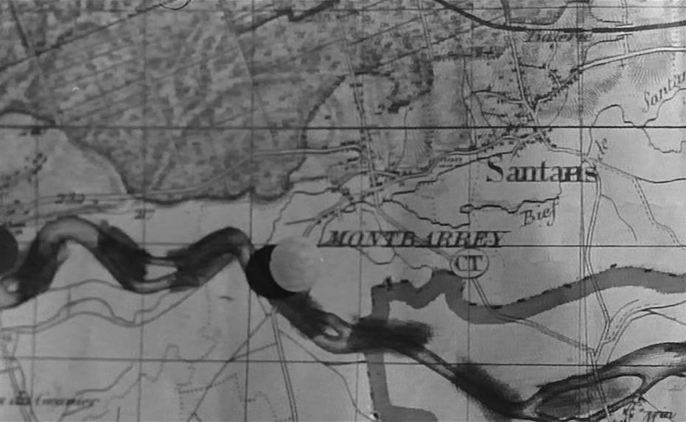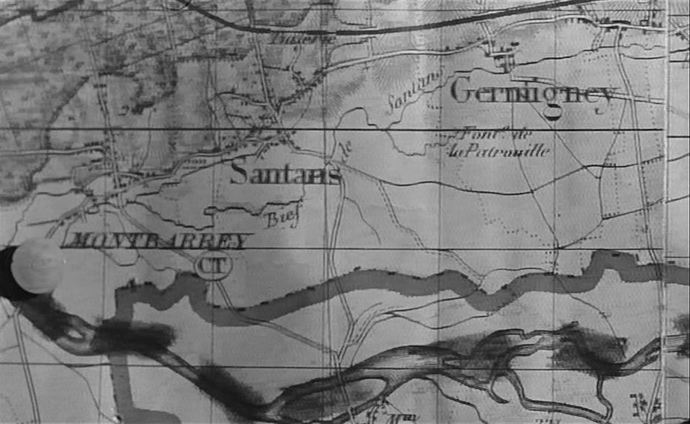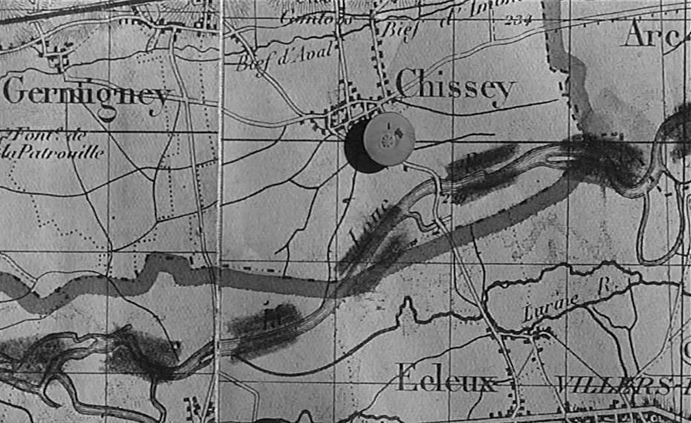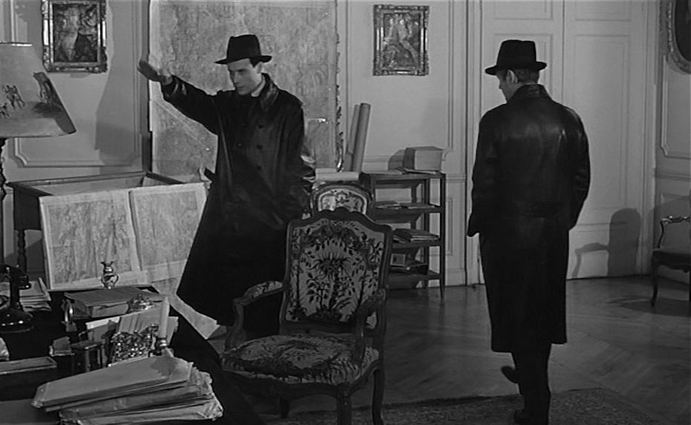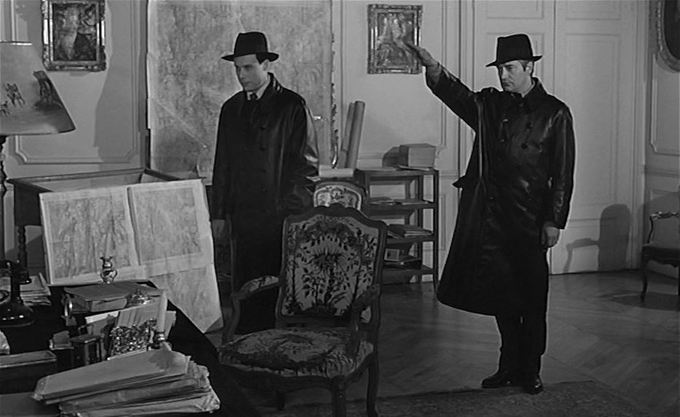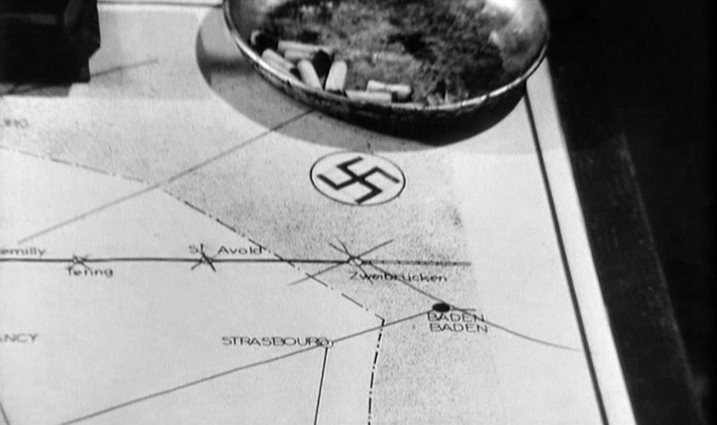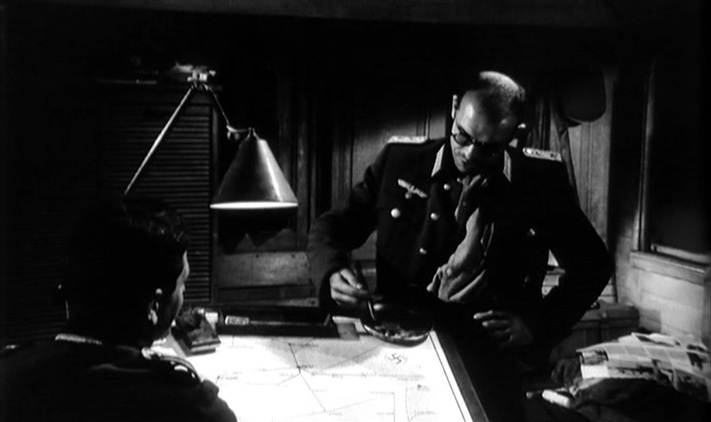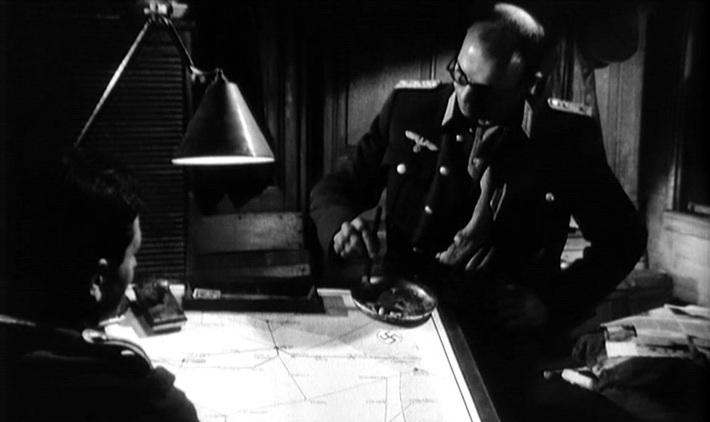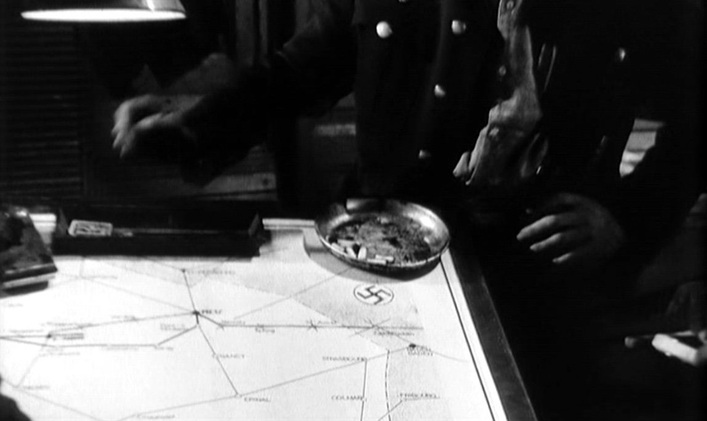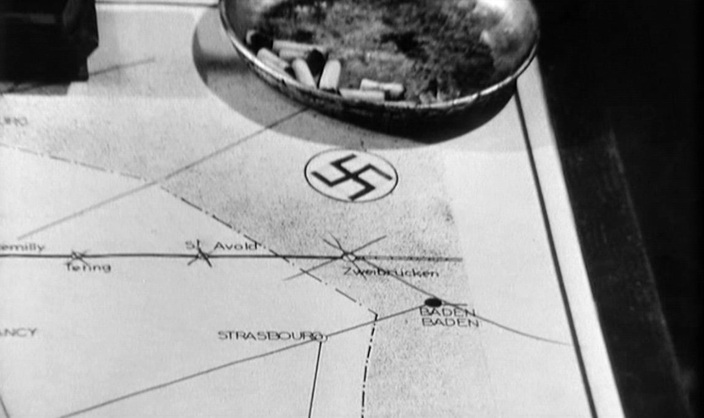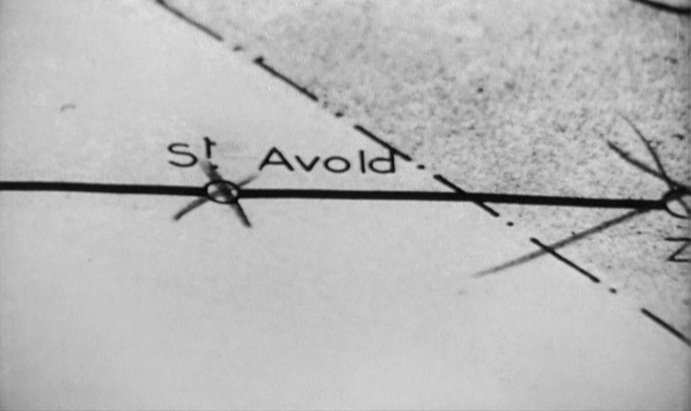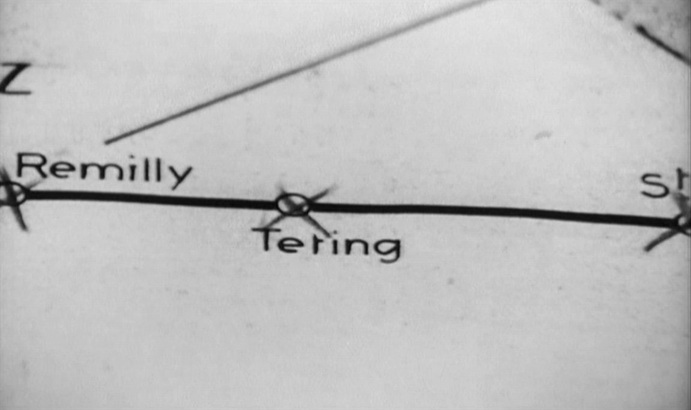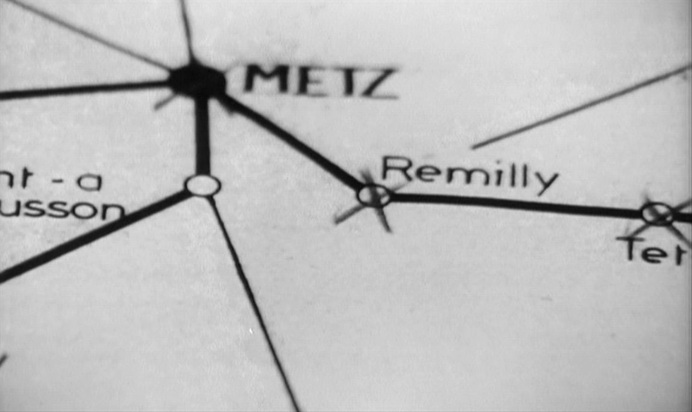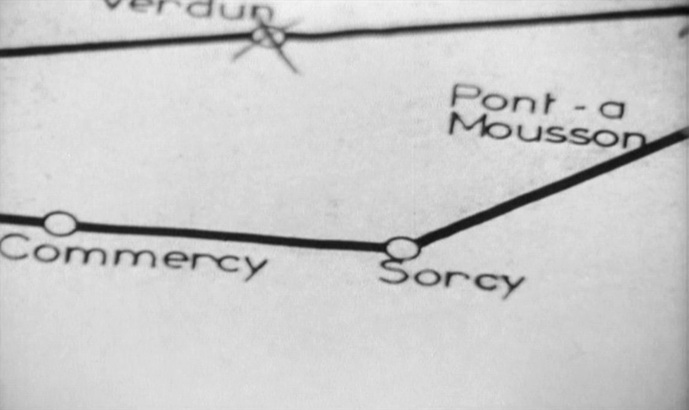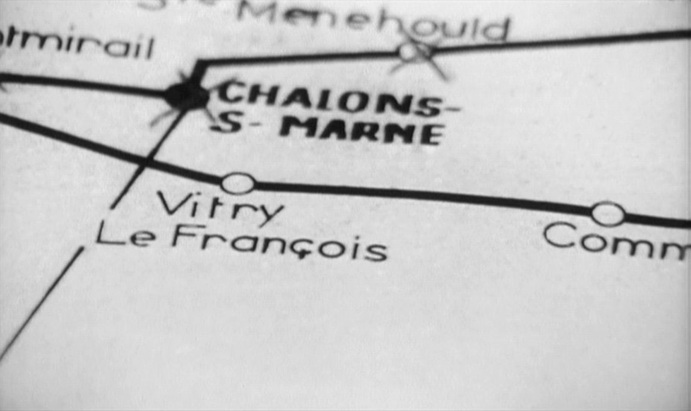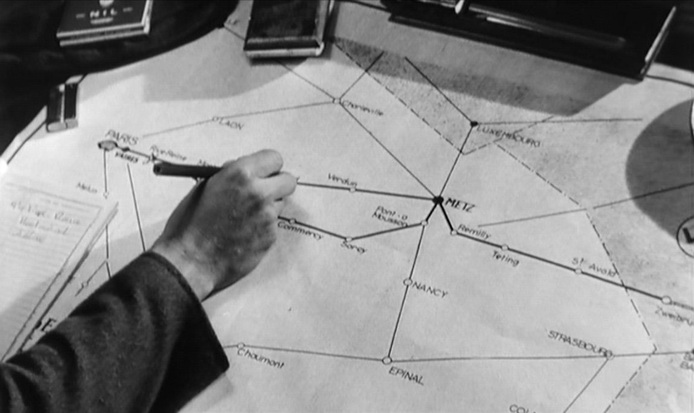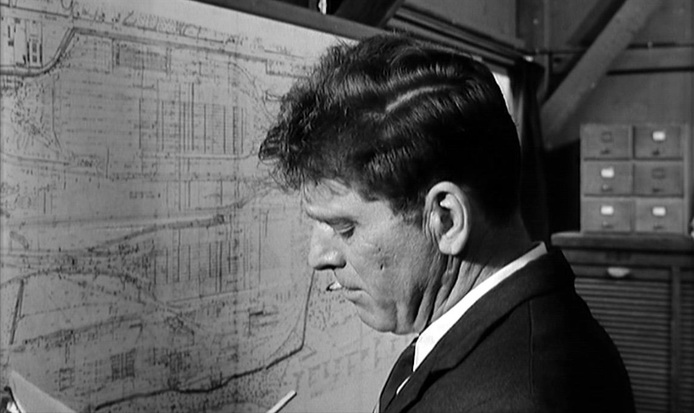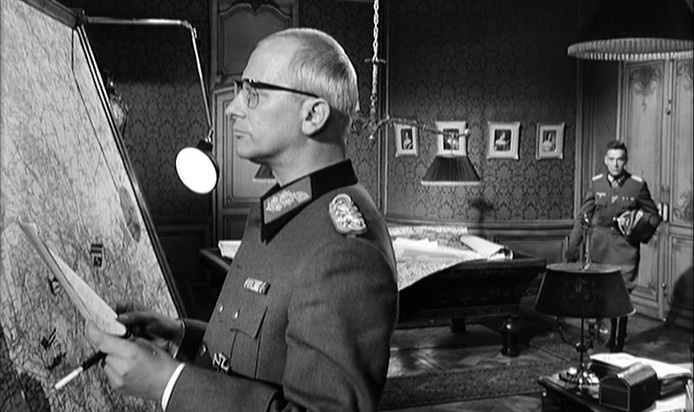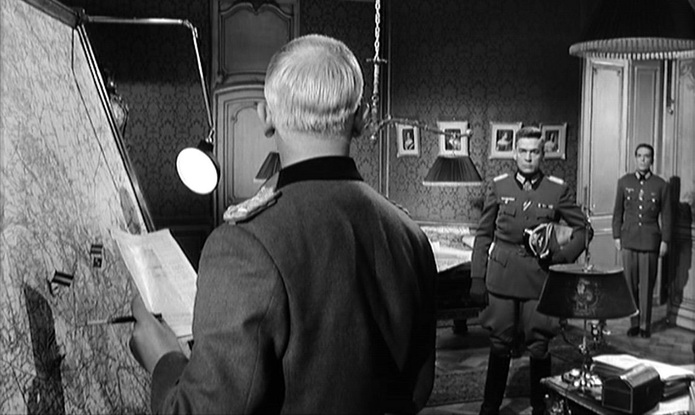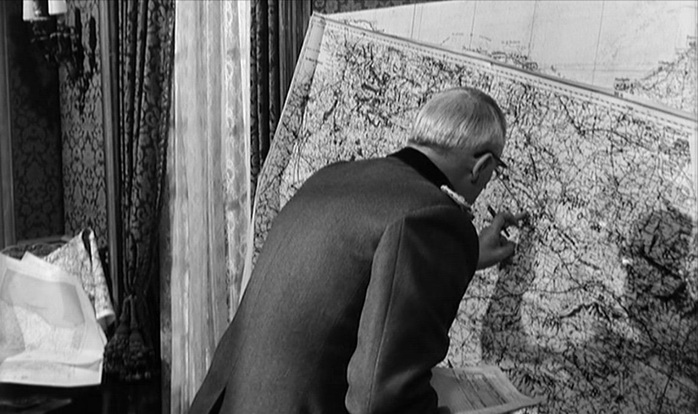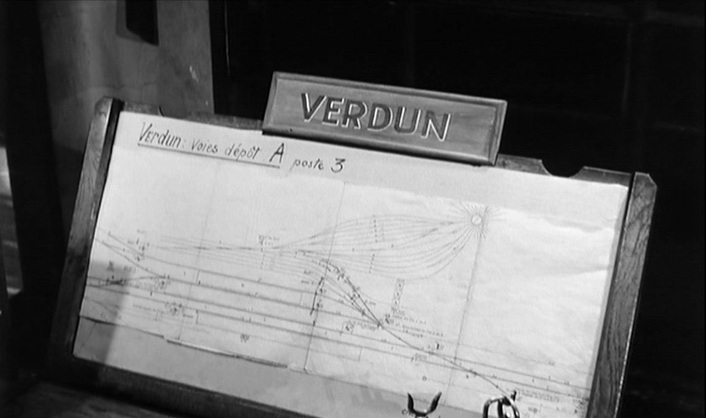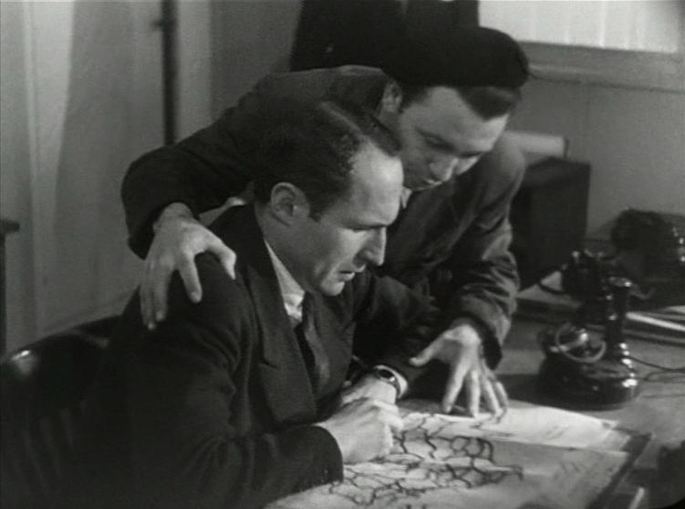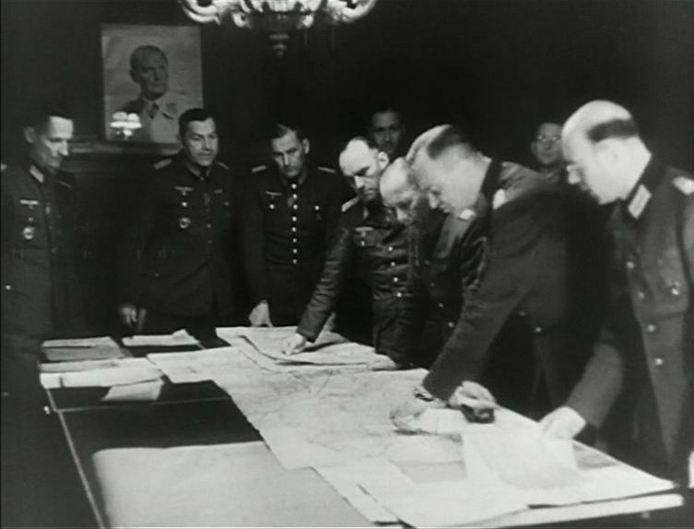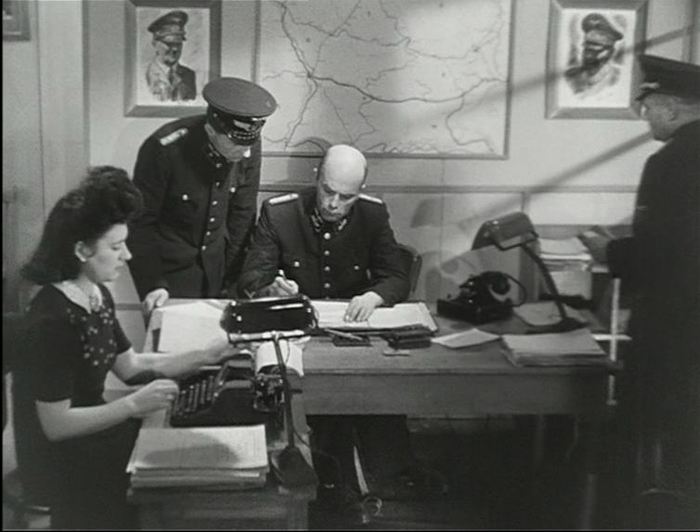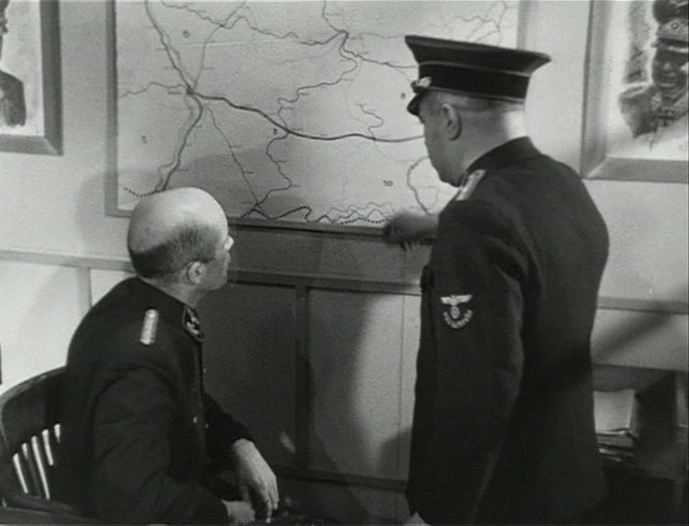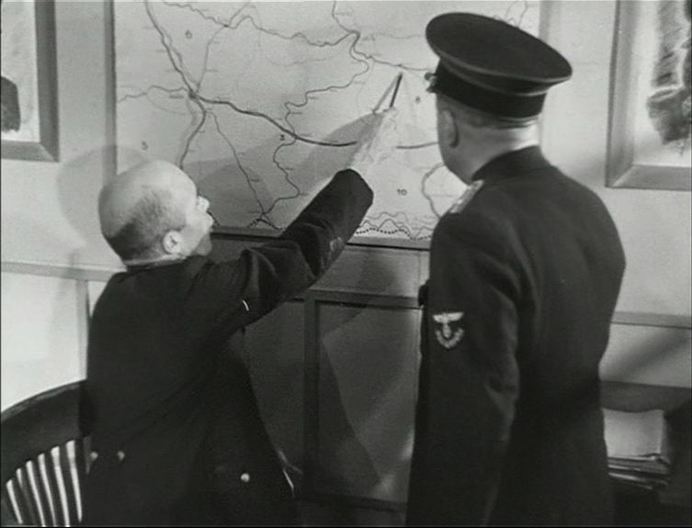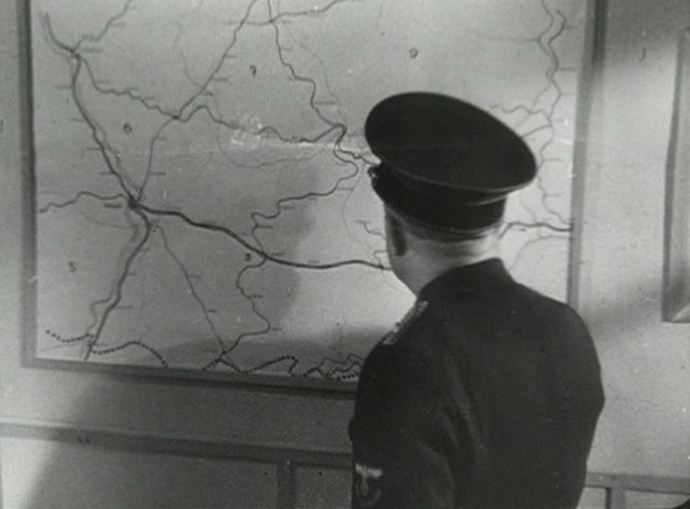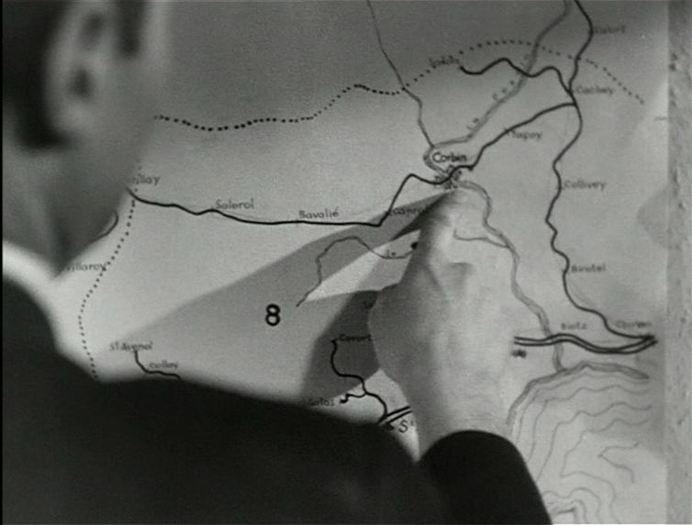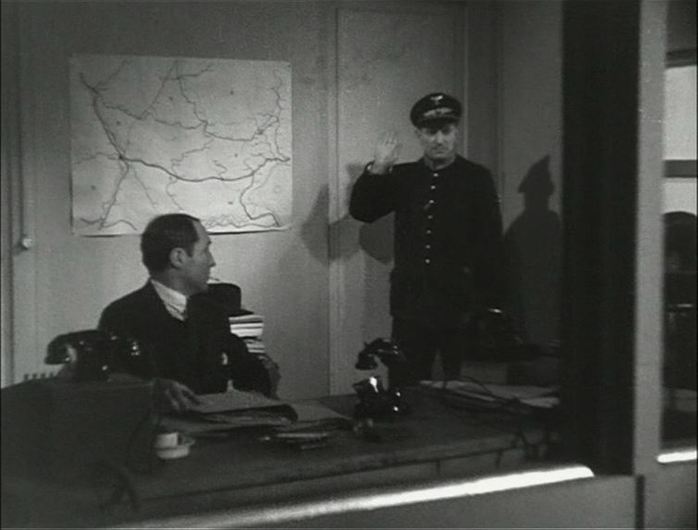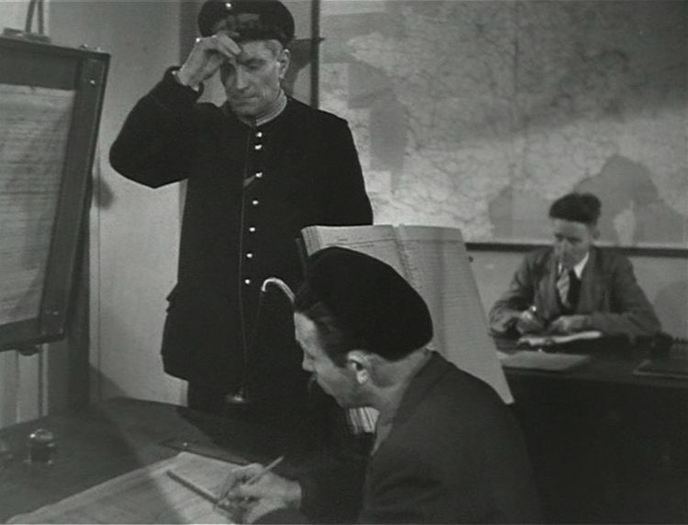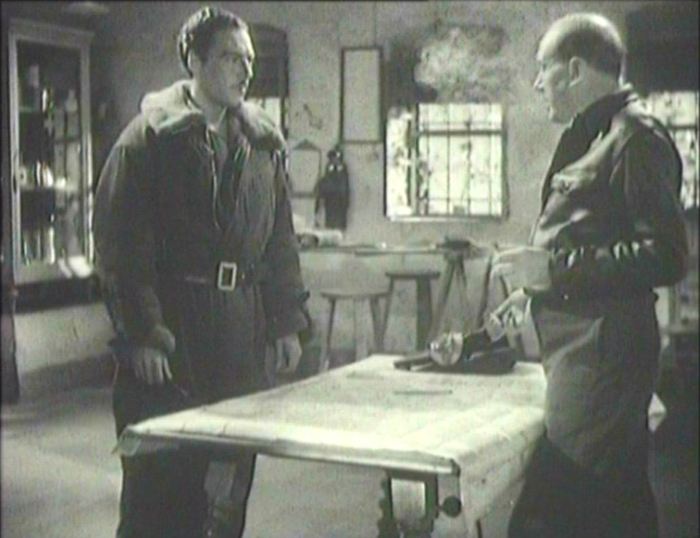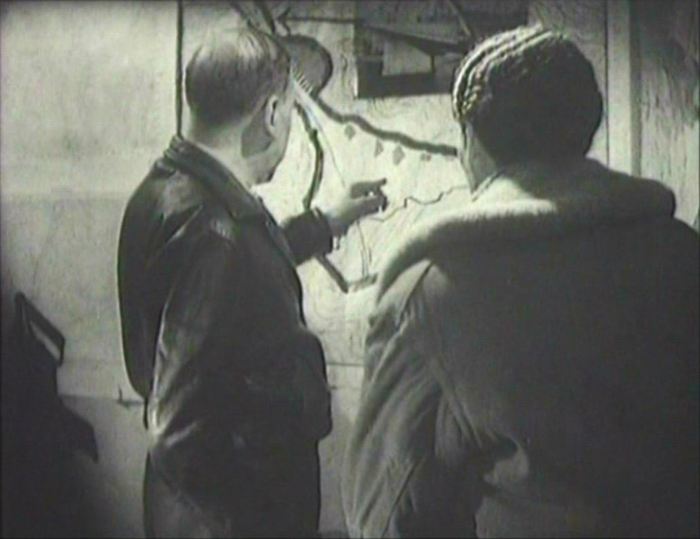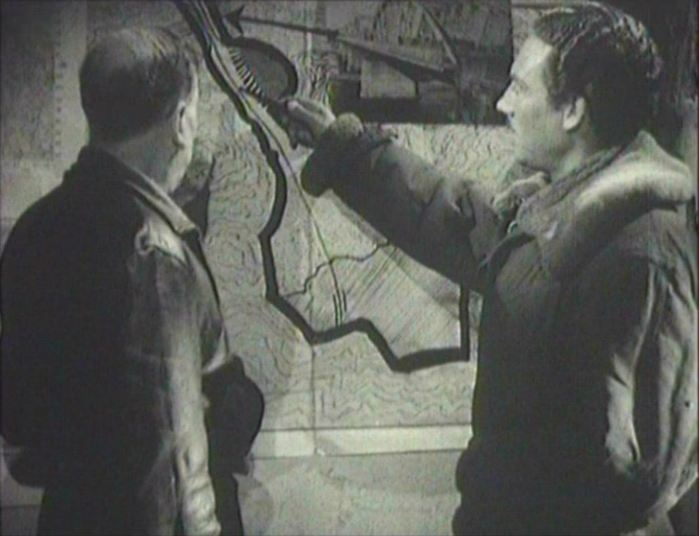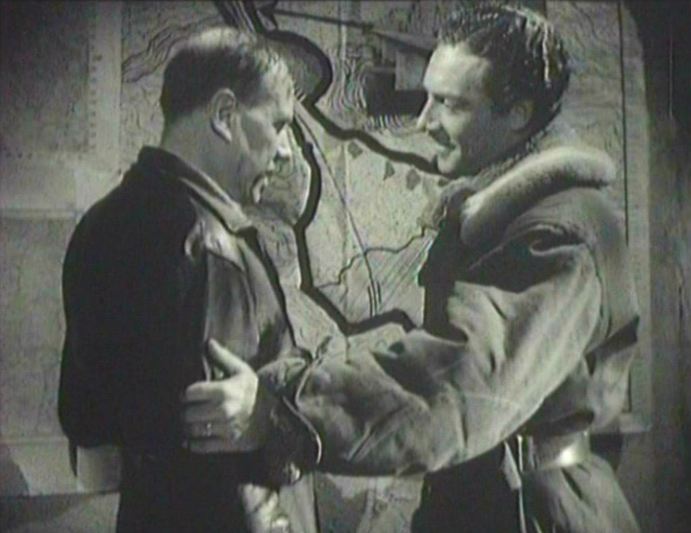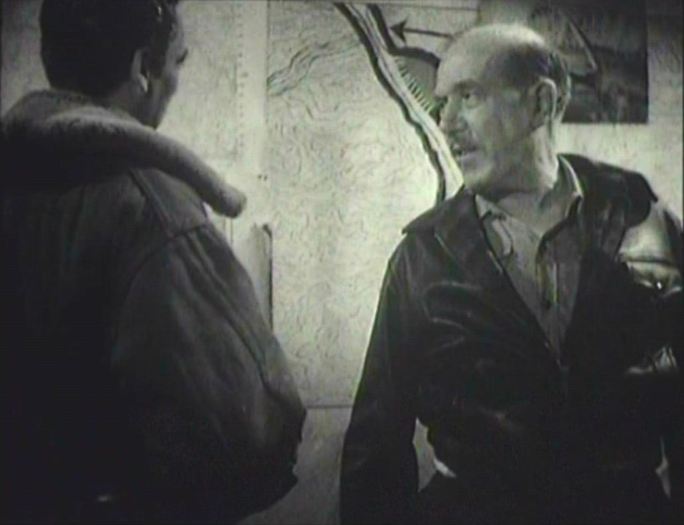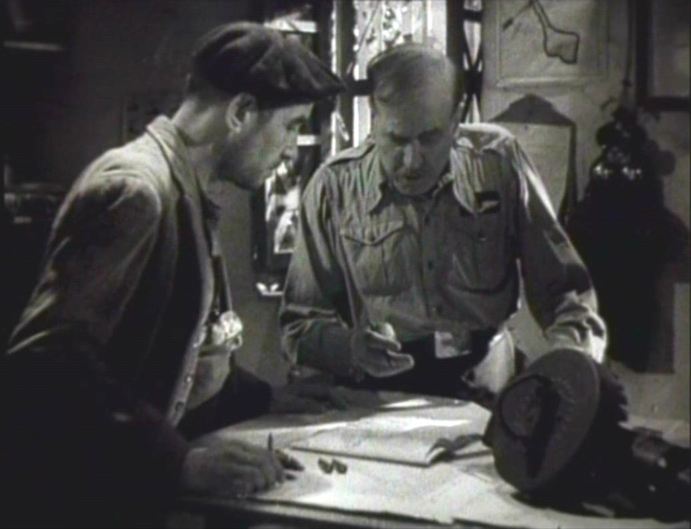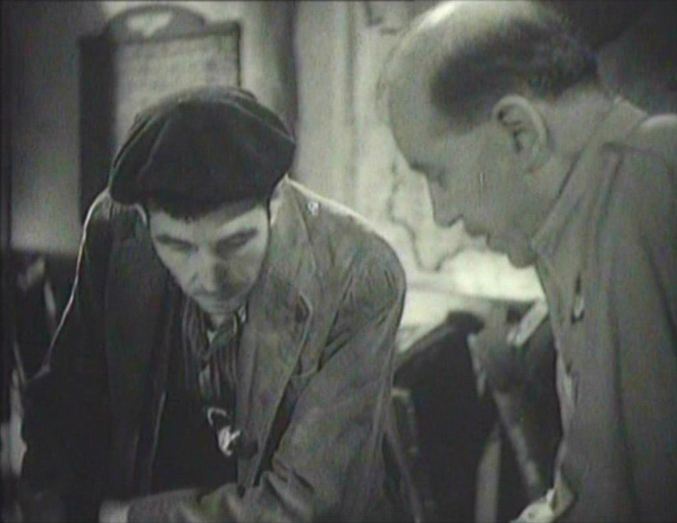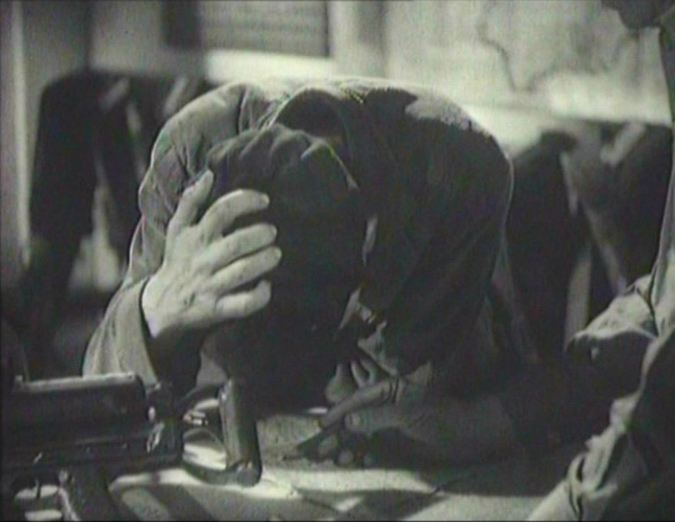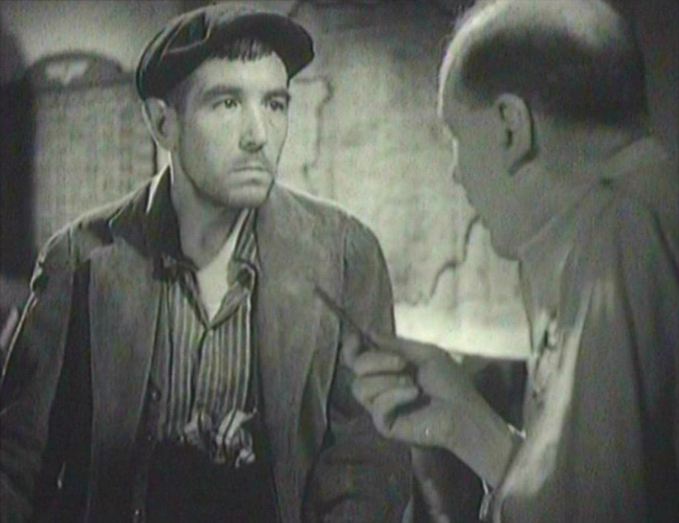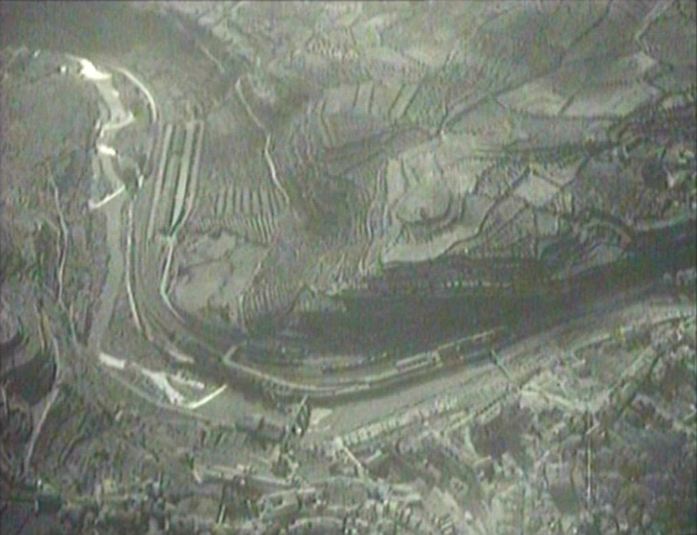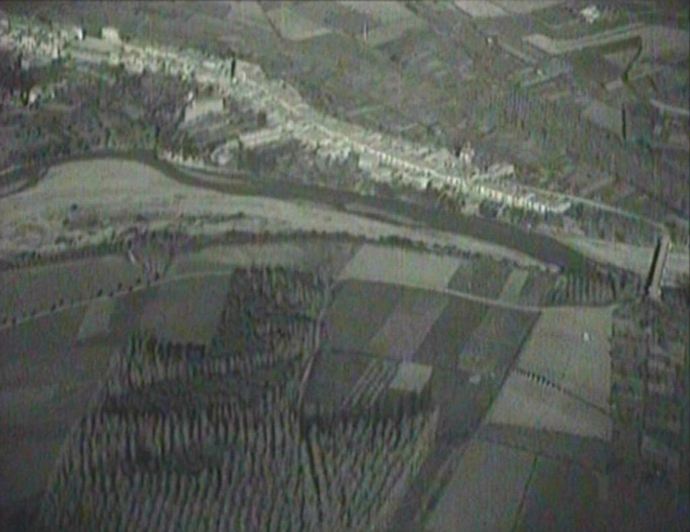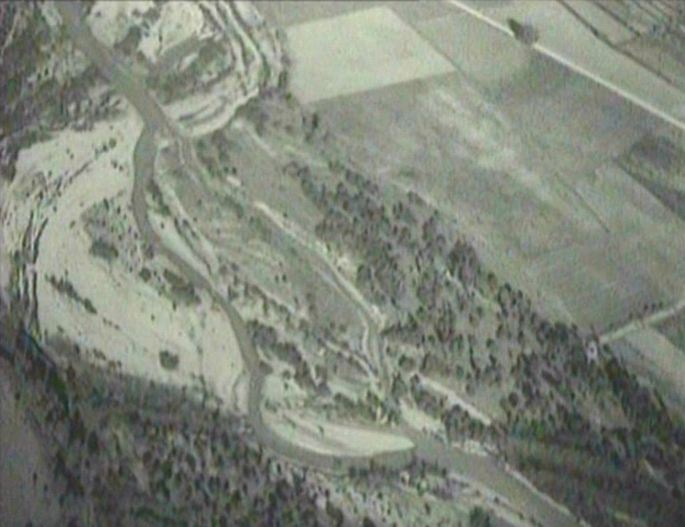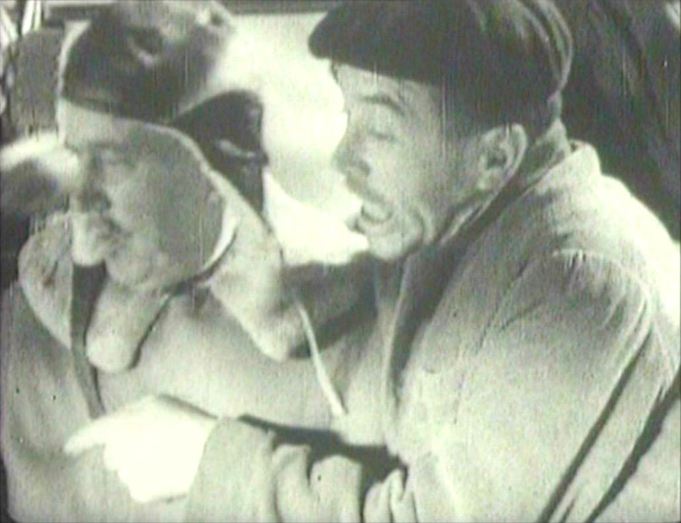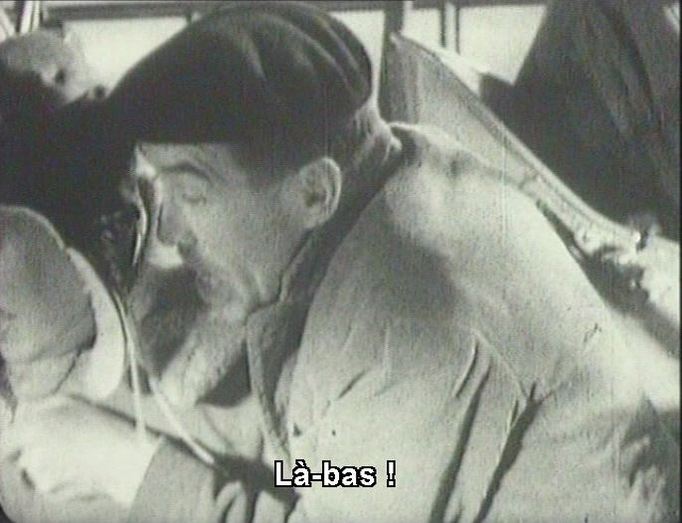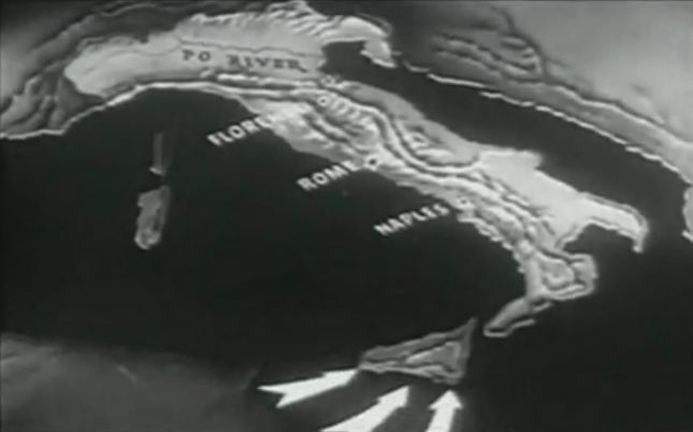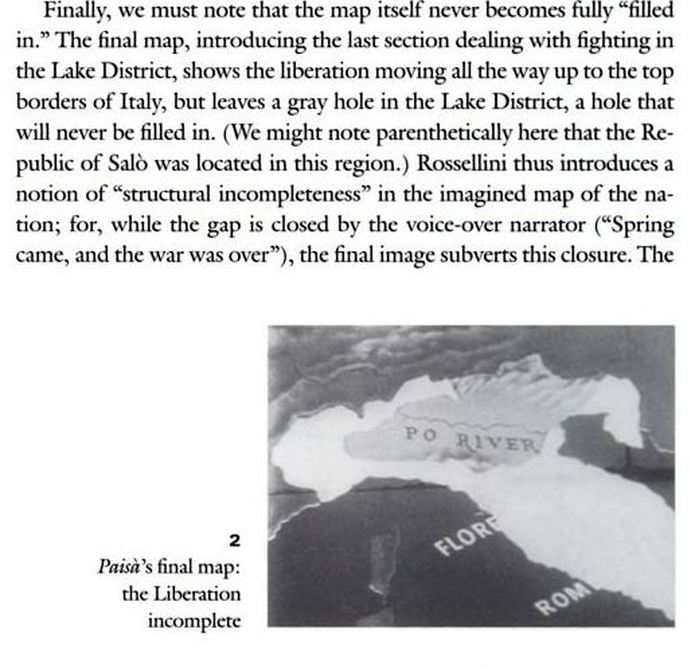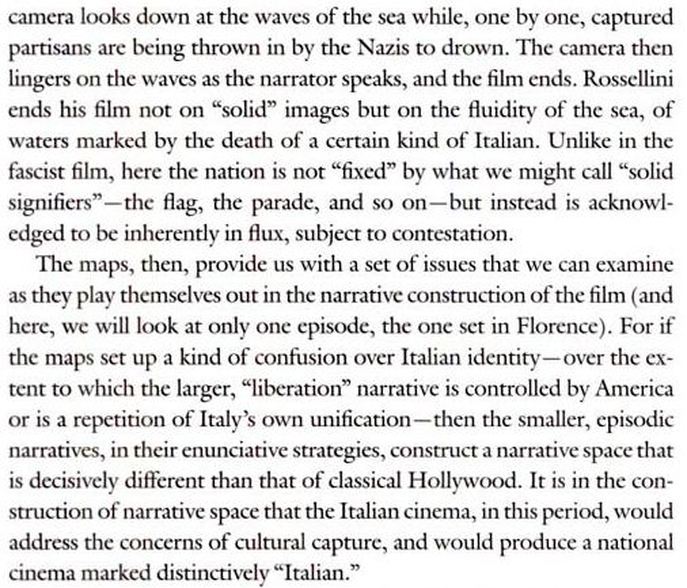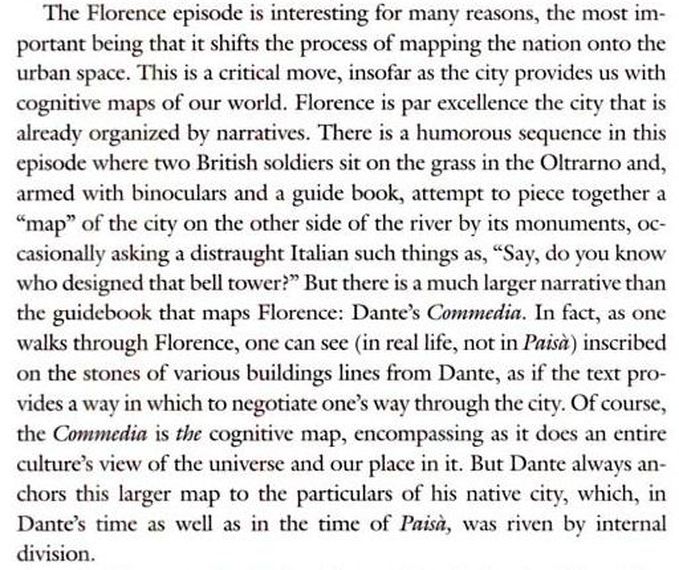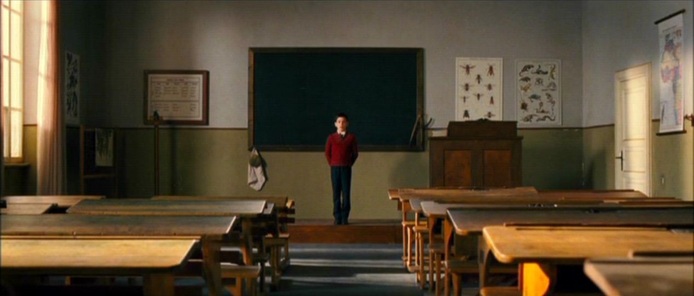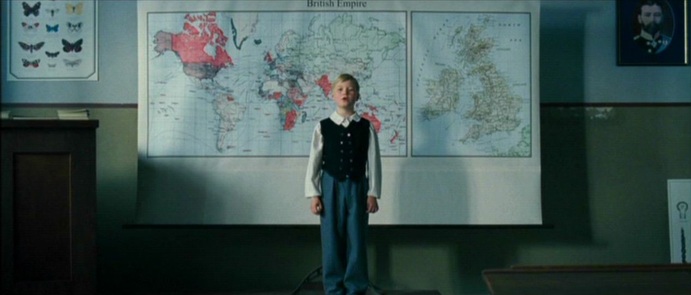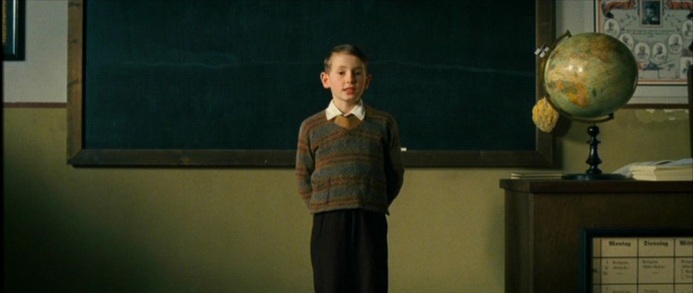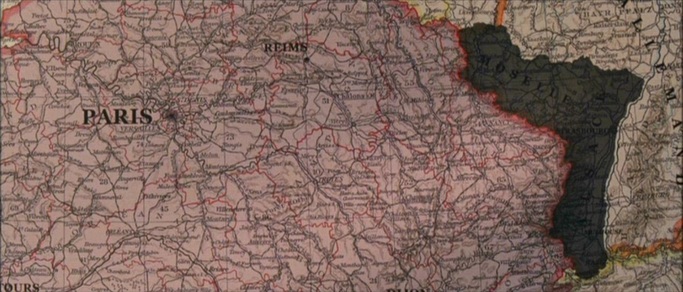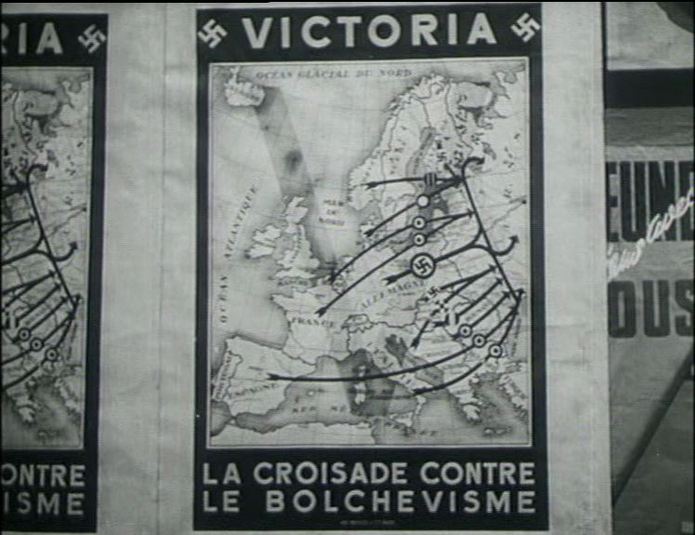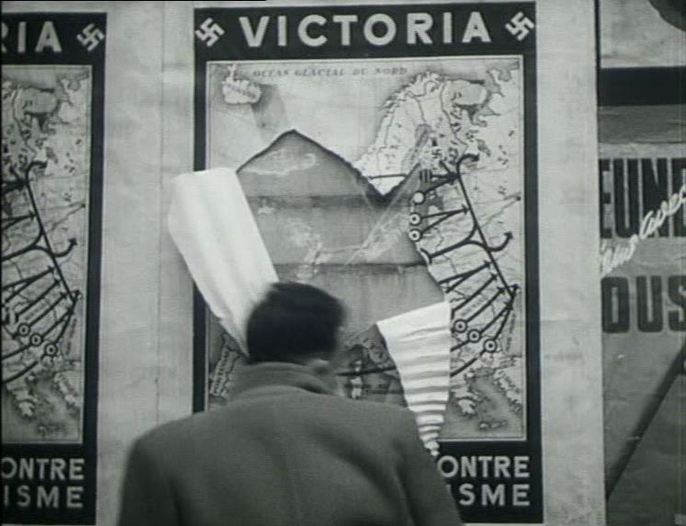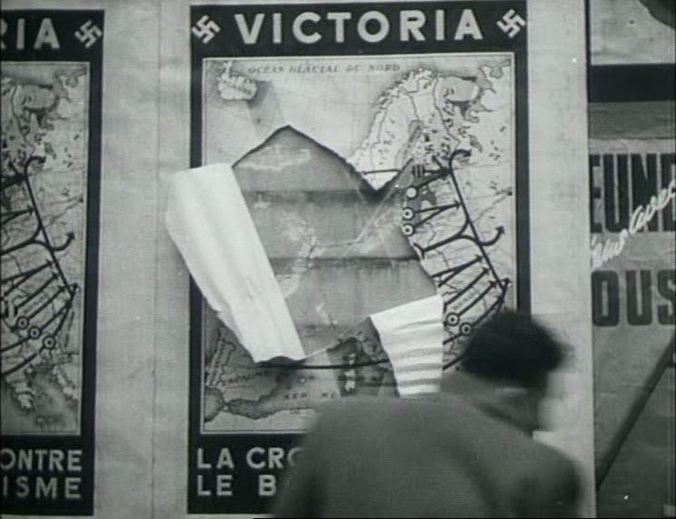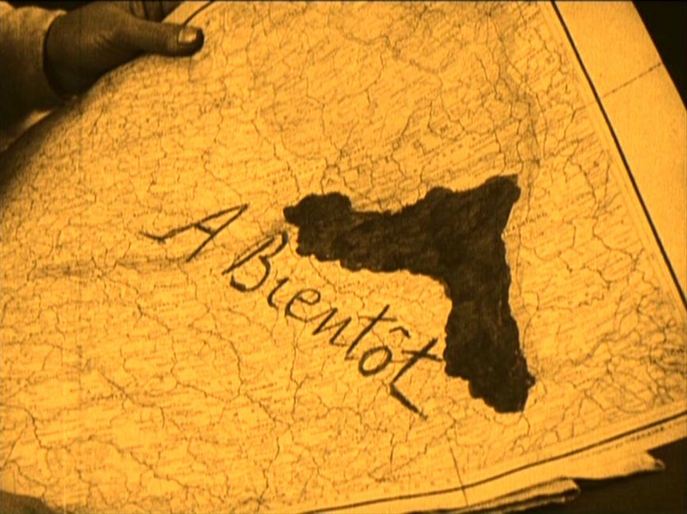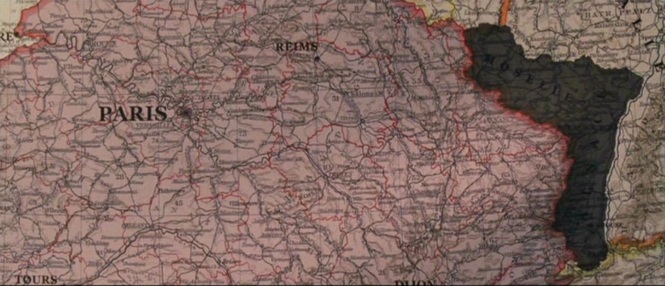Its climax, however, turns on a blinded officer and his father at an advanced observation post communicating the range of an artillery barrage back to the gunners who then plot the distances, presumably with reference to a map:
|
As befits a film that opens with the geographically vague title 'Somewhere in France, 1916', The Road to Glory pays no close attention to the maps in its establishing décor.
Its climax, however, turns on a blinded officer and his father at an advanced observation post communicating the range of an artillery barrage back to the gunners who then plot the distances, presumably with reference to a map:
0 Comments
This fuller view of the map of Europe is coyly withheld for the first half of the film, avoiding that part of Europe to which the allegory most applies (i.e. Germany and Czechoslovakia) until the threatened war breaks out. Until this point we see only fragments of the map, showing Western Europe and the Mediterranean:
Several cinemaps are used to illustrate advances in the campaign, but there is also footage of interested parties consulting maps, as here:
148/ Cross of Iron (Sam Peckinpah 1976): all the maps, & Breakthrough (Andrew V. McLagen 1979)2/9/2011 Unusually for a war film, the maps in Cross of Iron do very little to situate the action, and for a long time we only know vaguely where on the Eastern Front this German unit is (Compare with other war films here, here and here). The first map we see is being studied by Brandt (James Mason) as he muses in general terms about 'this damned country', adding that 'one of these days this land will swallow us up': Later in the same scene, Captain Stransky (Maximilian Schell) is impressed at being offered a glass of German wine: 'a 1937 Moselle in the southernmost corner of Russia', which allows Brandt to brood again about where they are: 'A bottle of Moselle is no more out of place in this region than we are ourselves'. The film's topographical focus is largely this, that the Germans here are out of place. This room is littered with maps, none of which has legible detail: Much later, when Sergeant Steiner (James Coburn) is with his unit in 'no man's land', he consults a map but again we see nothing that identifies the exact locale: Eventually, the film offers the expected scene in which operations are indicated on a map, usually for the benefit of both characters and spectators. The map has legible detail, but only someone familiar with the 'Taman Offensive Operations' during the Battle of the Caucasus in 1943 would be able to situate the German unit we have been following. In fact this map is examined only for the benefit of the characters. A larger view of this map is not much more informative, nor are Brandt's world-weary comments as he points out the improvised train line on the map: A last map in the film is being used by Russian women soldiers when they are attacked by Steiner's unit. Like the previous map, it has been modified in accordance with the immediate military situation. What we can see of the map are only these modifications: Cross of Iron is admired - especially by enthusiasts of militaria and weaponry - for its accuracy of detail, and more broadly for its realism. The use of maps as décor is a conventional realism, but the lack of a discursive topographical frame, leaving the spectators in greater than usual confusion as to where they are, is a refinement of realism.
Andrew V. McLagen's 1979 sequel to Cross of Iron is much more conventional in its presentation of maps, especially when its action shifts from the Eastern to the Western Front. It also has a voice over giving an historical overview of the action presented, alleviating spectator confusion. (Breakthrough is not generally admired for its realism, nor for its accuracy of detail.) The map above, from the credits of a contemporary newsreel about the making of the film, allows for several possibilities as to the film's specific Pacific location. The Hawaiian island Kaua'i (hidden by the letter 'P') provided most of the exteriors for South Pacific, and is now a prime site of cine-tourism, with guided visits available to the shoot's locations. The narrative is set further West and South, with the maps in the film's principal map room pointing us to the Solomon Islands and Vanuatu (just below the letter 'T' in 'South'): When the action builds towards a climax involving one specific island, a map of it is scrutinised: A later scene shows the same map being looked at even more closely. Looking at it closely myself, I'd say this is the island called Pulau Siberut, off the west coast of Sumatra, opposite Padang. That would make no sense topographically, but at this point in the film the relevant detail is that it is an island, simply: The action of various parties is shown as coordinated through their reference to related maps: There is one more map in the film, an element in the décor of the Thanksgiving Show put on for the entertainment of servicemen:
This is a rare occasion where a map appears in the footage shot by George Stevens Sr. Episodes in this compilation are linked by cinemaps: The climactic meeting of Americans and Russians at the Elbe is marked by a cartographic representation in the mise-en-scène: two soldiers standing on a globe.
The third in the Harry Palmer series is still deriving material out of its difference from Bond. The map of London on the wall of Palmer's dingy office contrasts with the world maps on walls in early scenes of Bond films. Now a private detective, Palmer's sphere of activity is local, not global. When Palmer does travel, he faces the un-Bondlike challenge of finding on a map an address in a phone book. Ou maps pull back from this exactly pinpointed address in Helsinki to a more general view of the Baltic region, and even when - in Ed Begley's centre of operations - we have the familiar world map that signifies megalomania, the Baltic region is marked by a concentration of lights. In a further contrast with the Bond corpus, Syd Cain's operations rooms in Billion Dollar Brain are deliberately modest affairs compared with, for instance, the spaces created by Ken Adam for that year's Bond film (even if that is clearly the same map on the wall, above and below - both scenes were shot at Pinewood) : For its climax Billion Dollar Brain shows opposing forces plotting the final confrontation, each on their own maps: These last two map scenes both show humans attempting to arrange the world my arranging things on maps. This is the complement of the film's nature motif (as in the Alexander Nevsky-like climax on the ice). Human endeavour vs untamable nature is an opposition neatly foregrounded in this dissolve from the penultimate to the last sequence:
‘The evasion of reality is marked by Clive's two- dimensionalisation, as his substantial form is replaced on the screen by an ephemera, a walking shadow, an apposite nod to Macbeth, perhaps, for consequent upon the loss of his love, Clive's hunting life is a sound and a fury, a rampaging safari, signifying nothing. A similar montage immediately after the death of Clive's wife Barbara reinforces the point. Its status as a denial of historical progress is made clear as this second speeded journey through the inter-war period culminates in 1938 with a map of Munich and strains of the German national anthem. Clive later hangs Barbara's portrait in the 'den' along with his other trophies, emphasising what is now clear. It replaces, rather than proves, virility, and undoes Clive's self-appointed status as masculine epic hero.’ Andrew Moor, Powell & Pressburger: a Cinema of Magic Spaces (London: I.B Tauris, 2005), p.75 A 'Map of Lower Egypt and the Fayum' is the background to a scene from the time of Clive's 'masculine epic heroism': Maps of London are in the foreground of the events that will lead to his final emasculation:
To bring to a close the theme of the last few days, this is a selection of more Nazis with maps. A film about a line drawn on a map, continuing the 'Nazis with maps' theme of the last few days. All of the maps are in the one room.
‘The long section devoted to the German convoy, for example, starts with a shot of the Resistance leader looking at a map, cuts to the German command looking at another map, cuts to the Transport Kommandantur, where two German officers consider a railway map and then fades to the same map, but this time being studied by two Frenchmen. The montage and continuities of content clearly establish an equivalence between the German and French leaderships. This equivalence will be underscored by subsequent cross-cutting between the two commands.’
Martin O’Shaughnessy, ‘La Bataille du rail: Unconventional Form, Conventional Image?’, in Nancy Wood & Rod Kedward (eds), The Libertation of France: Image and Event (Oxford: Berg, 1995), pp.20-21. The only maps in Espoir are in an operational headquarters. An early sequence, three minutes in, establishes the interpretation of maps as a key to military strategy. Later, a local who has specific knowwlege of an enemy base, but no knowledge of maps, isn't able to point to the place on a map. As a consequence, he has to go with the bomber crew so that he can point to it in reality. Viewing his world from the air for the first time, the terrain is as unfamiliar and unreadable as the map, and it seems the mission will have to be aborted. But finally, in a moment of apotheosis, he is able to say: ‘it is there’, and the mission can be accomplished.
Angelo Restivo, ‘Neorealism and the Stain’, in The Cinema of Economic Miracles: Visuality and Modernization in the Italian Art Film (Durham NC: Duke University Press, 2002), pp. 29-30:
‘After a credit sequence showing belle époque photographs three “nationalist” recitations are juxtaposed, before a map presents insistently the gaping wound that is Alsace Lorraine: the lies of propaganda, the desire for revenge, and then there is war.’
Corinne Françoise-Denève, ‘Retour de flamme: Grande Guerre et cinéma français dans le nouveau siècle’, in Carola Hähnel-Mesnard, Marie Liénard-Yeterian, Cristina Marinas (eds), Culture et mémoire: représentations contemporaines de la mémoire dans les espaces mémoriels, les arts du visuel, la littérature et le théâtre (Palaiseau: Les Editions de l’Ecole Polytechnique, 2008) p. 186. ‘The poster for the Reich’s European programme, with a large V sign (Victoria) and discrete swastikas, on which the volunteer units from all of the continent’s occupied or satellite countries converge towards the East.'
Yves Durand, Histoire de la Deuxième Guerre Mondiale (Paris: Editions Complexe, 1997), p.508. ‘It’s a real battle of the Vs. The Germans, in response to English propaganda, have decreed that the V will be the sign of German Victory. Everywhere they have raised big white flags bearing a monumental V, put up red posters with a black V above the swastika. V stands for Victoria, and Victoria is apparently an old German word. But people just ask themselves what is this new brand of Cherry, or think of the Queen oF England, and they continue to cut Vs, Hs (for ‘Honour’) or ‘croix de Lorraine’ into their métro tickets. The pavements are covered with them.’ Jean Guéhenno, ‘25.7.1941’, Journal des années noires, 1940-1944 (Paris: Gallimard, 1947), p.193. ‘Alsace Lorraine was not returned to France until the 1919 treaty of Versailles. While today's maps show no evidence of the shifting borders that these events have produced, the very name of the country continues to carry all of these events and the differing concepts of "France" that they have occasioned.’
Rick Altman, Film/Genre (London: BFI, 1999), p.69. There are two other maps in the film: here and here. And below is a similar map from a film made eighty-six years later, Christian Carion's Joyeux Noël (2005): 'In the opening sequence of It Happened Here Britain is shown joined seamlessly with continental Europe. The arrows of Nazi progress overrun everywhere. The film's ceaselessly chilling effect starts with an attack on the most familiar way the British defend the borders of their idea of nationhood: as an island.’
Katherine Shonfield, Walls Have Feelings: Architecture, Film and the City (London: Routledge, 2000), p.17. |
|
